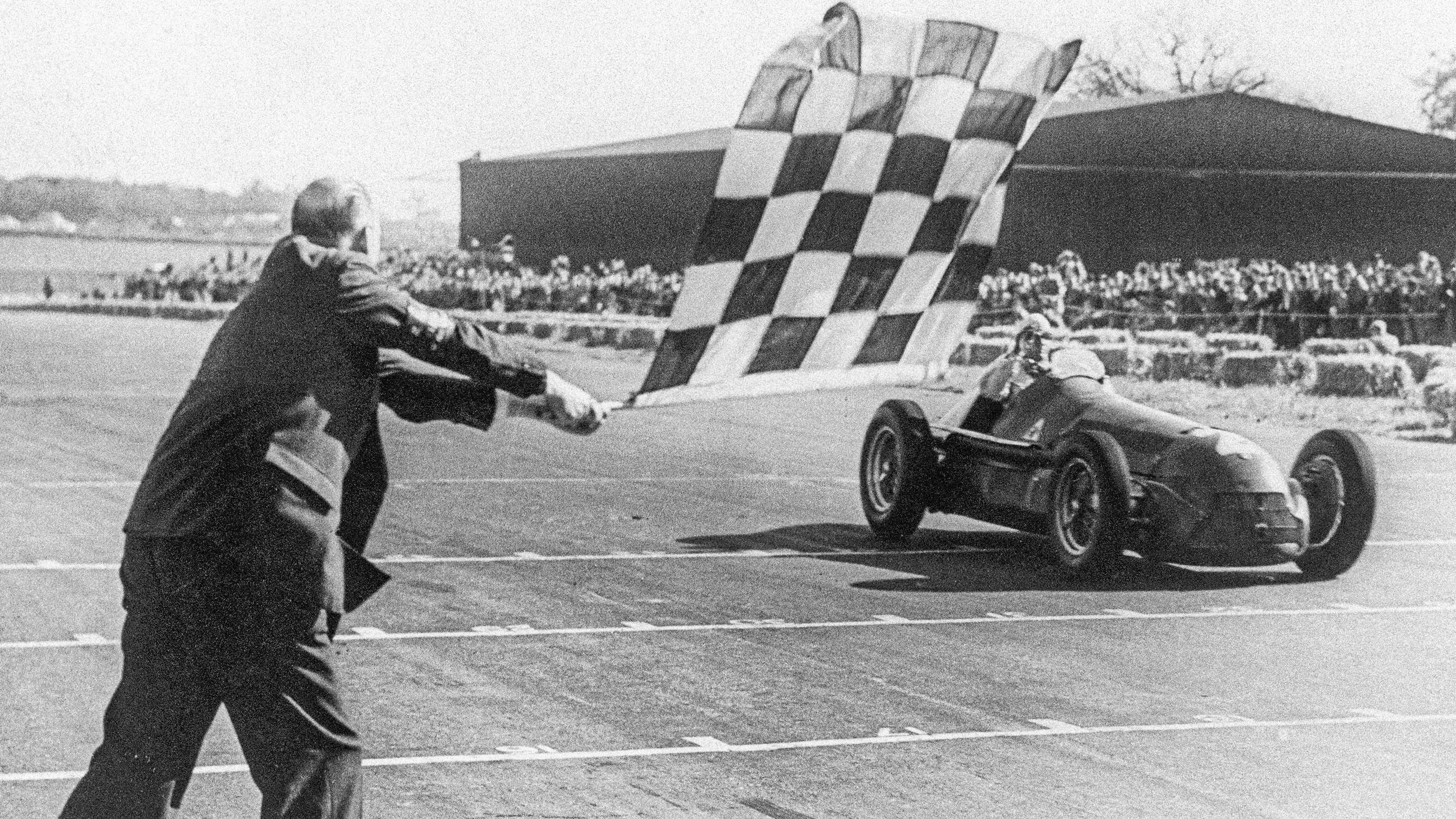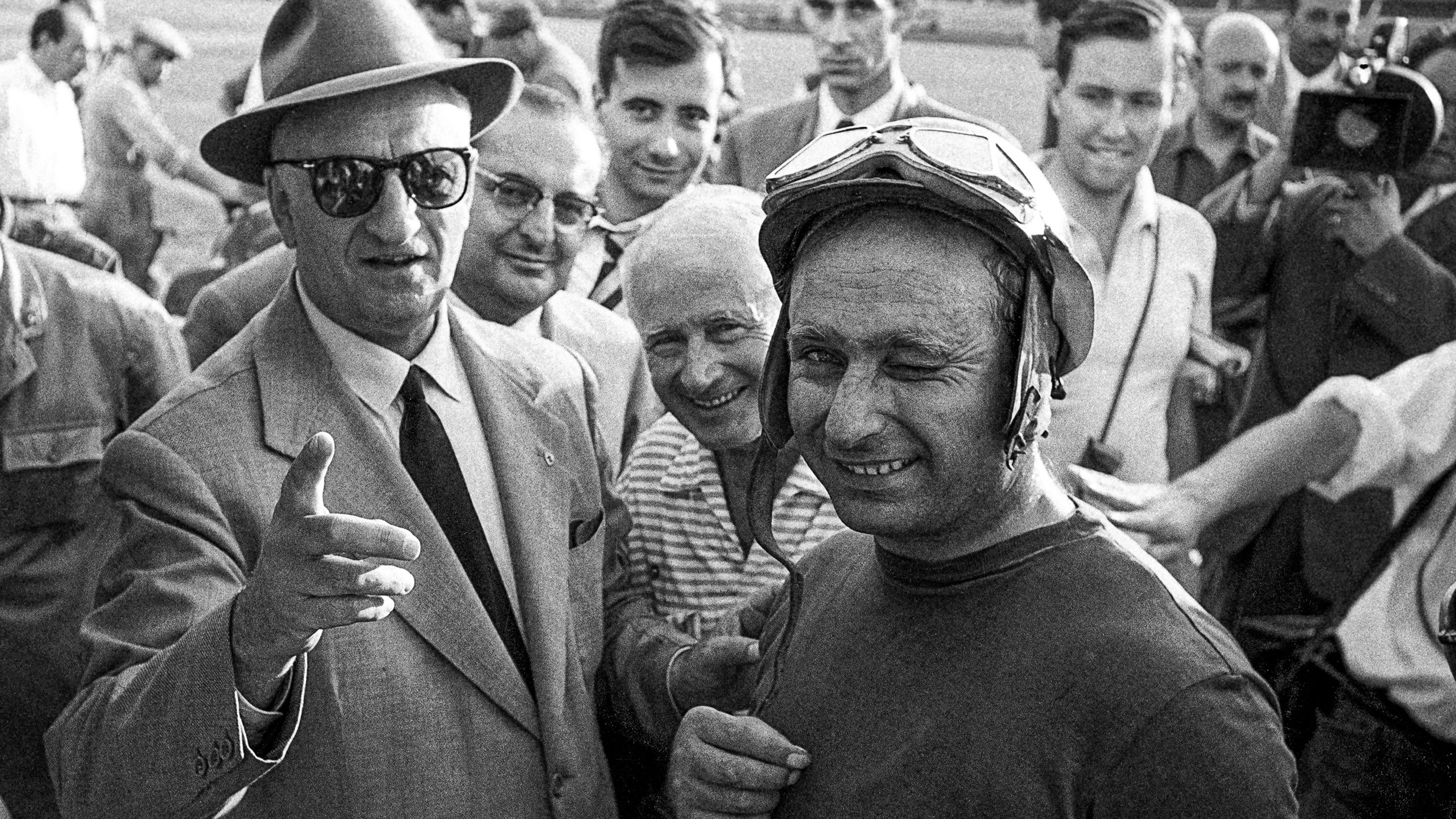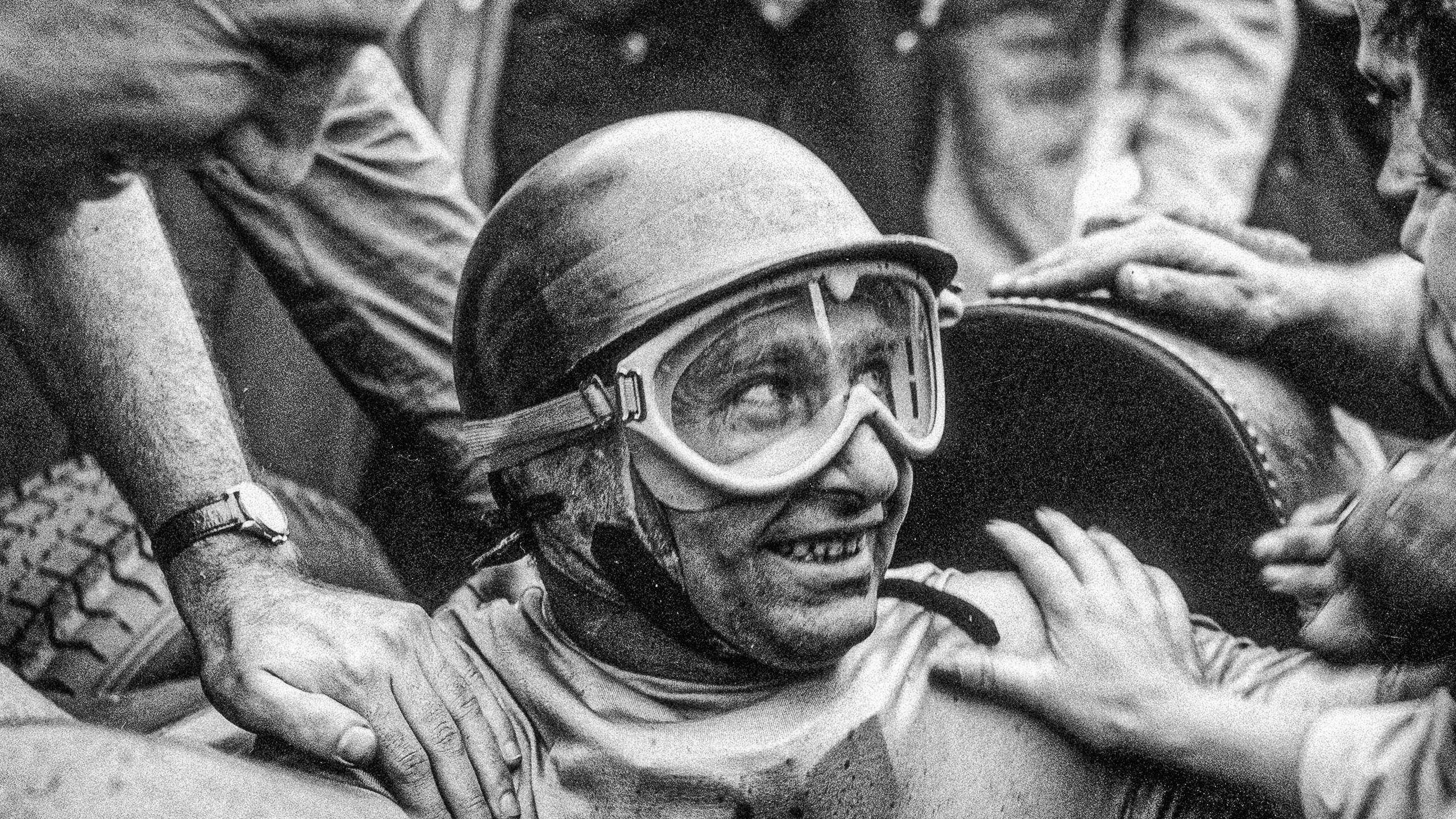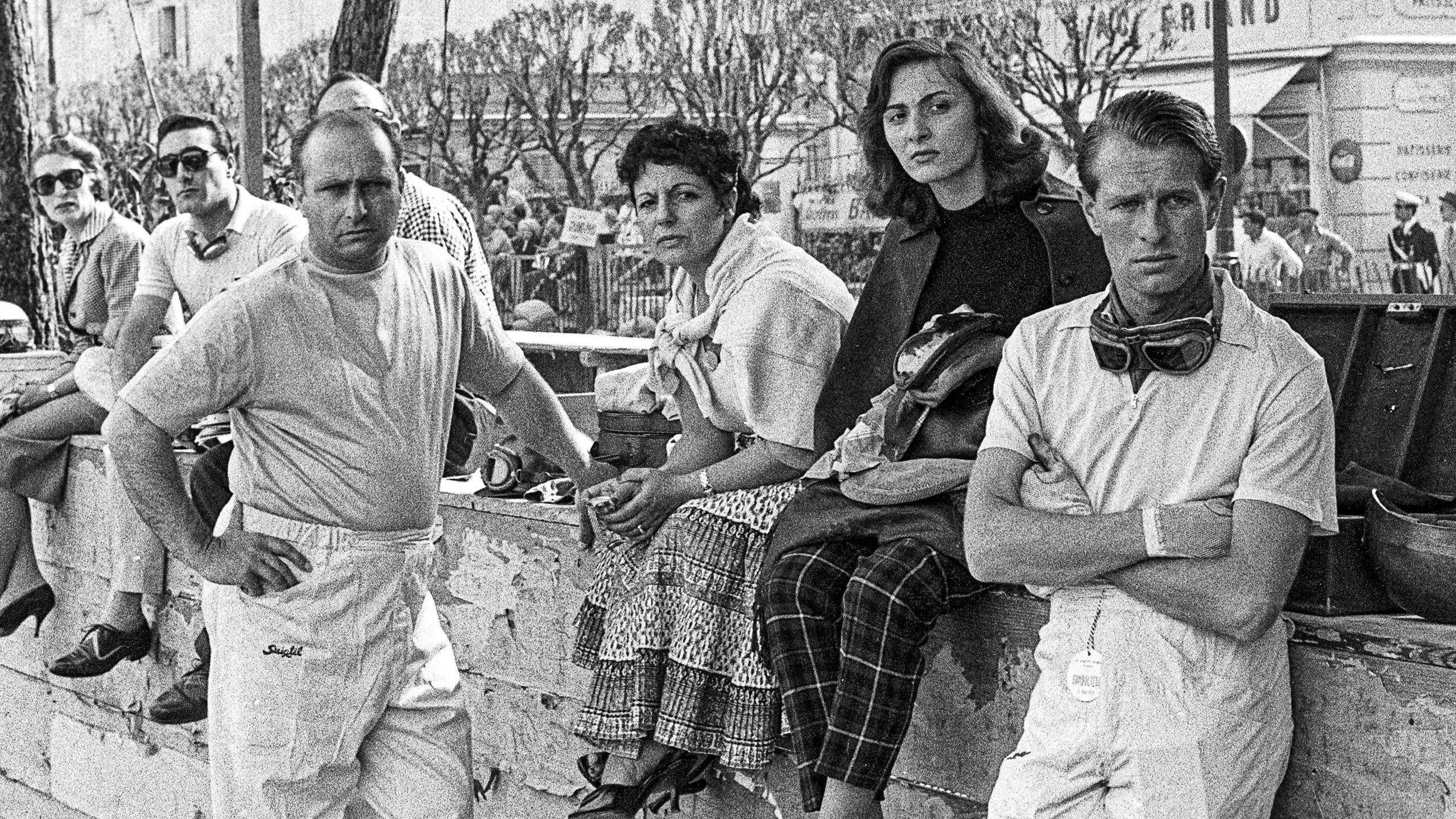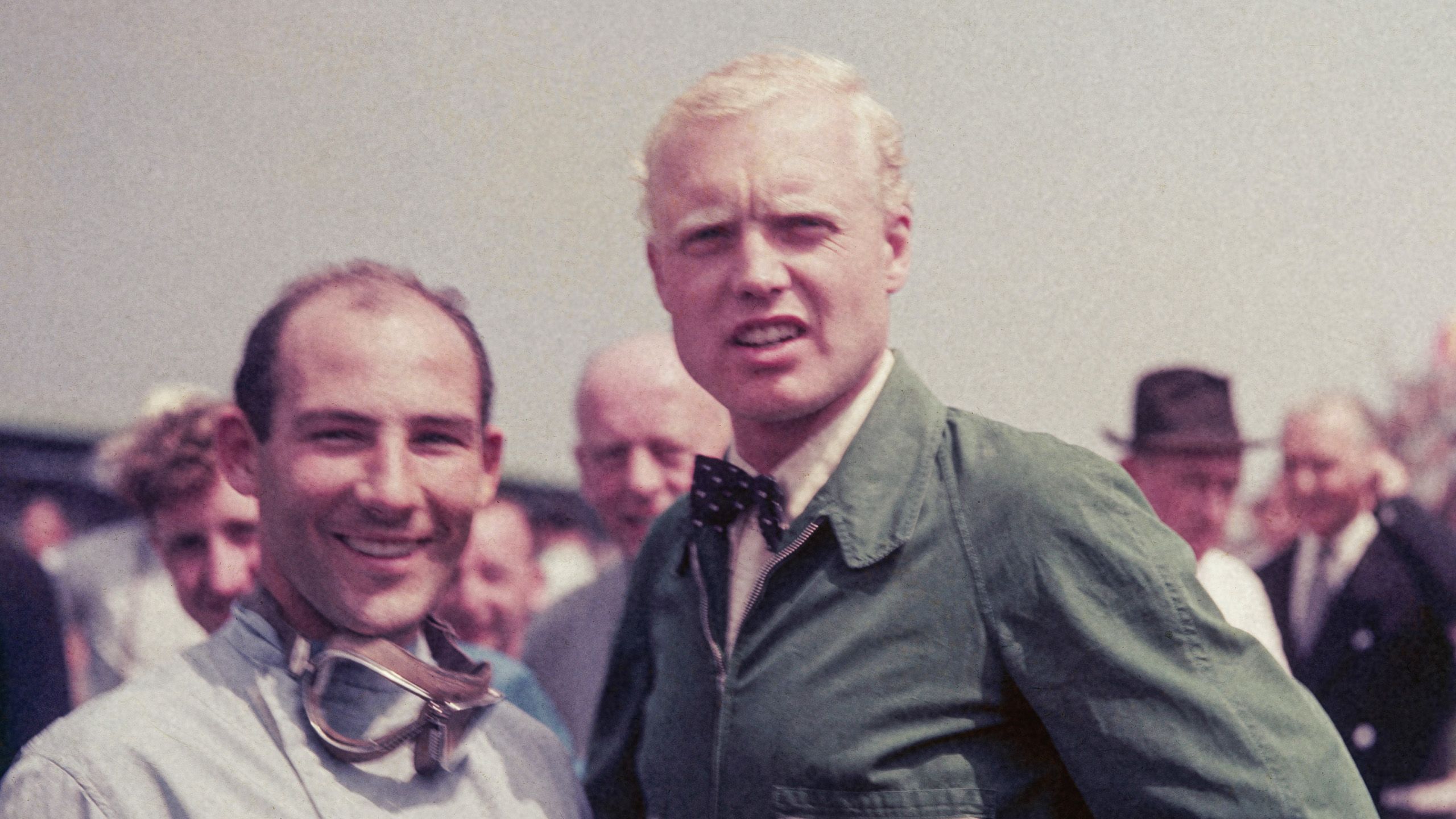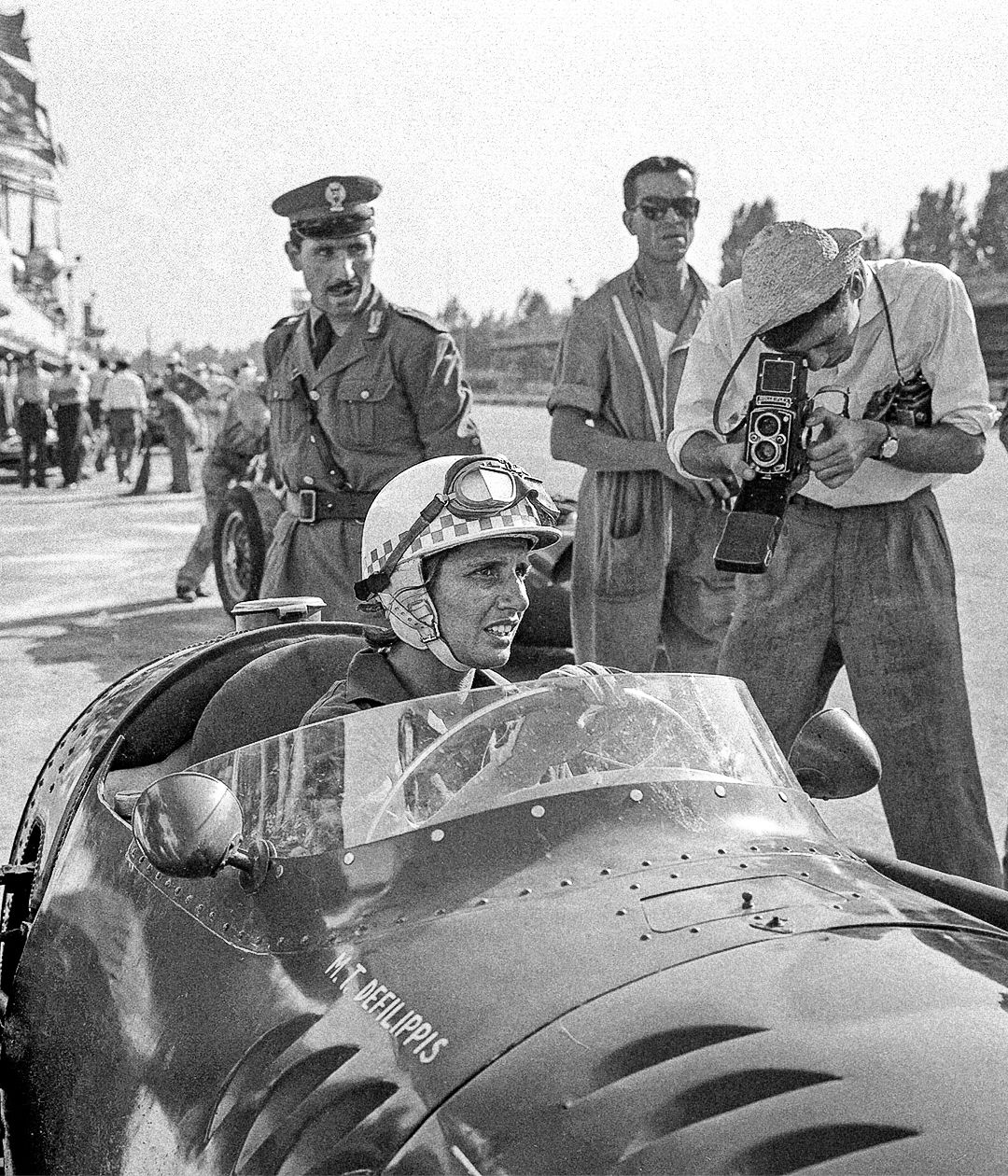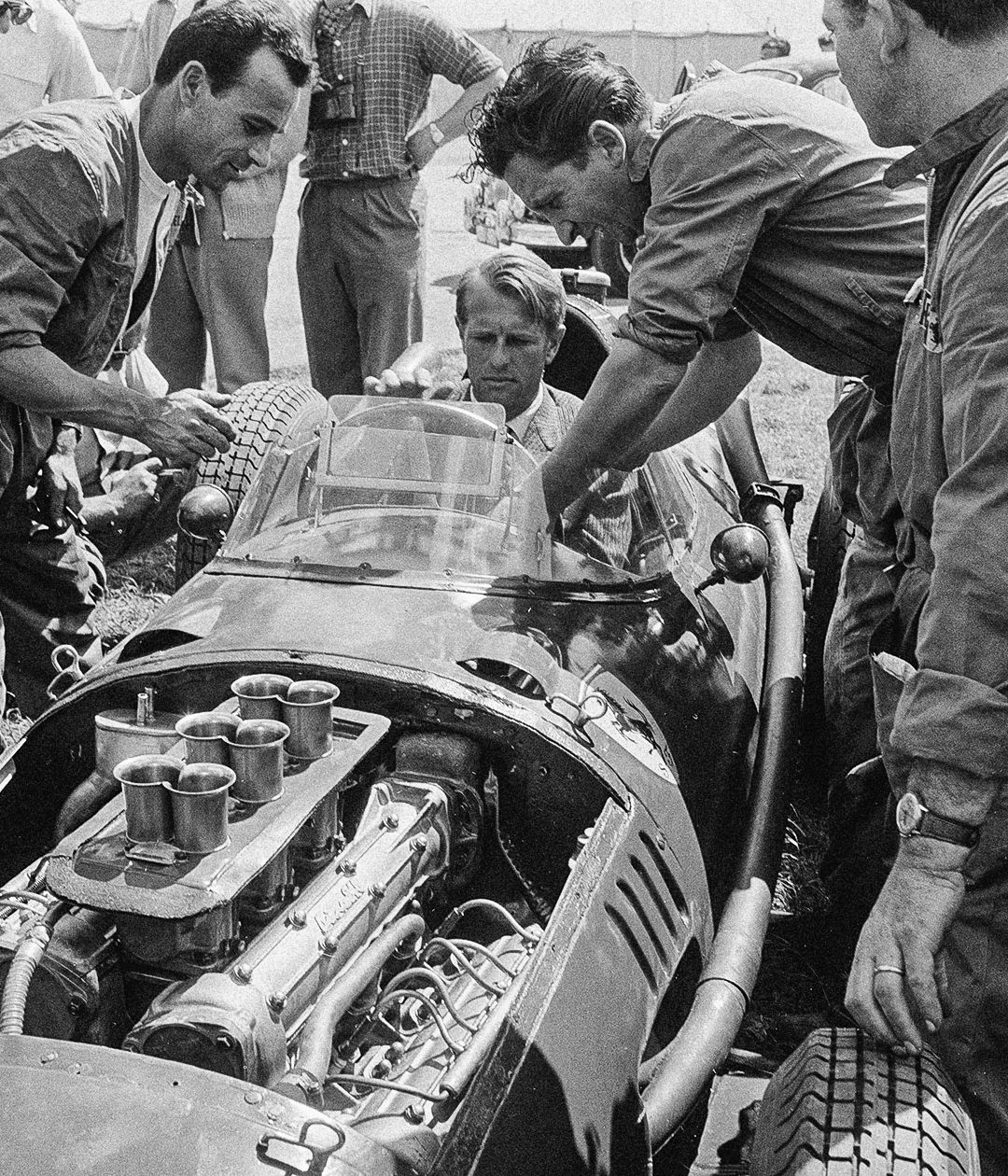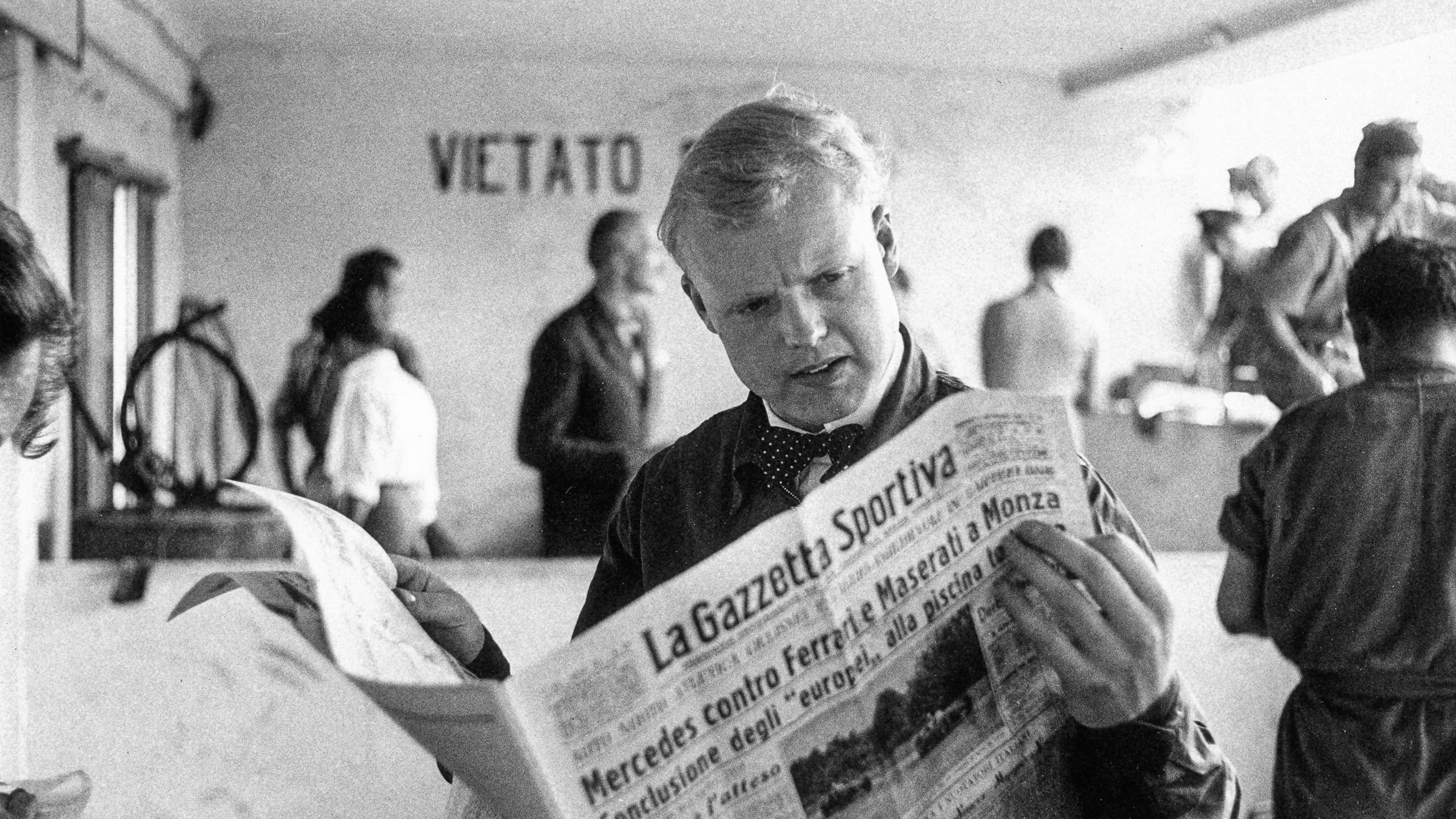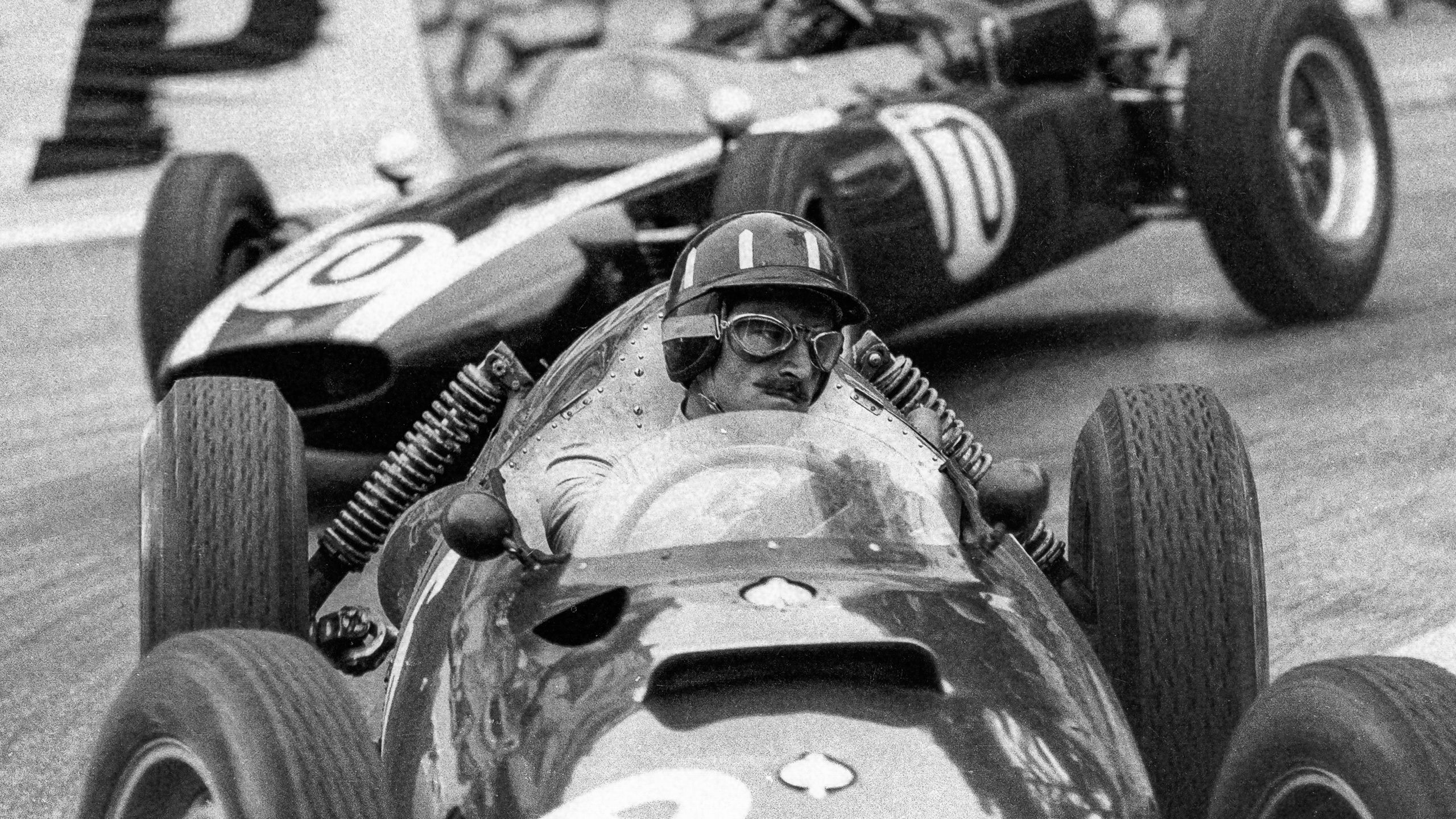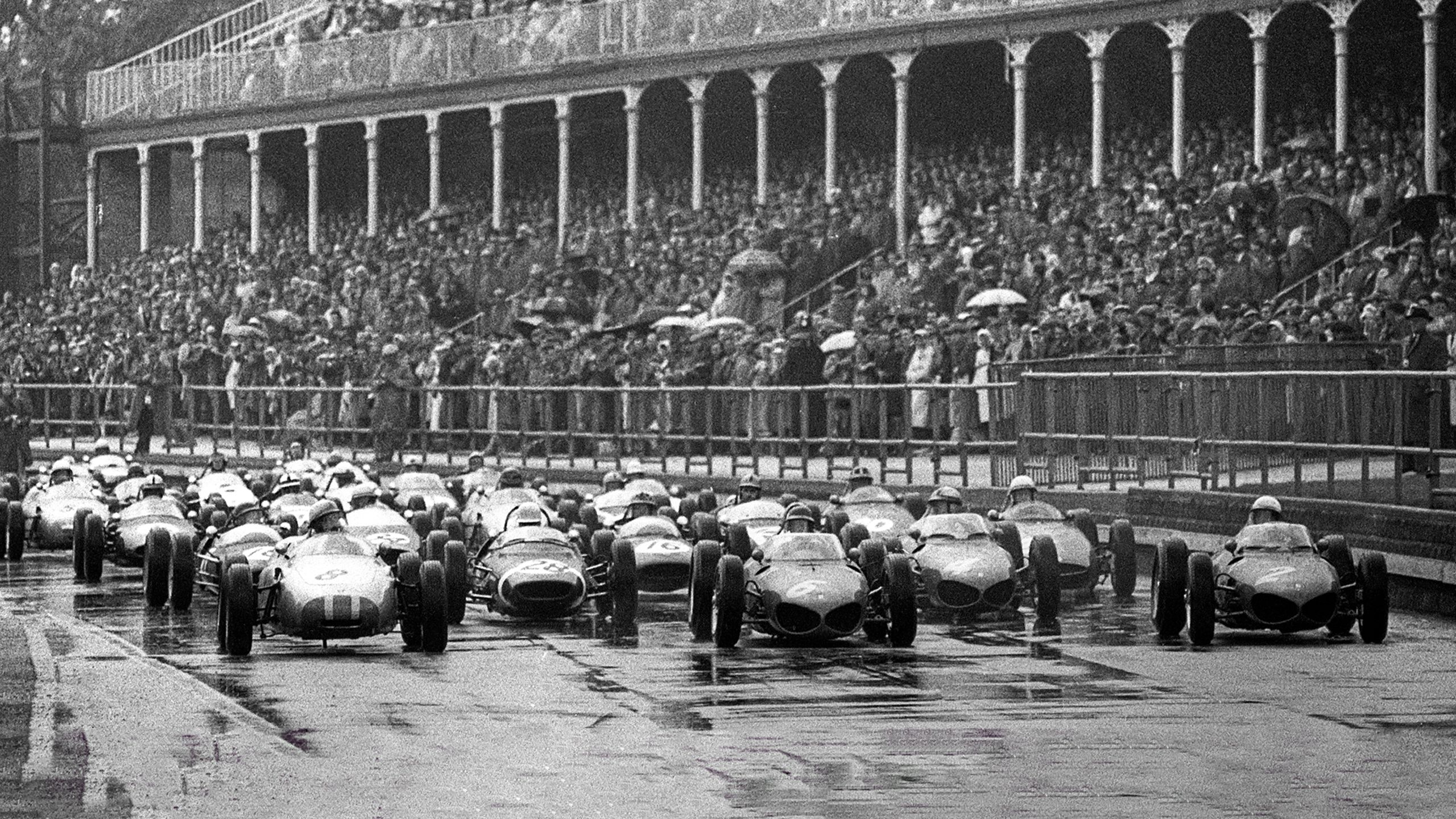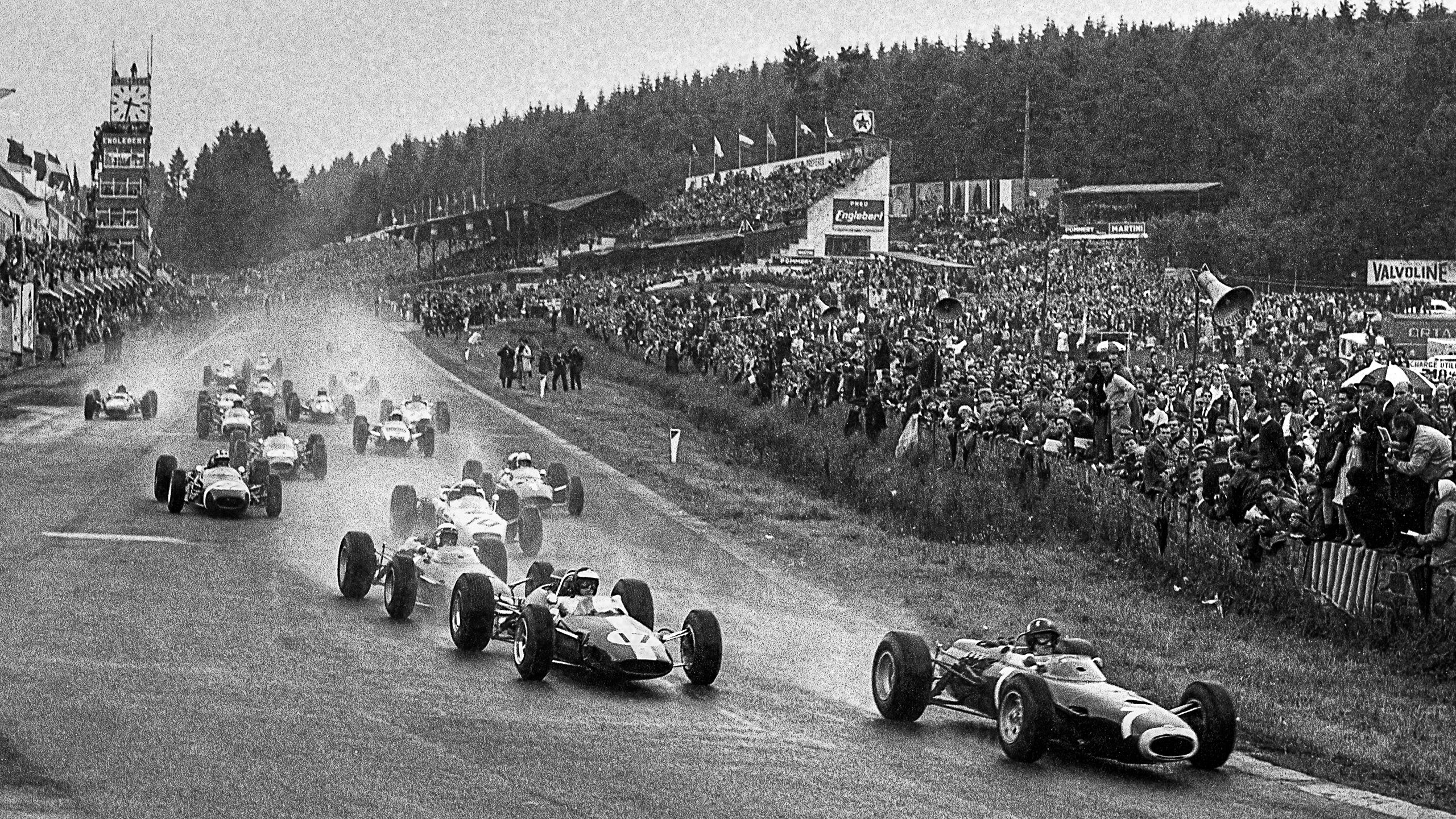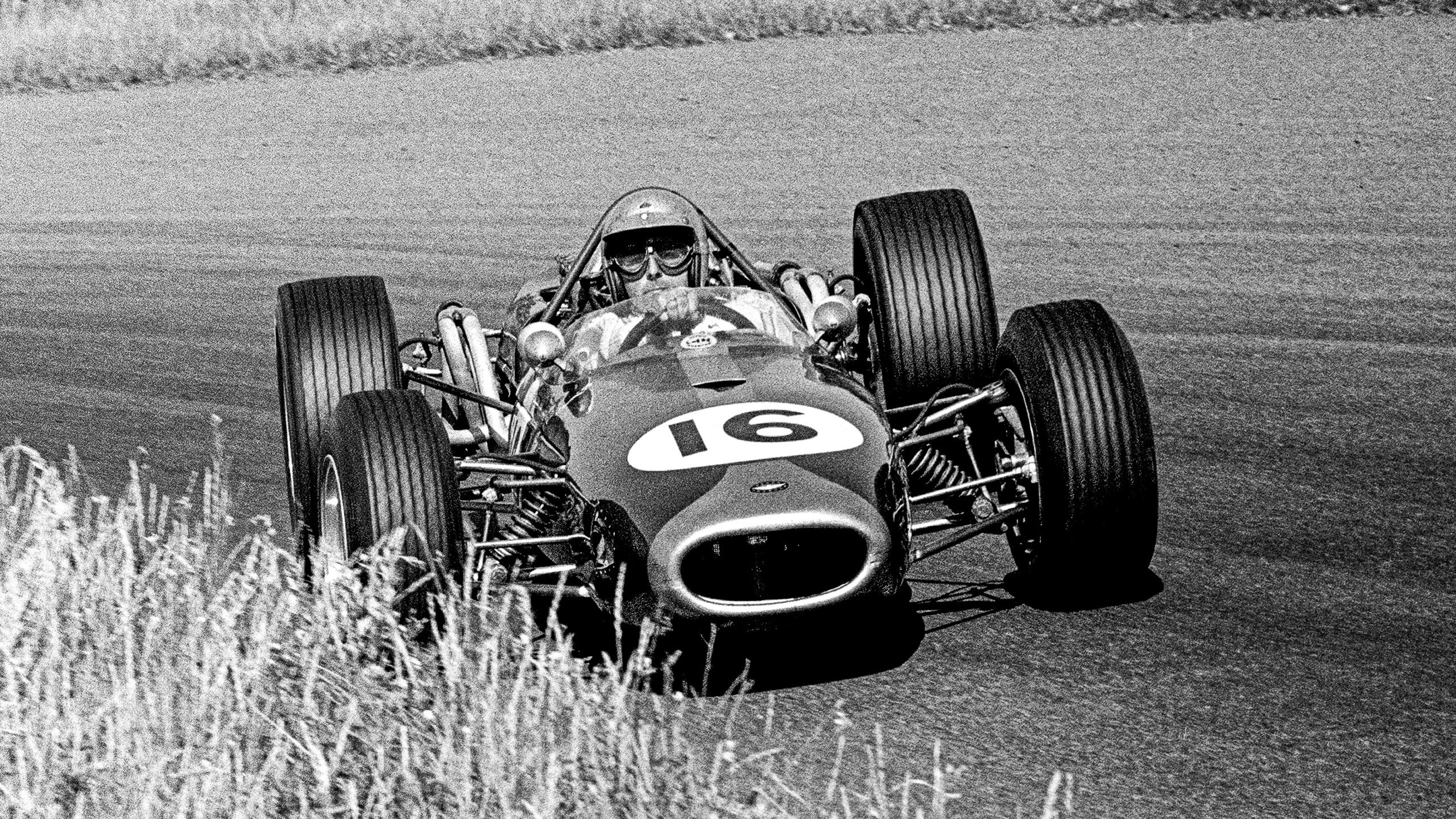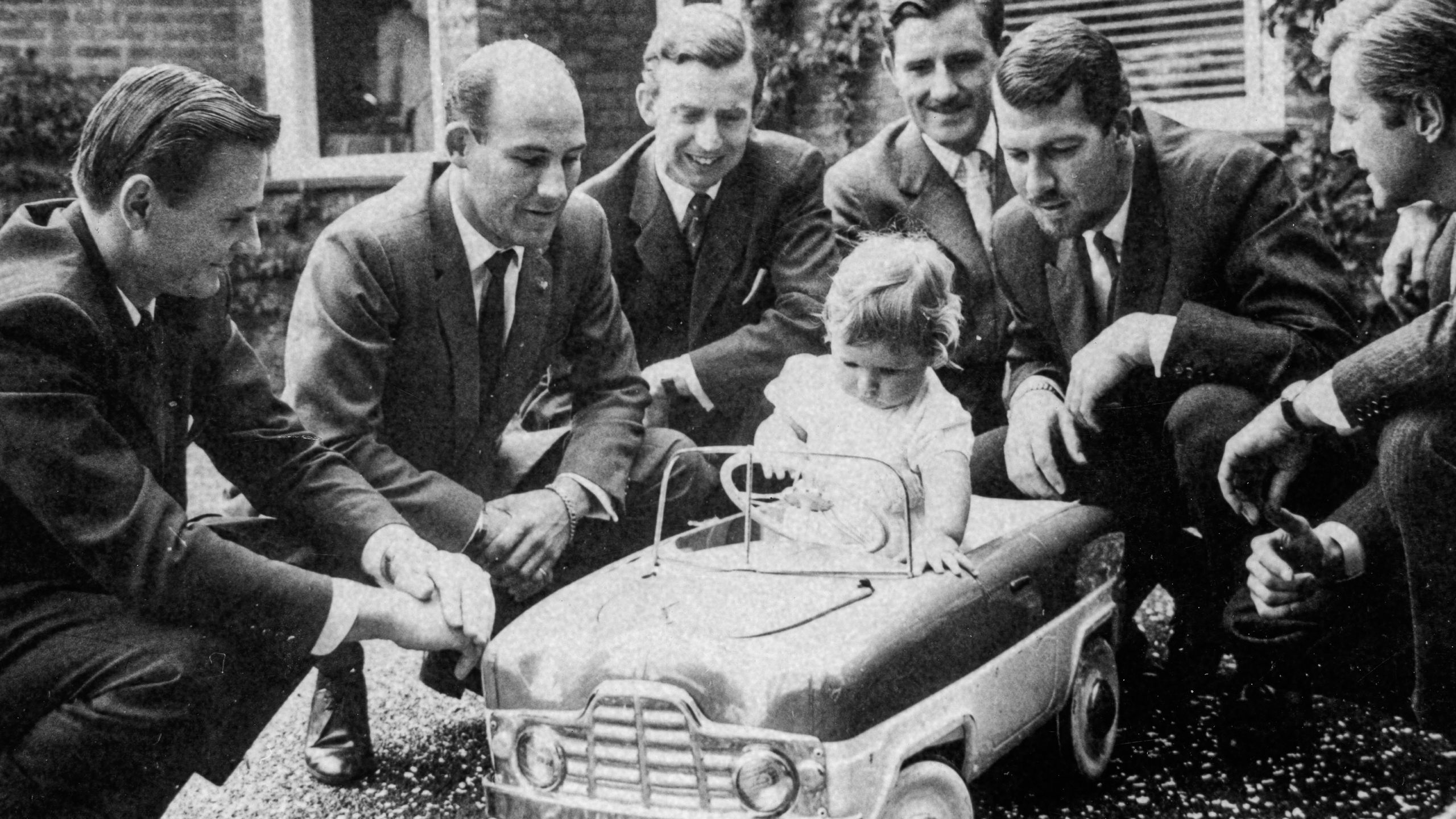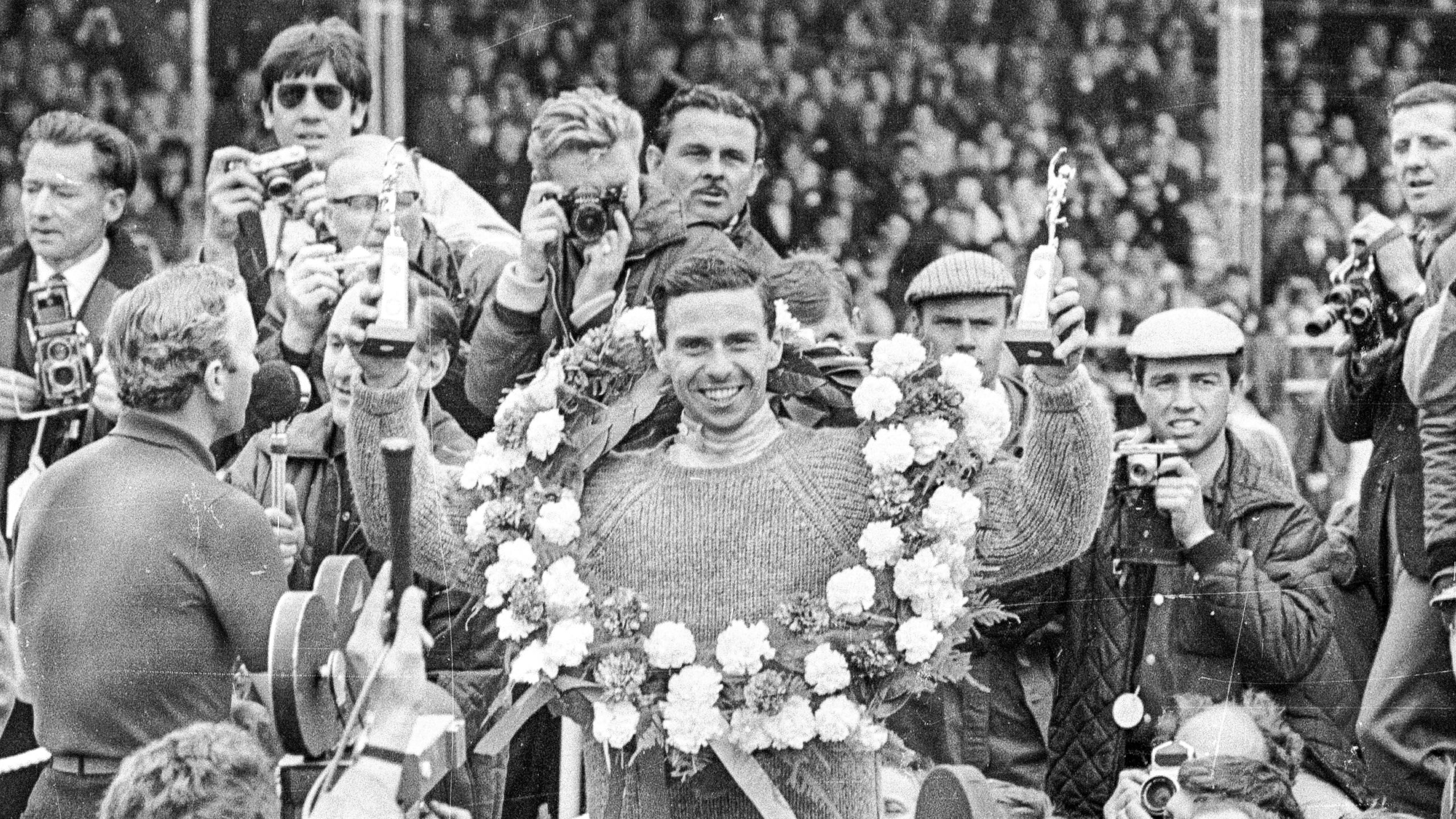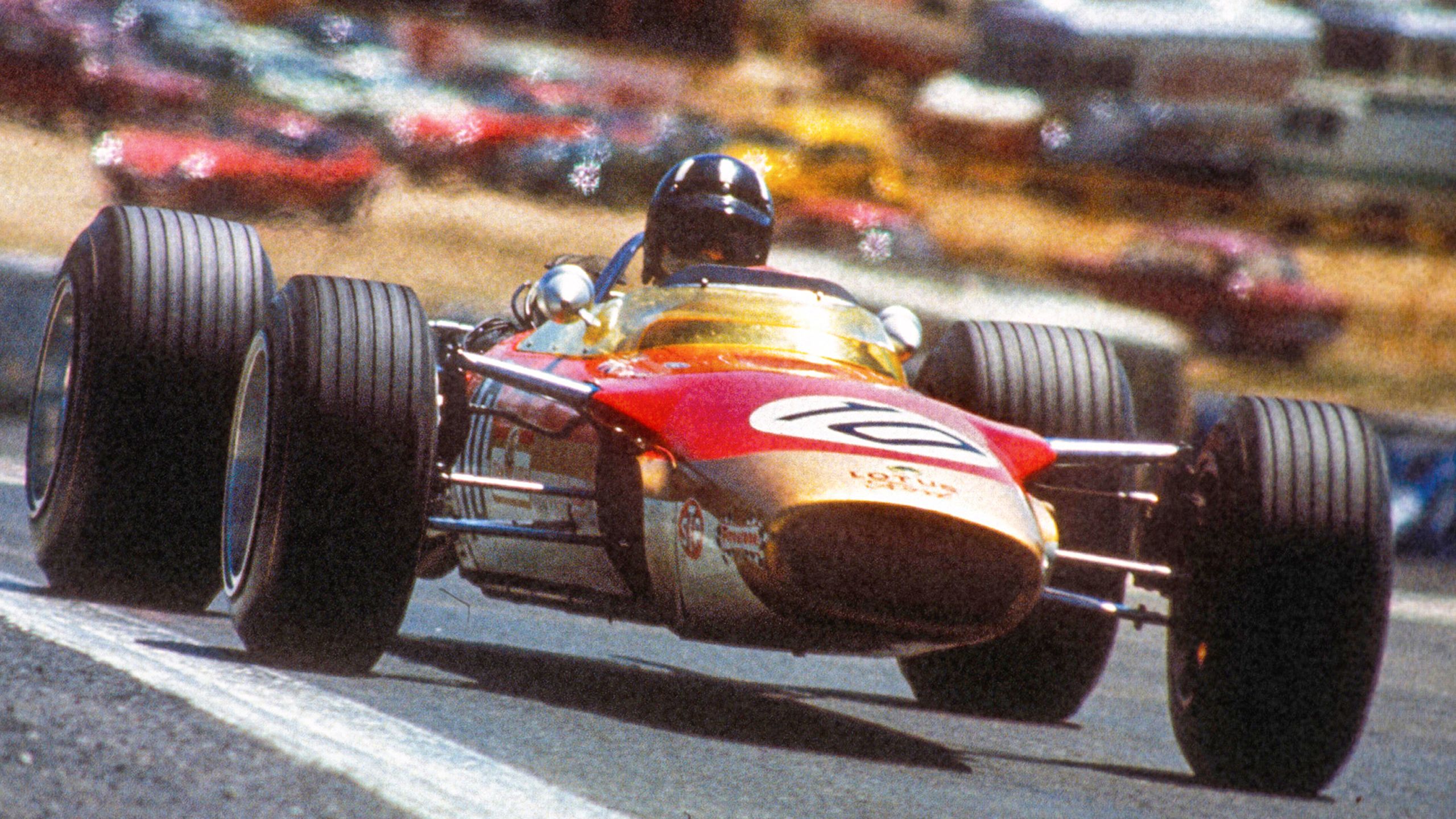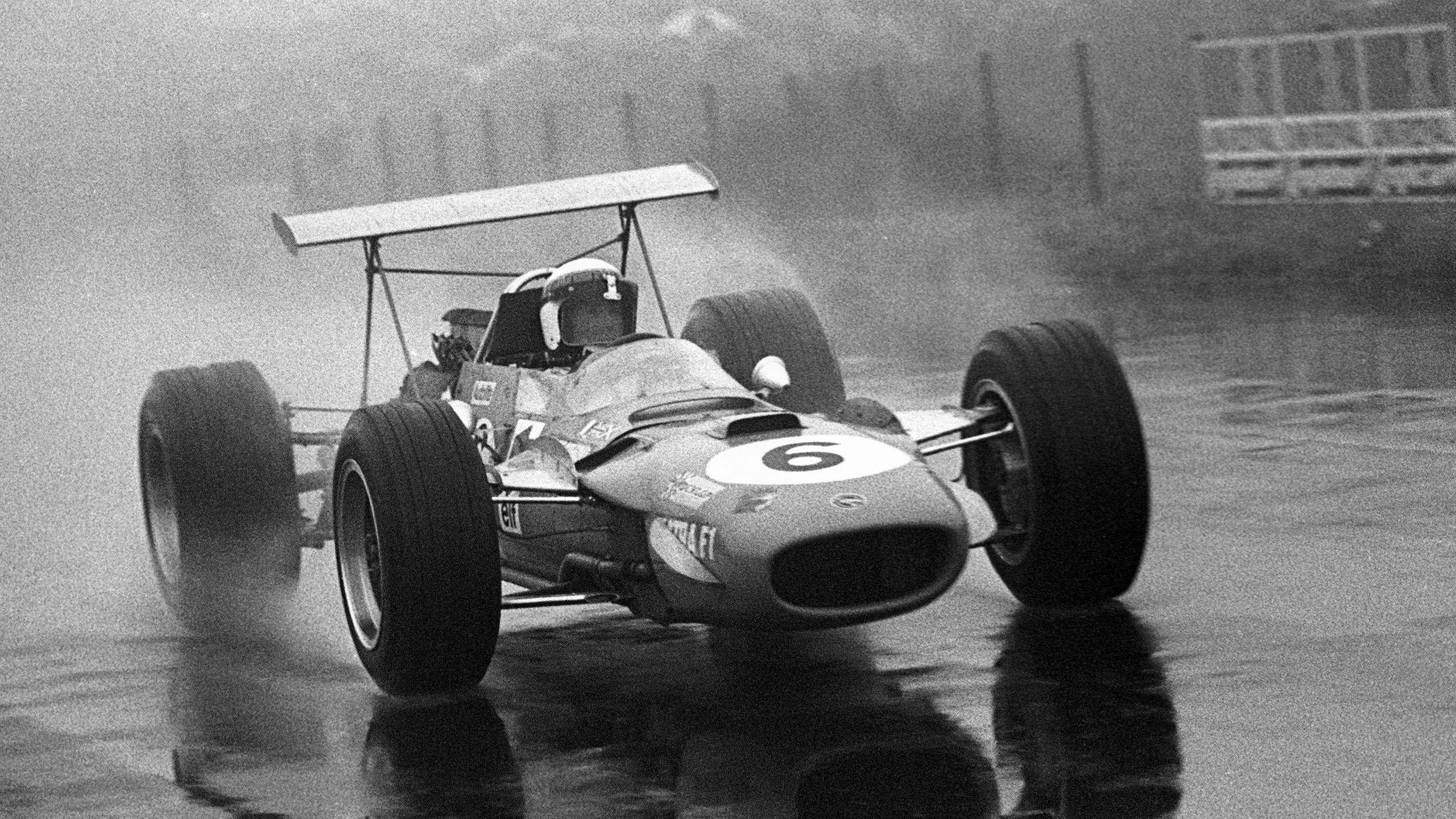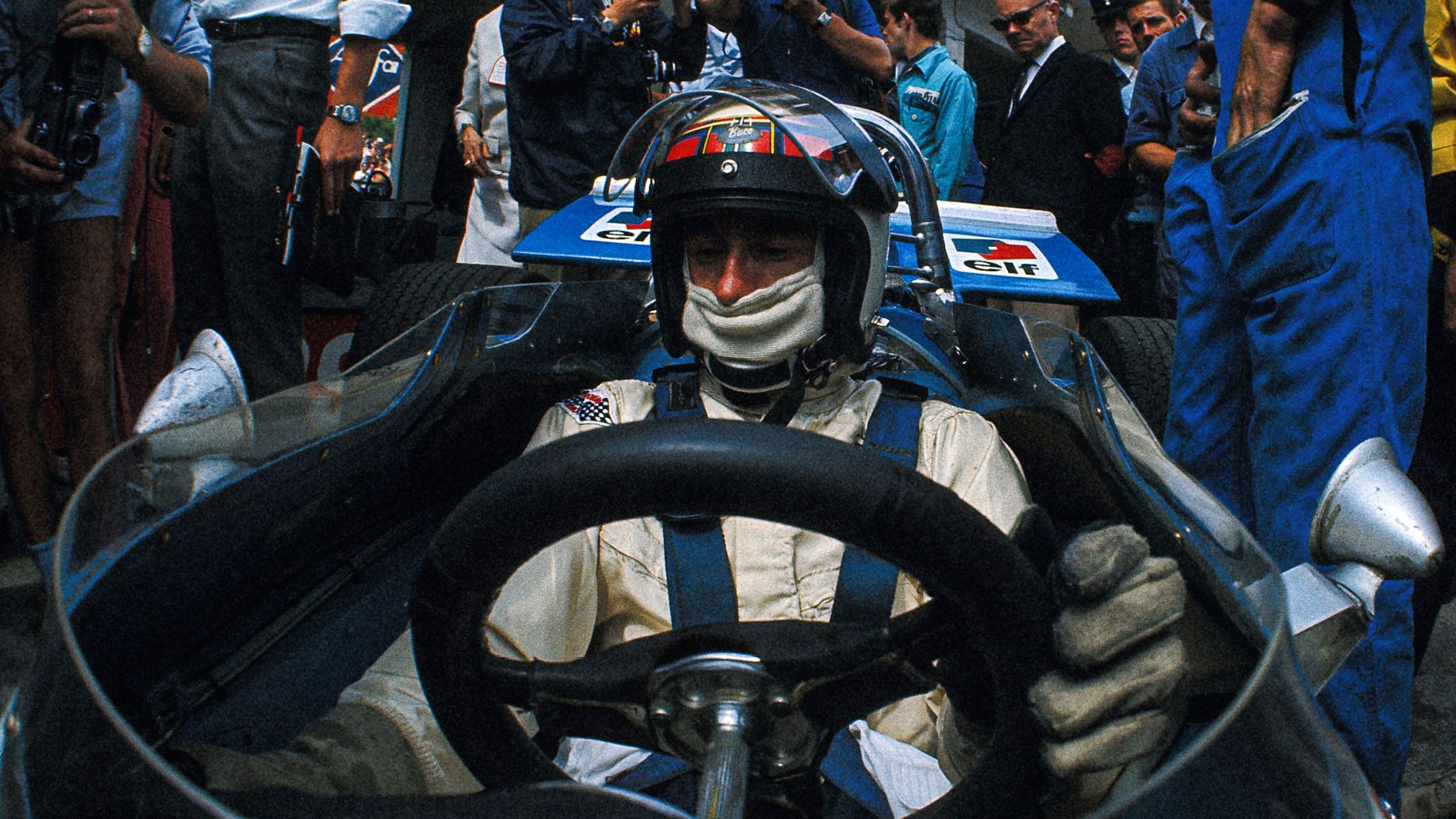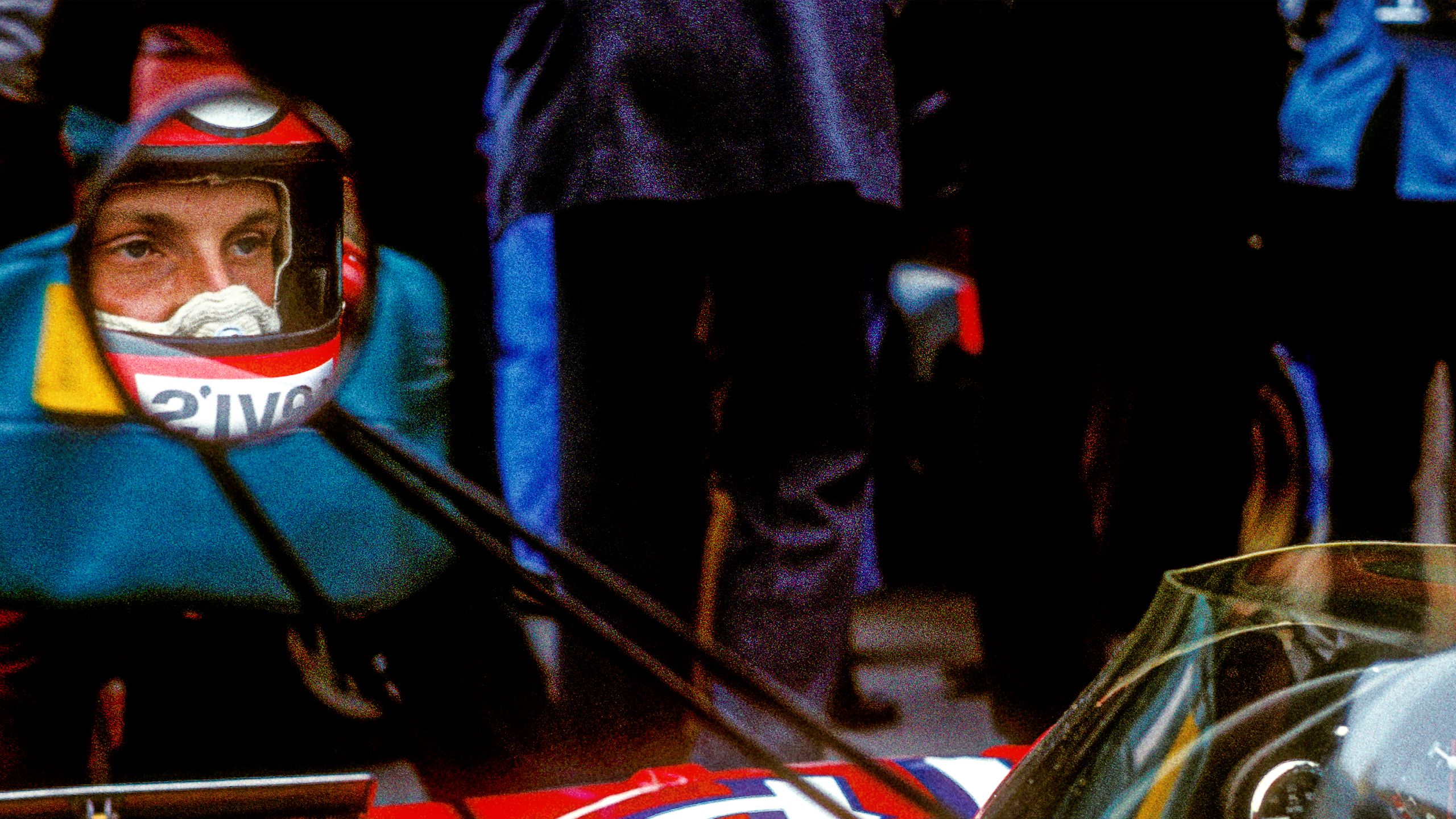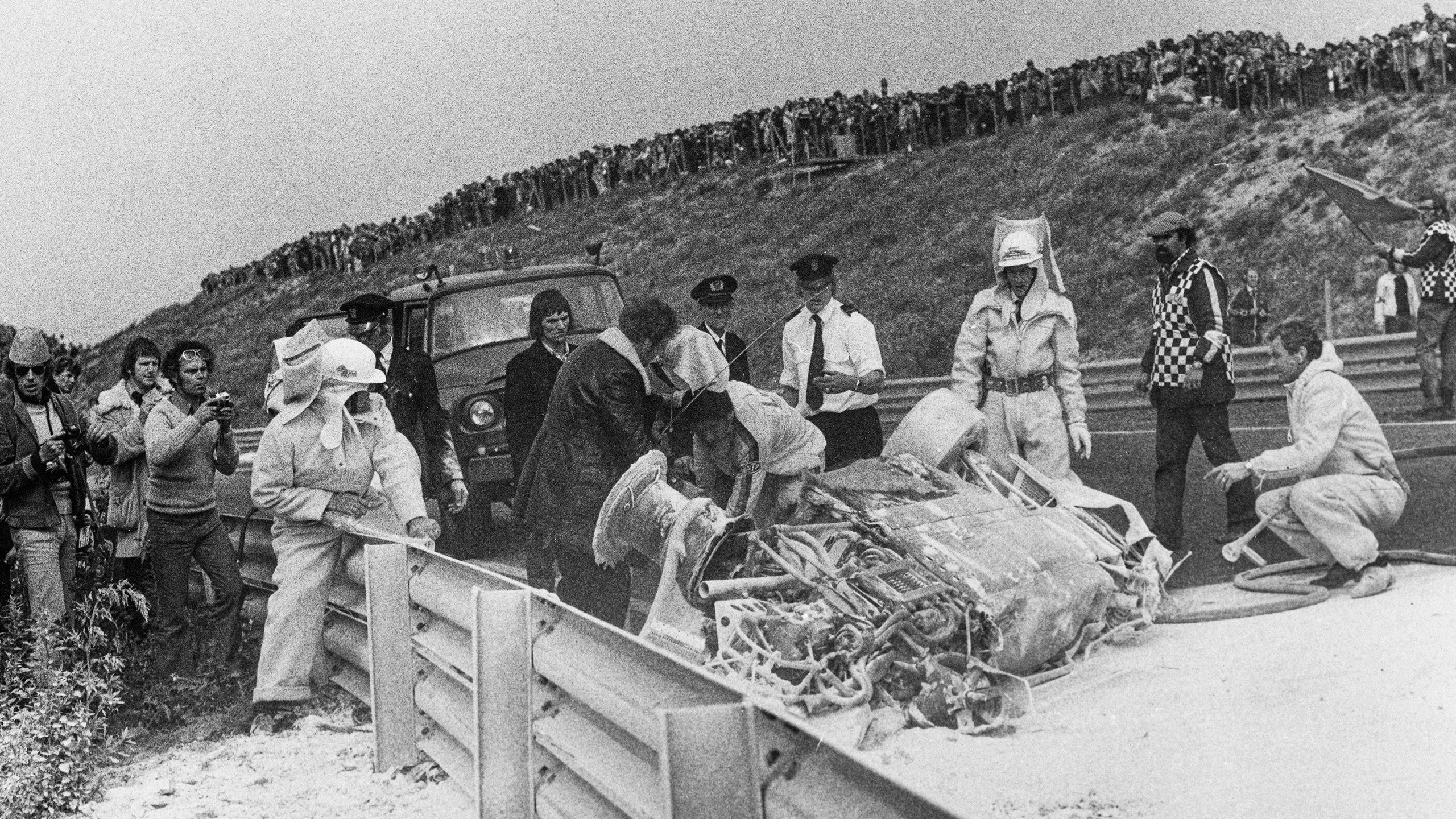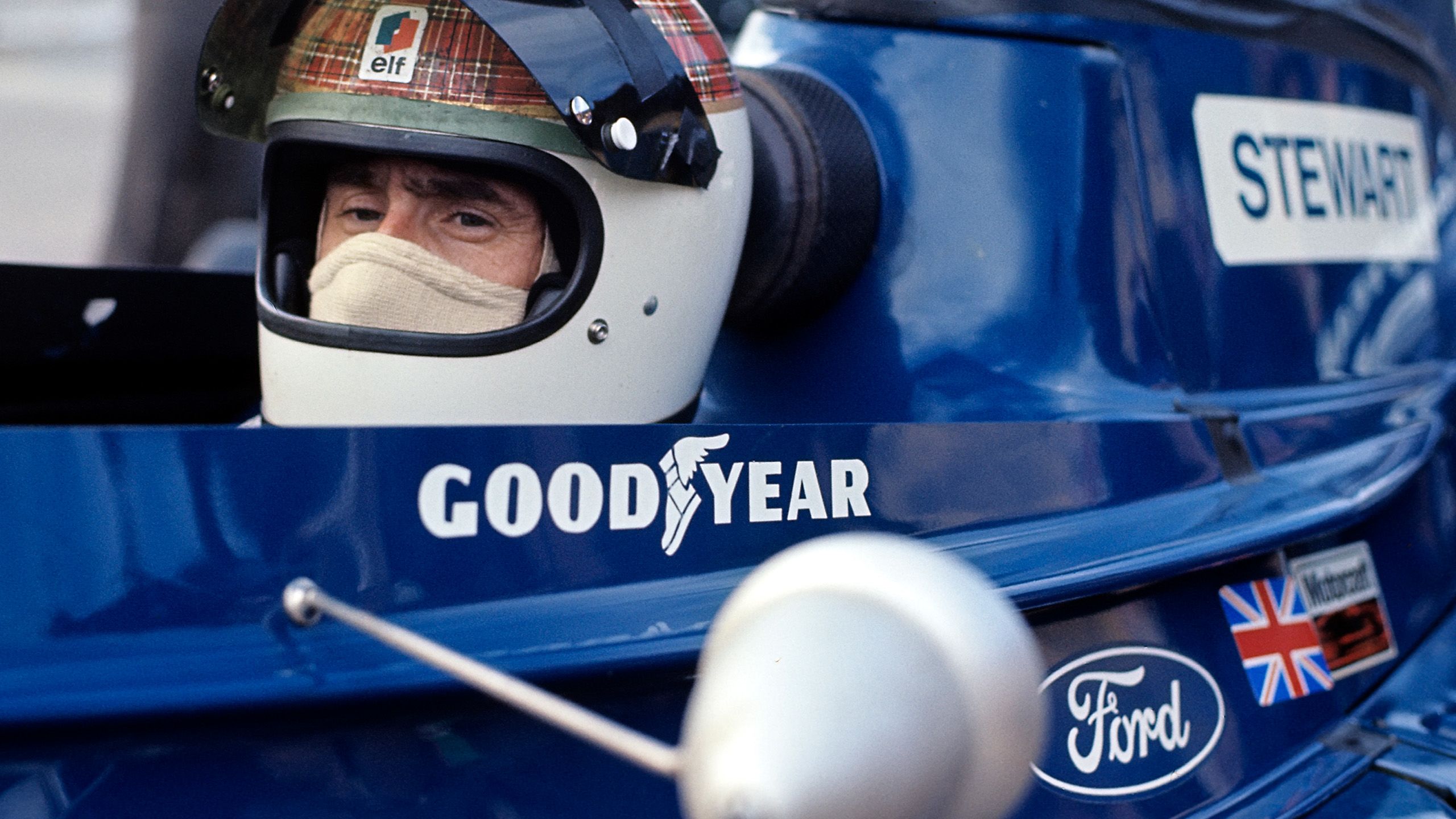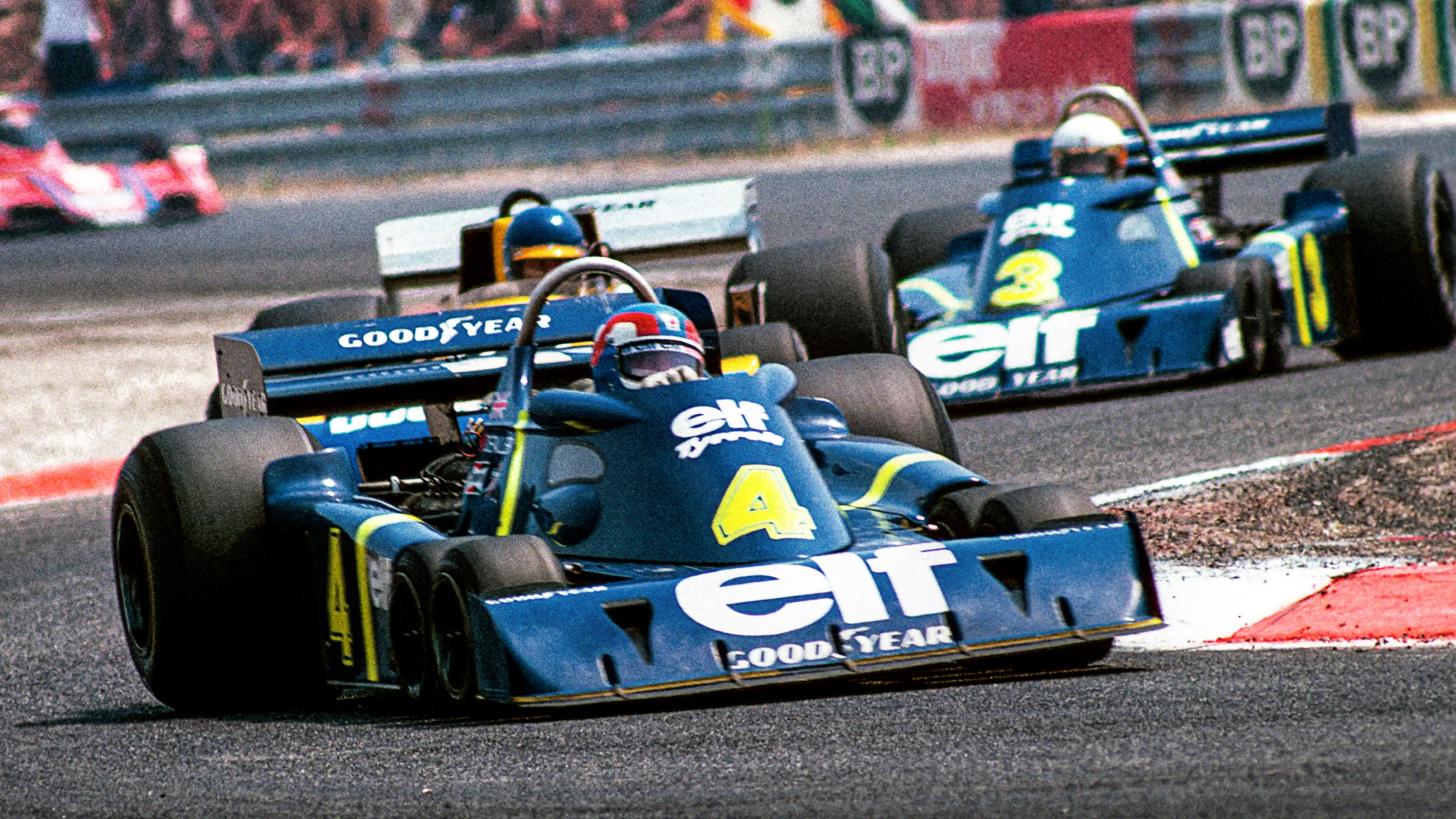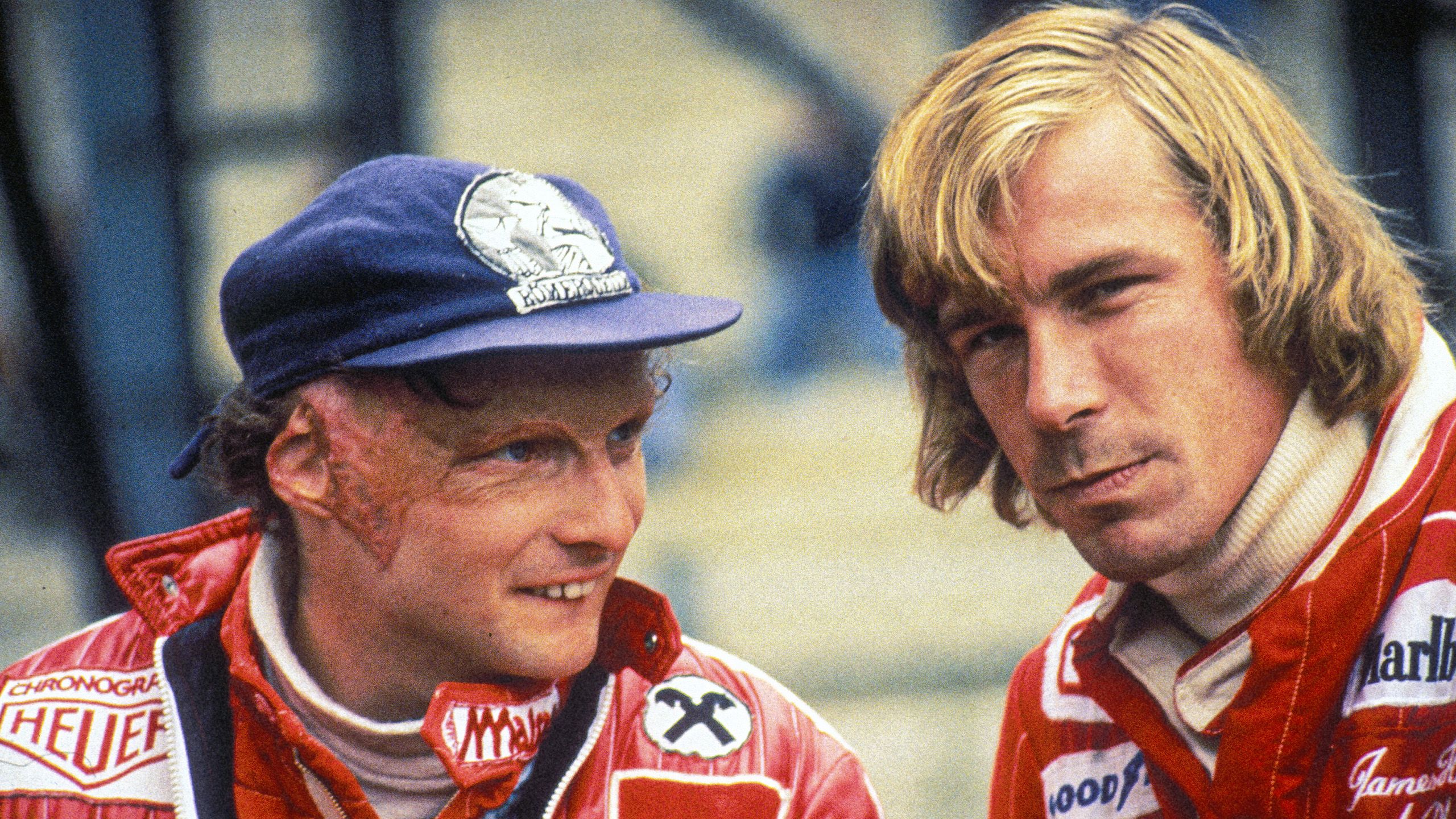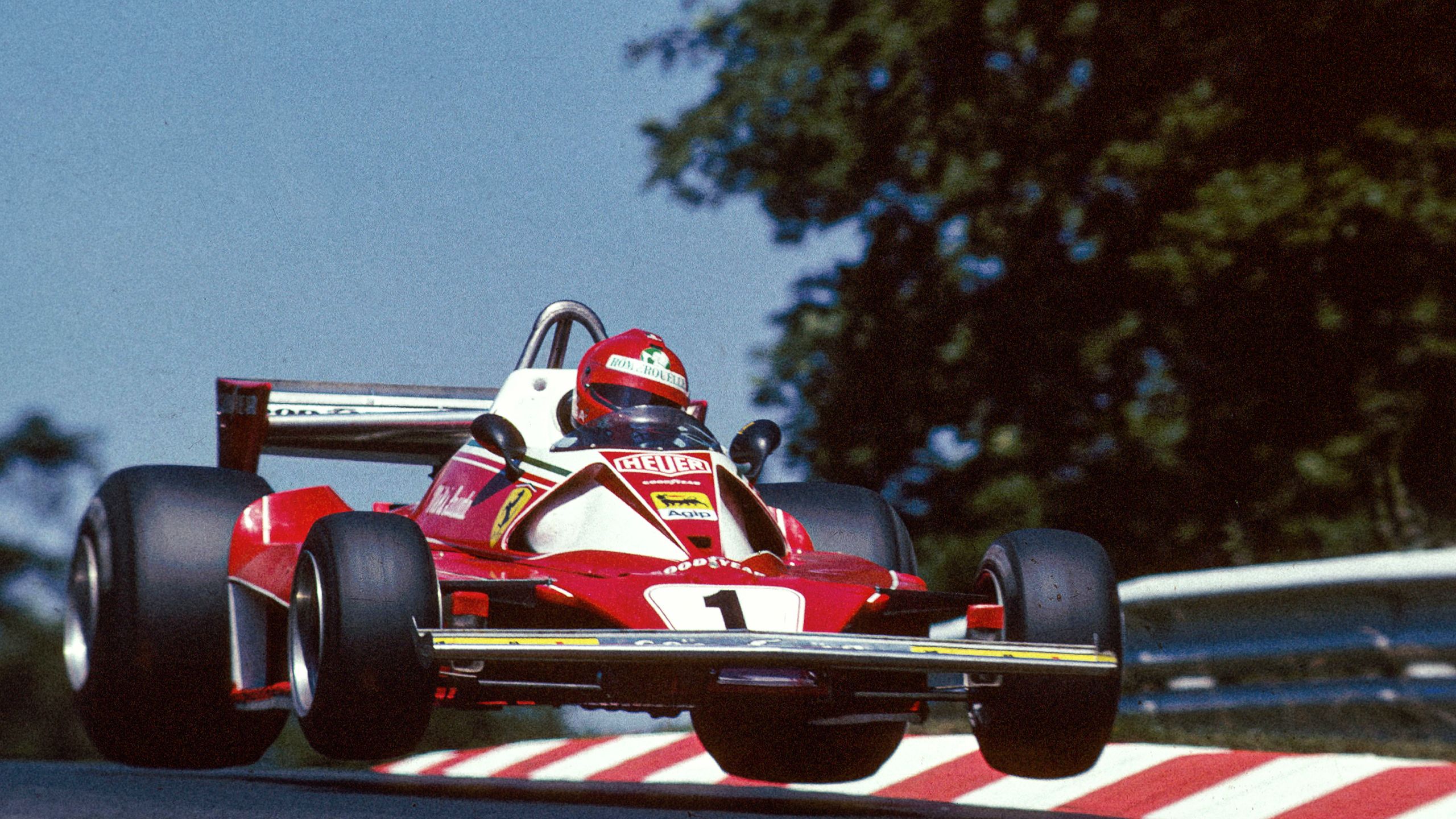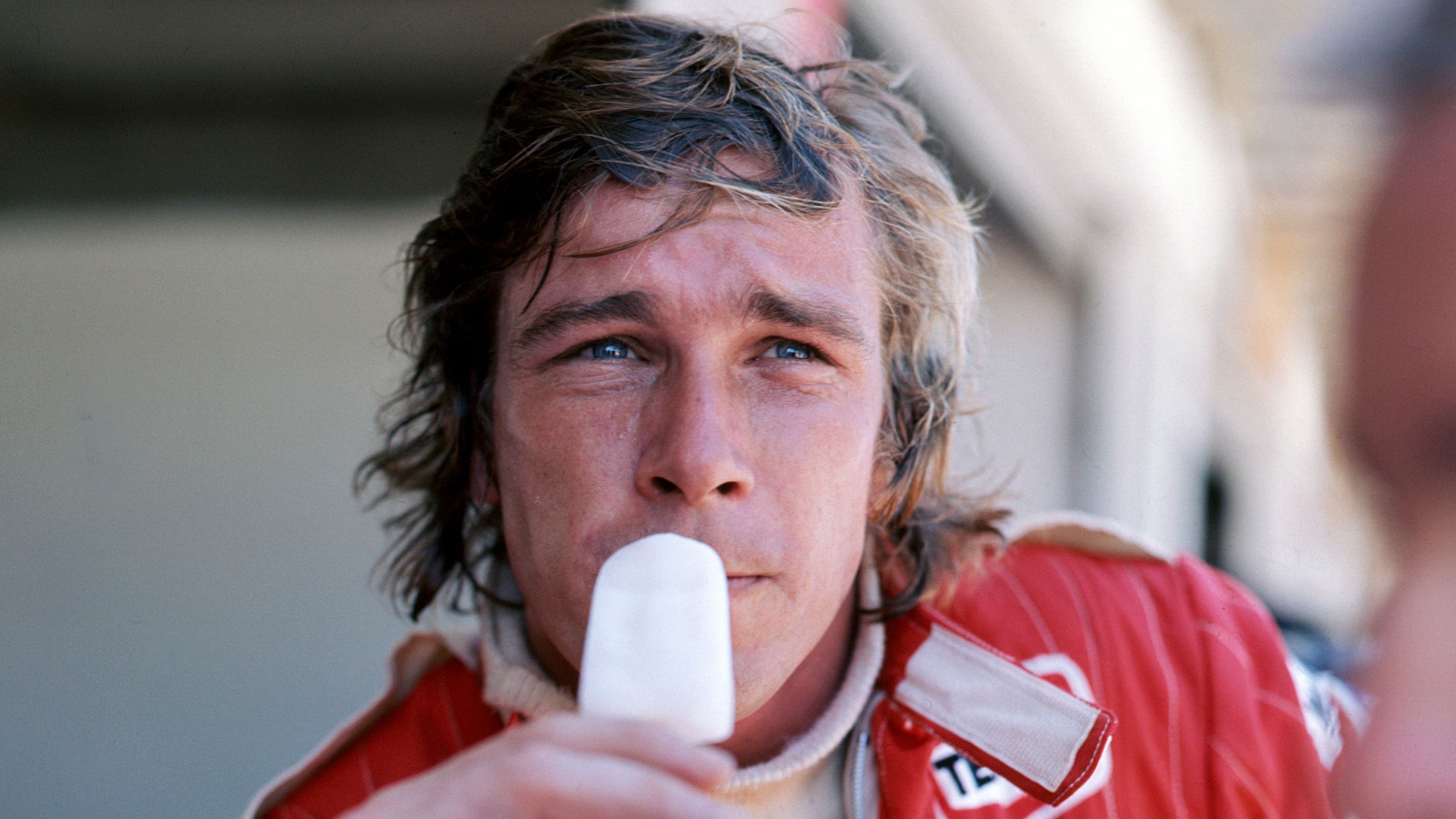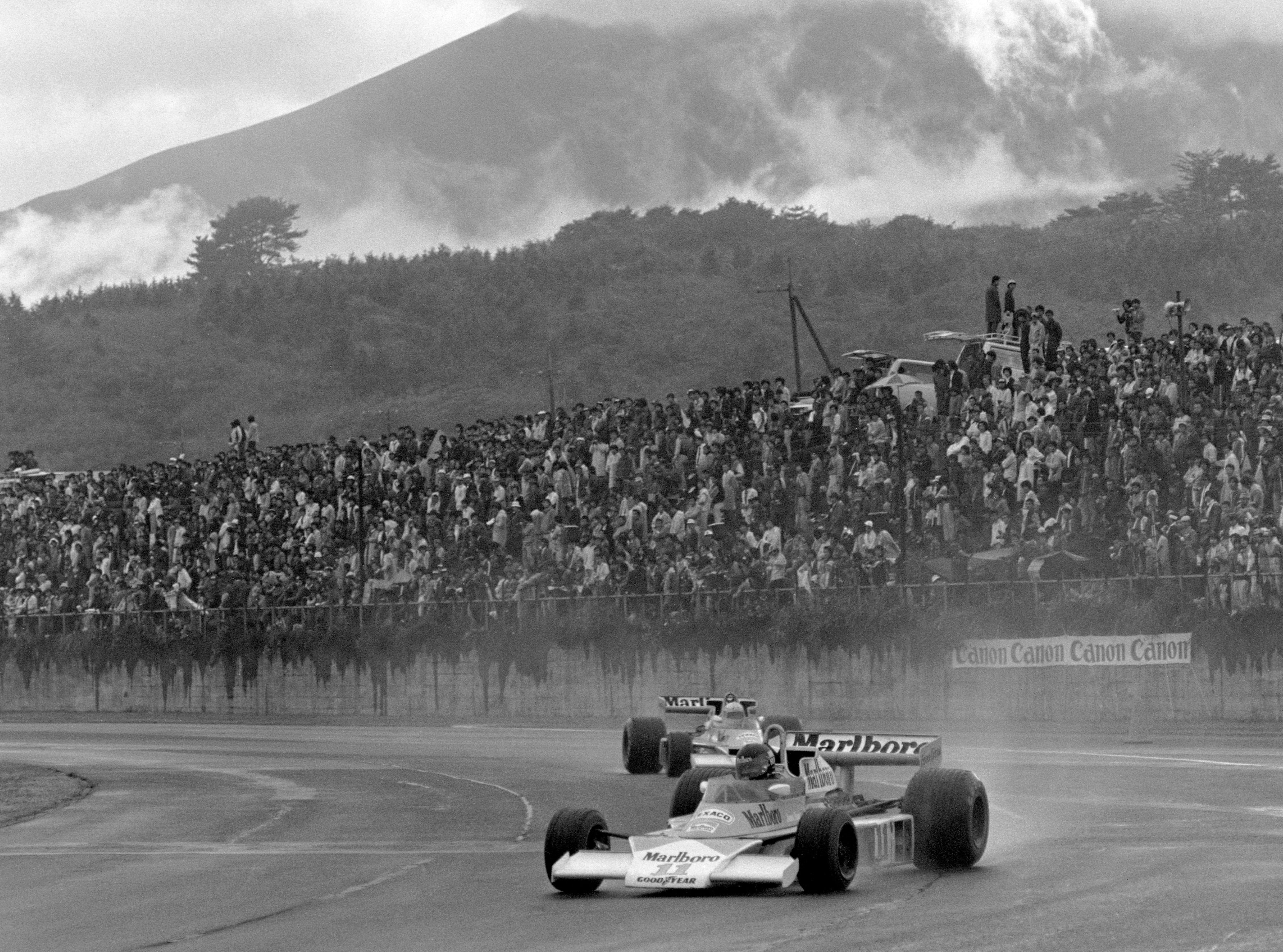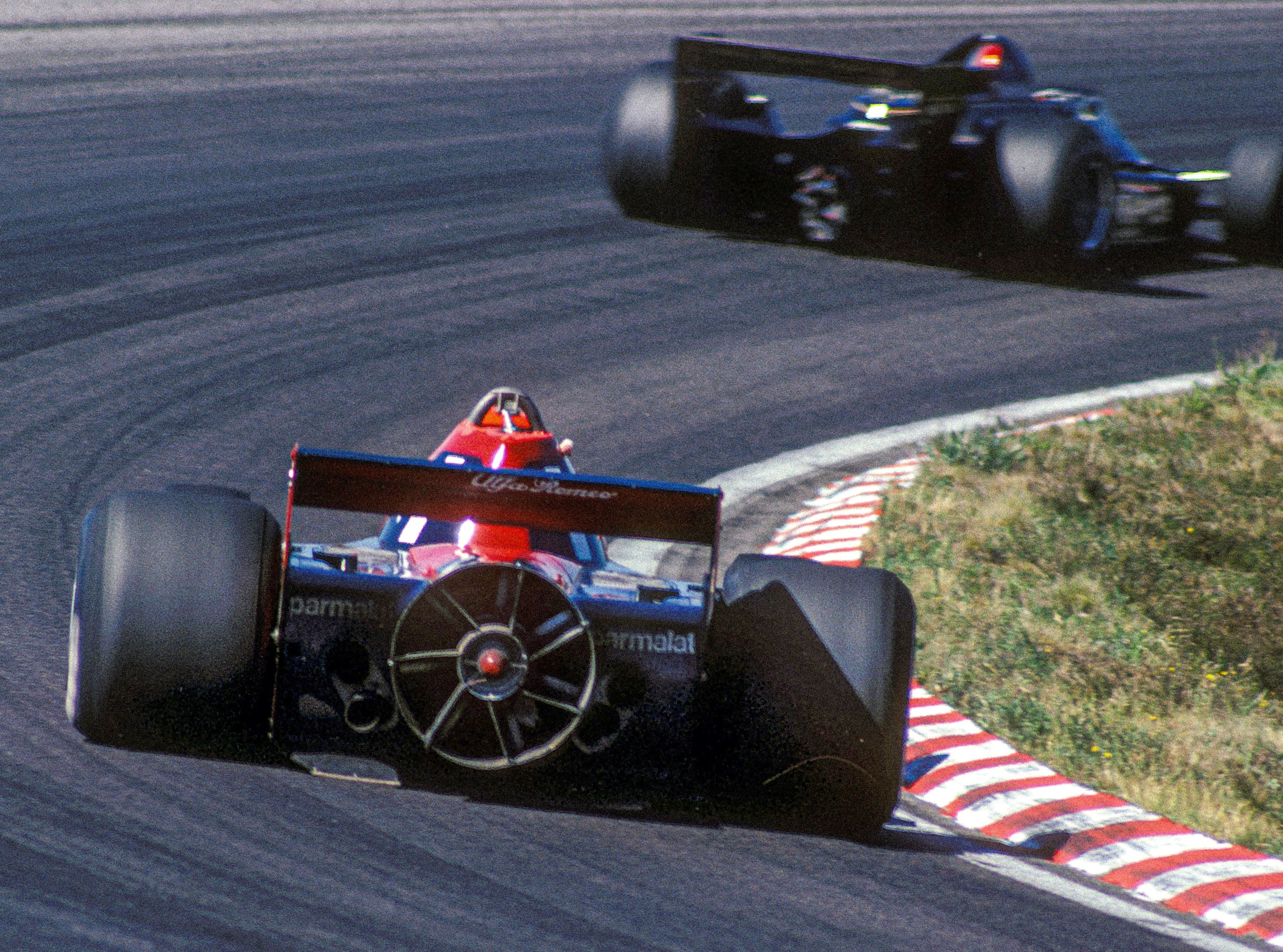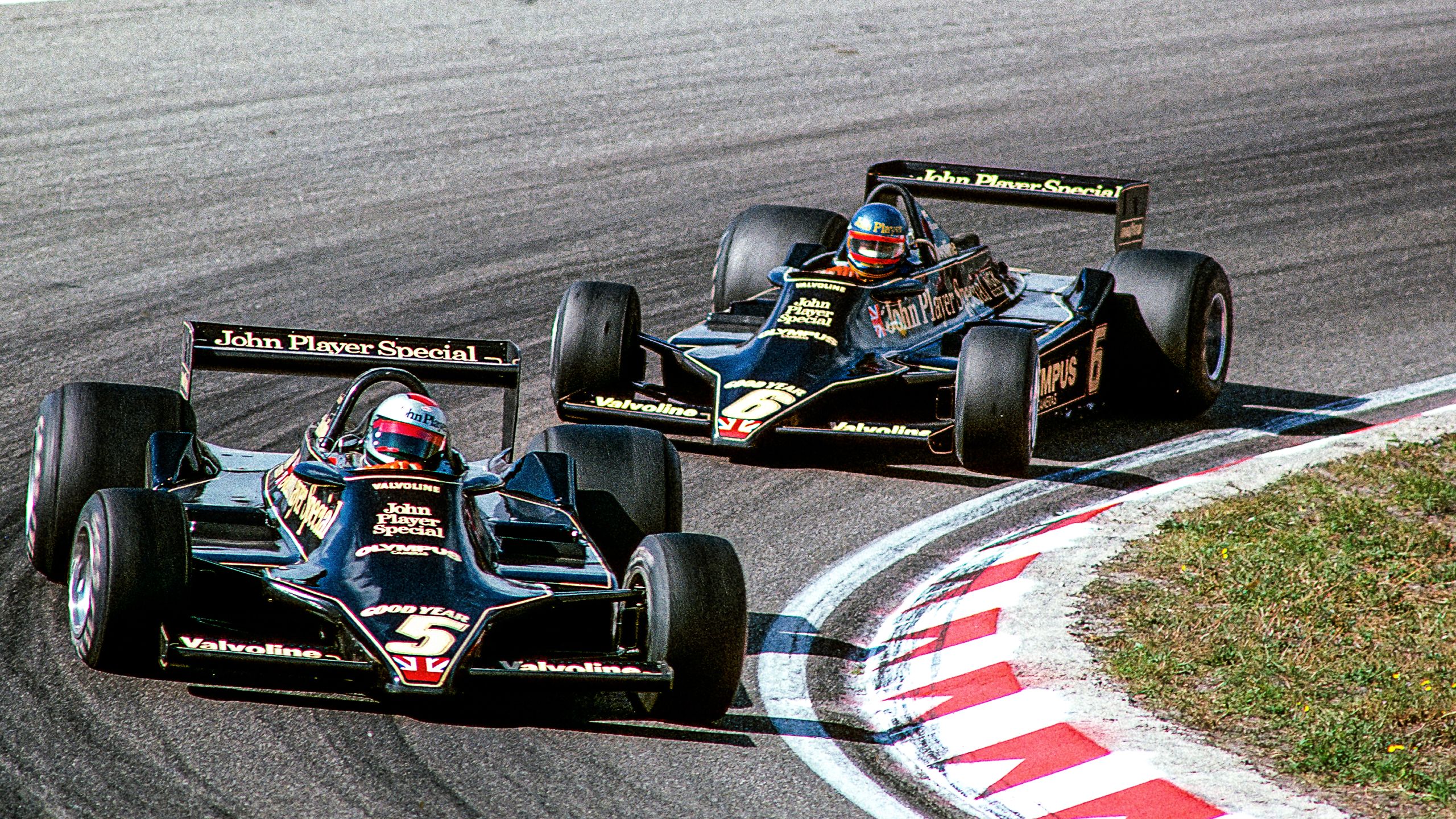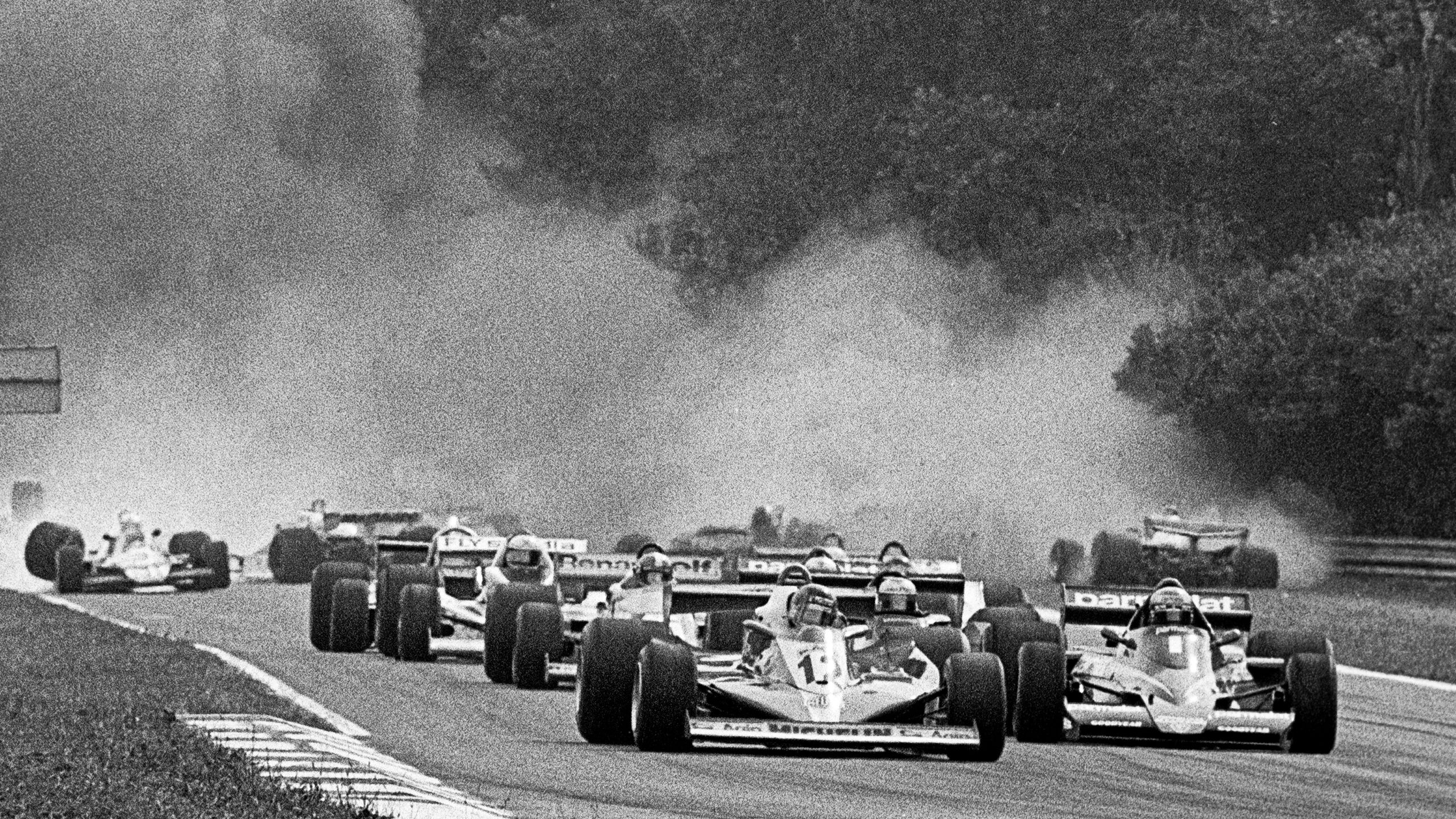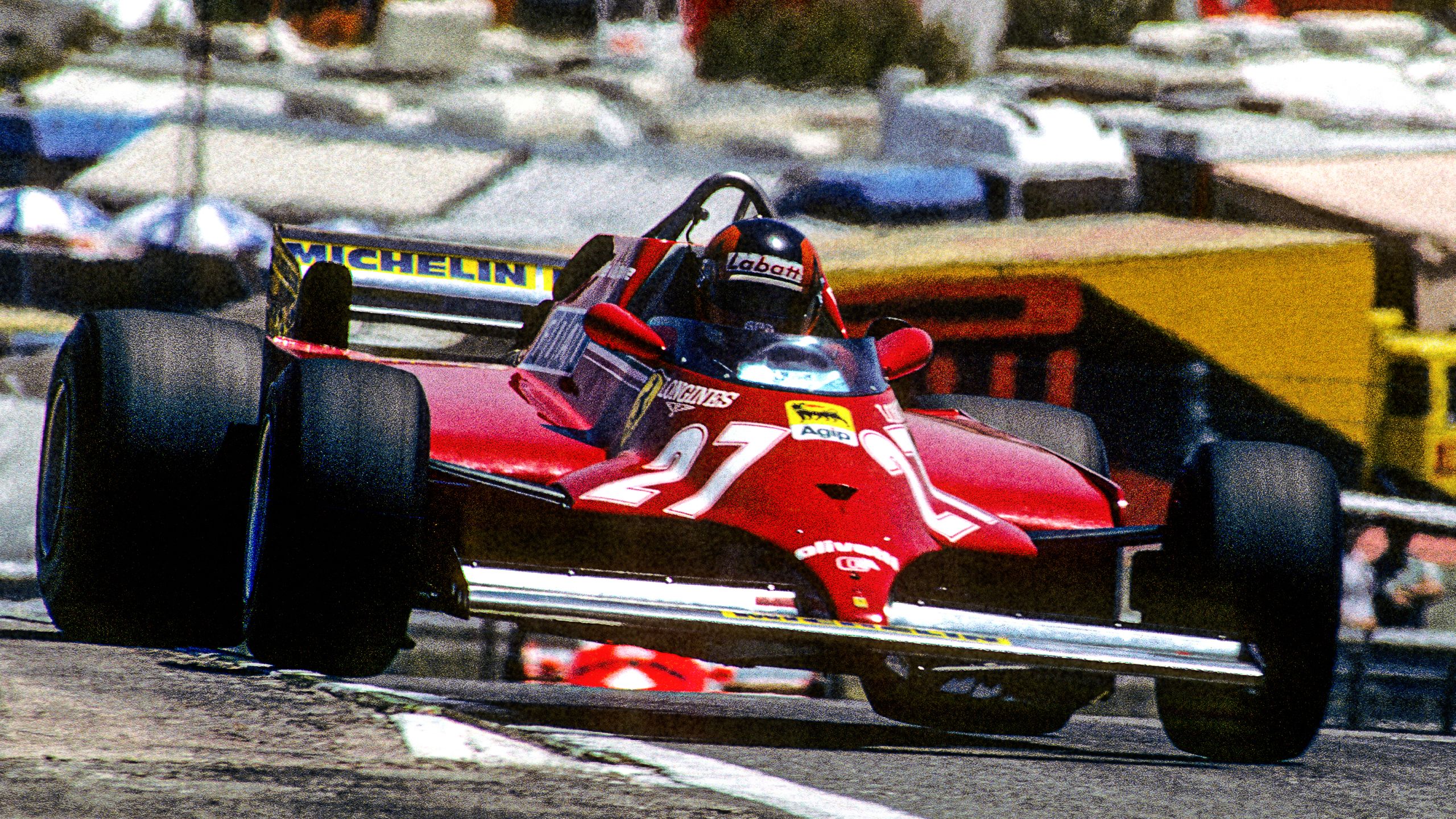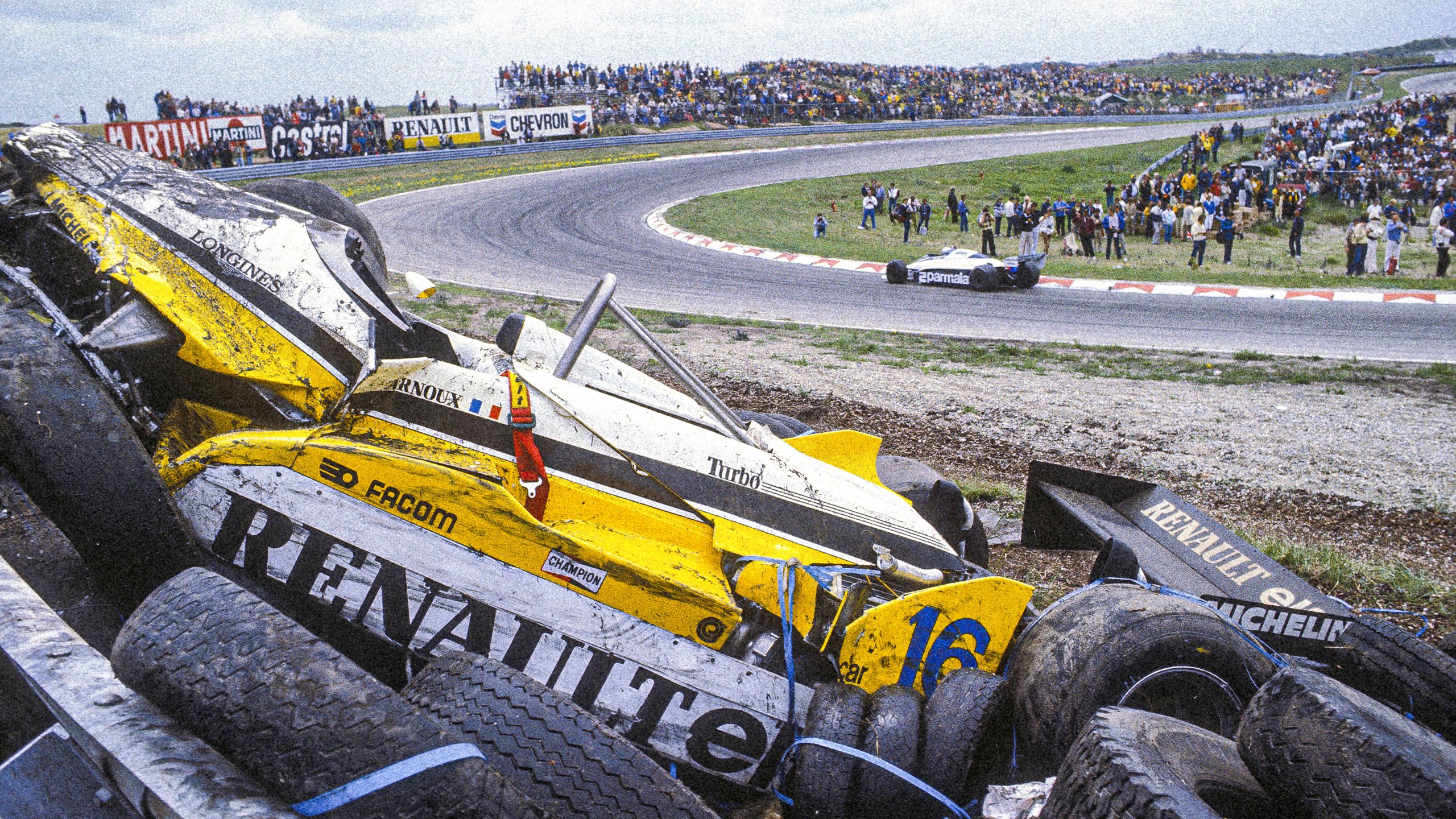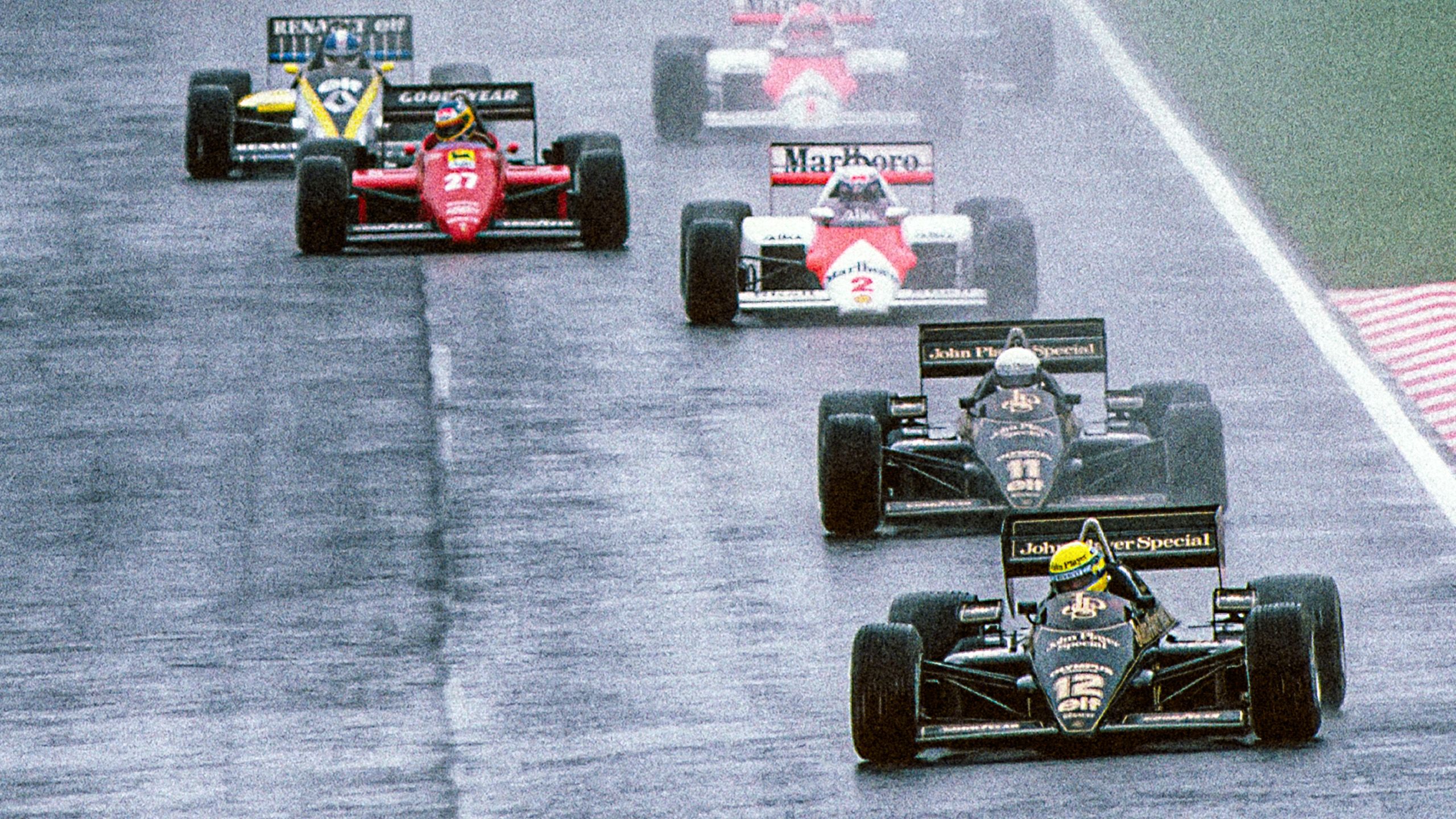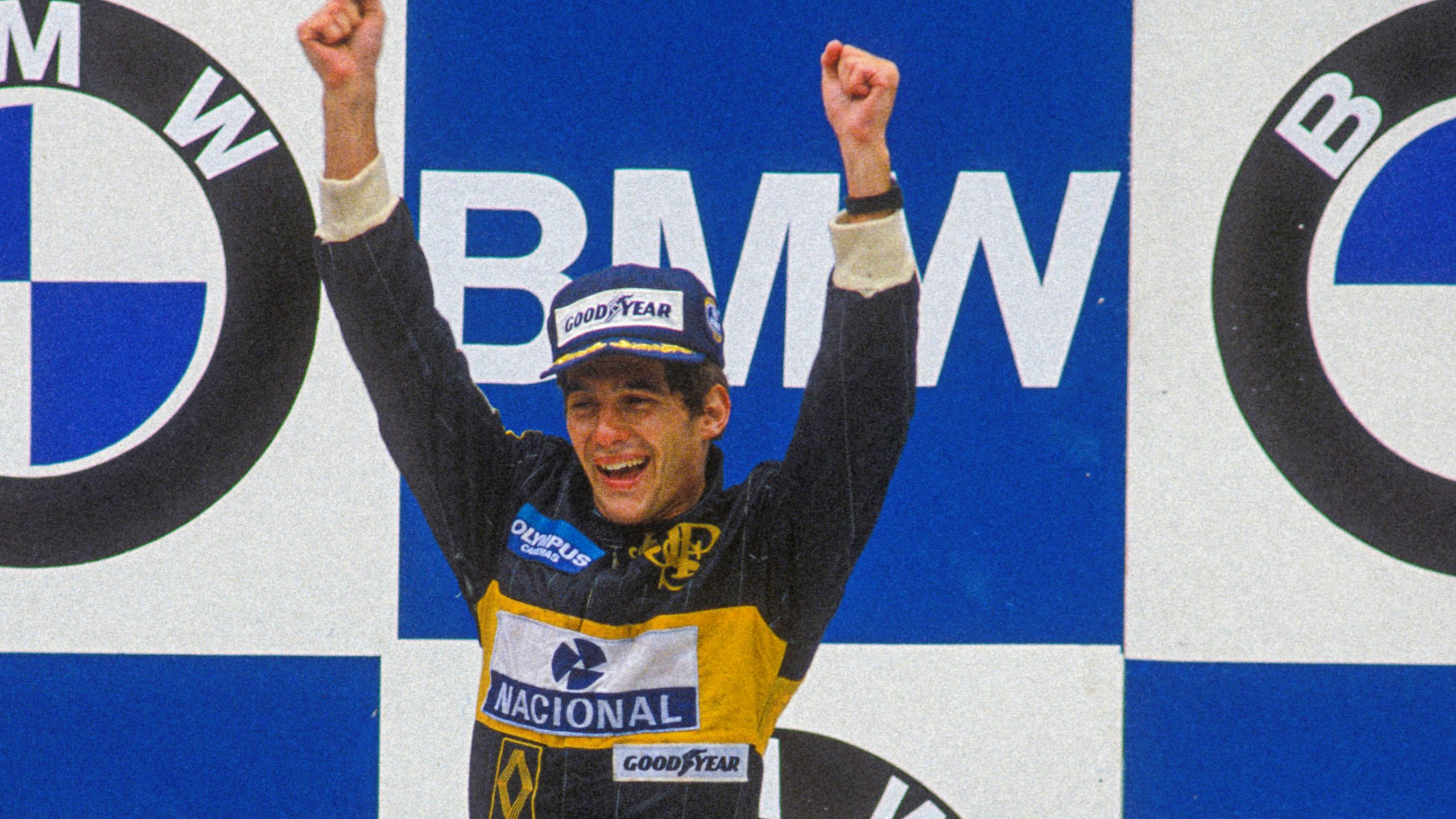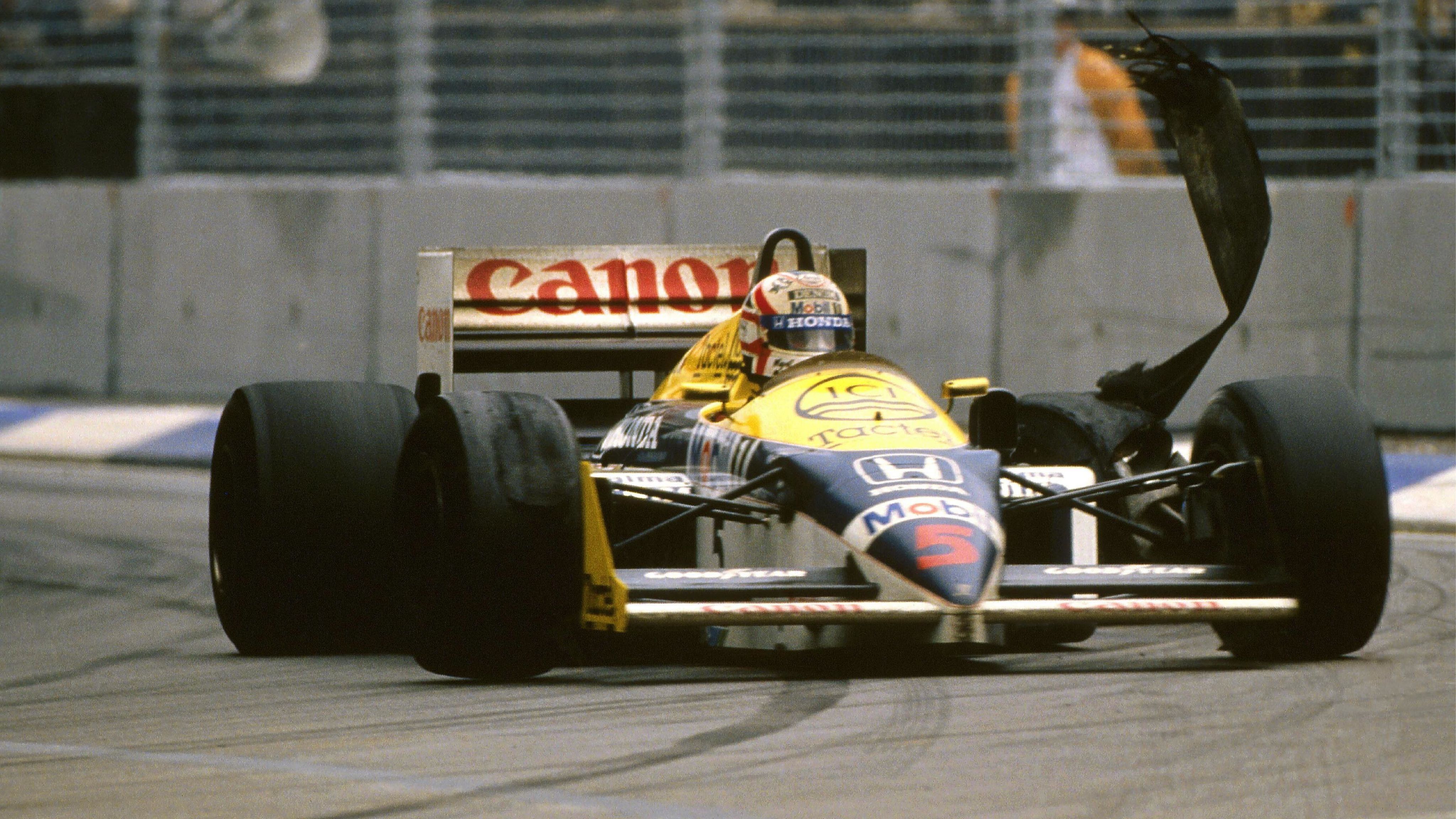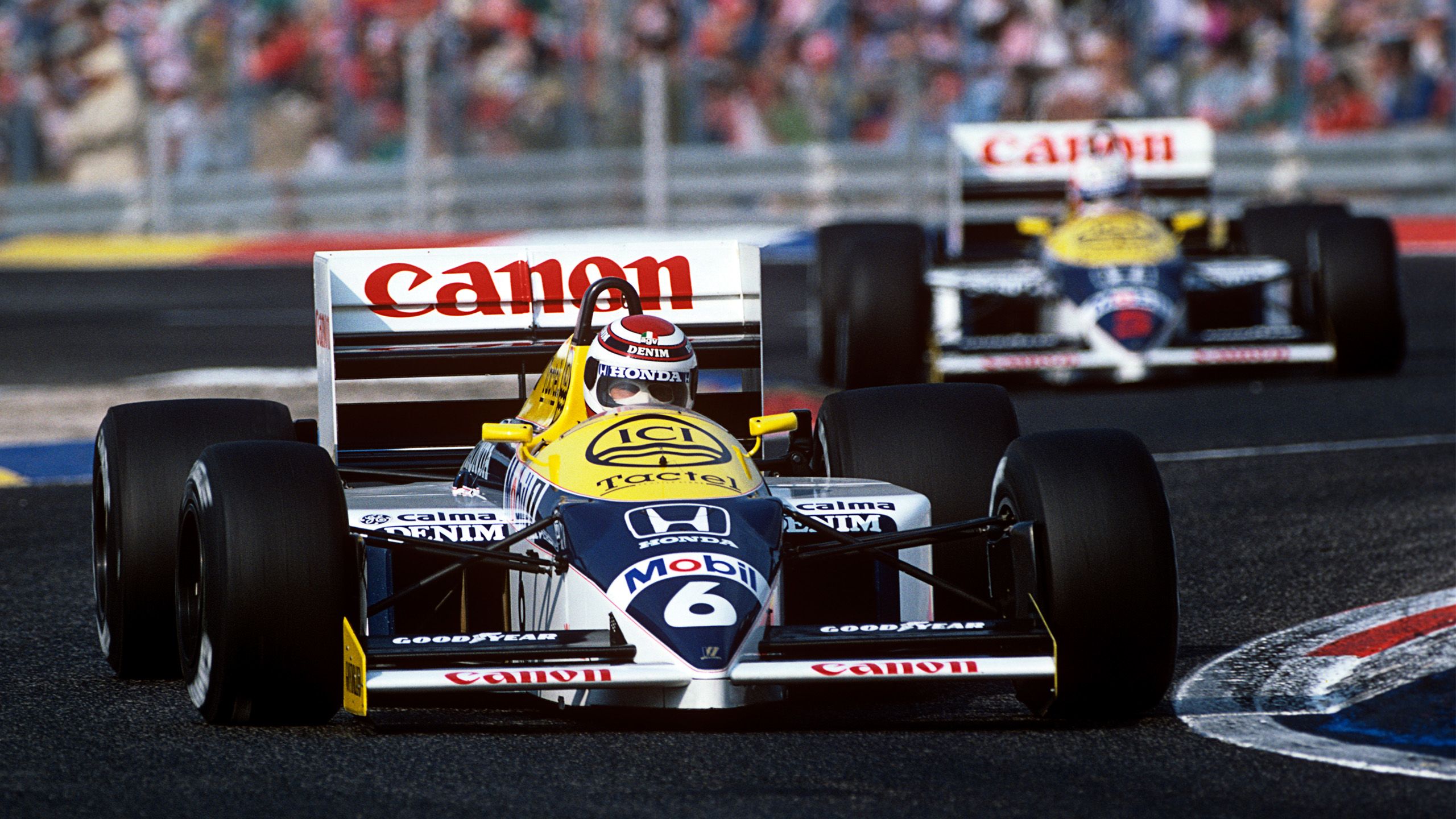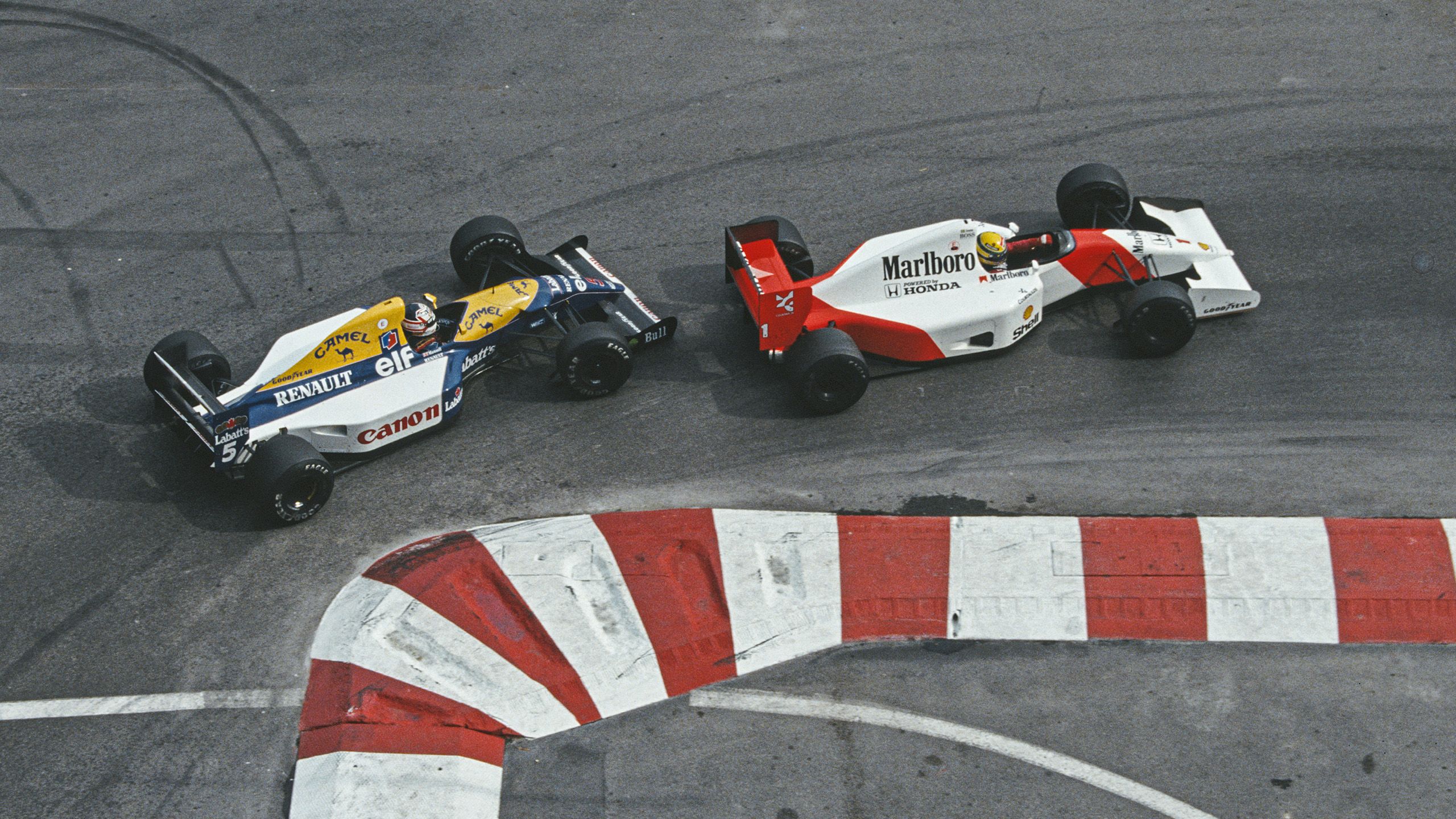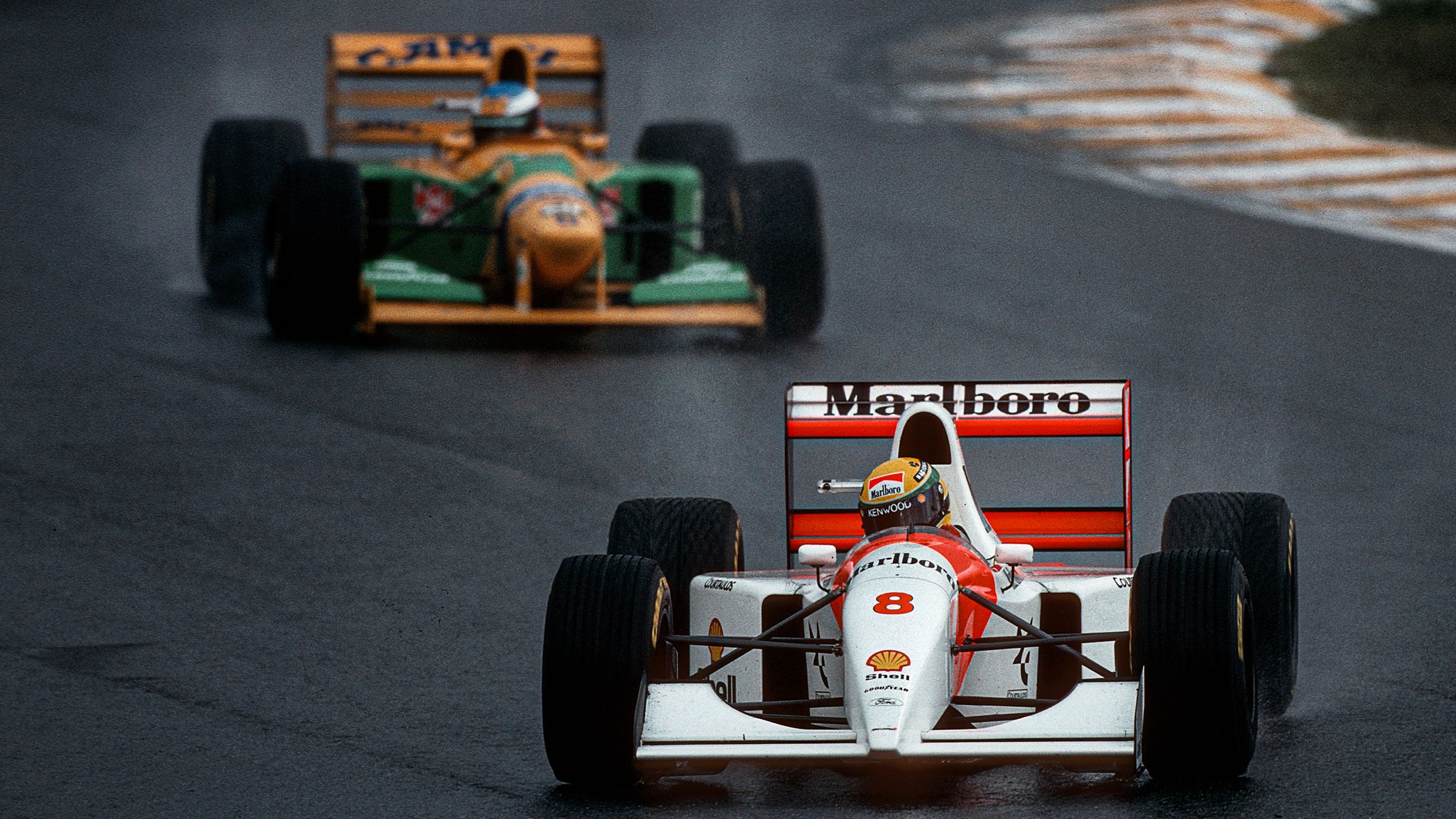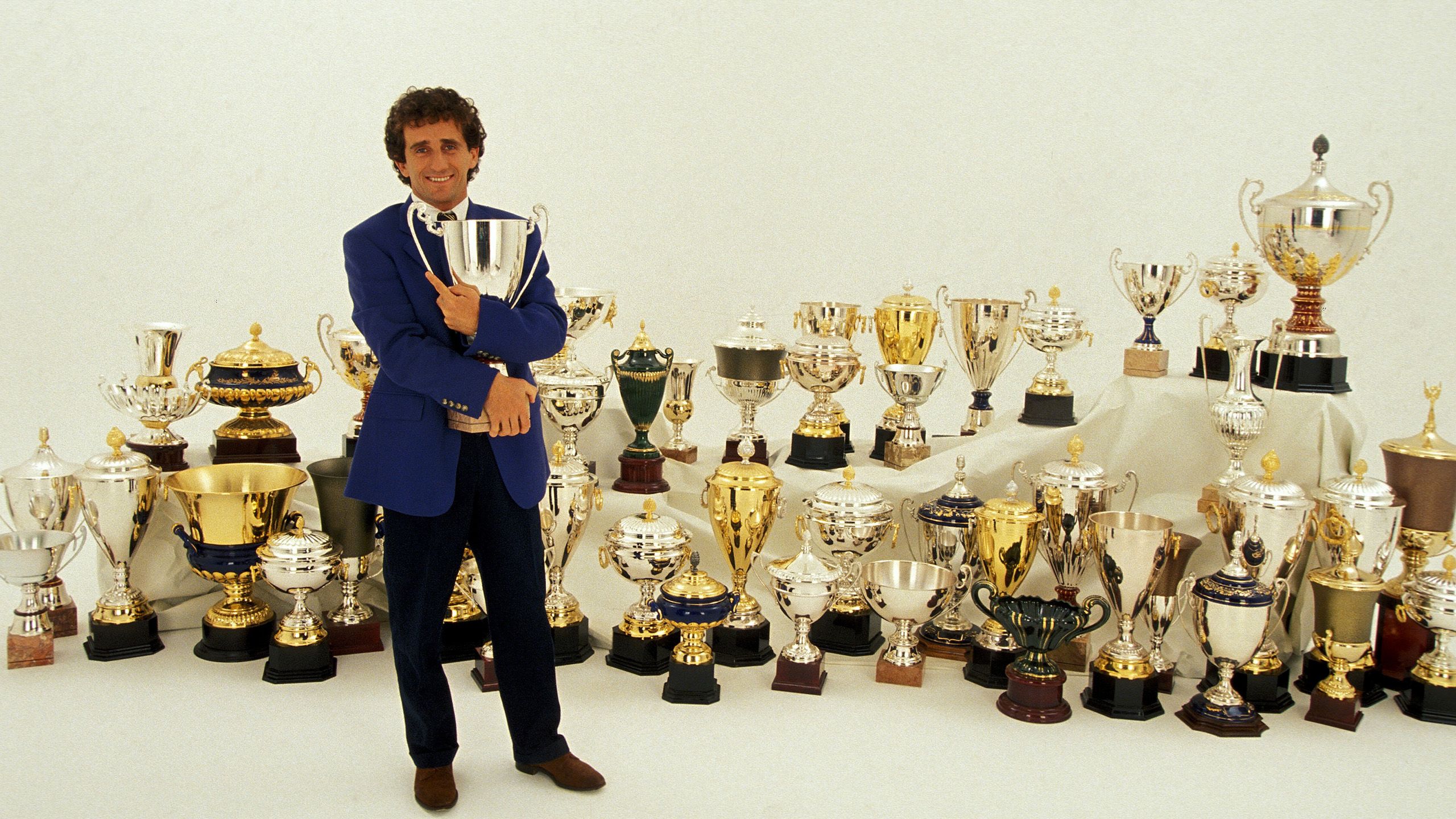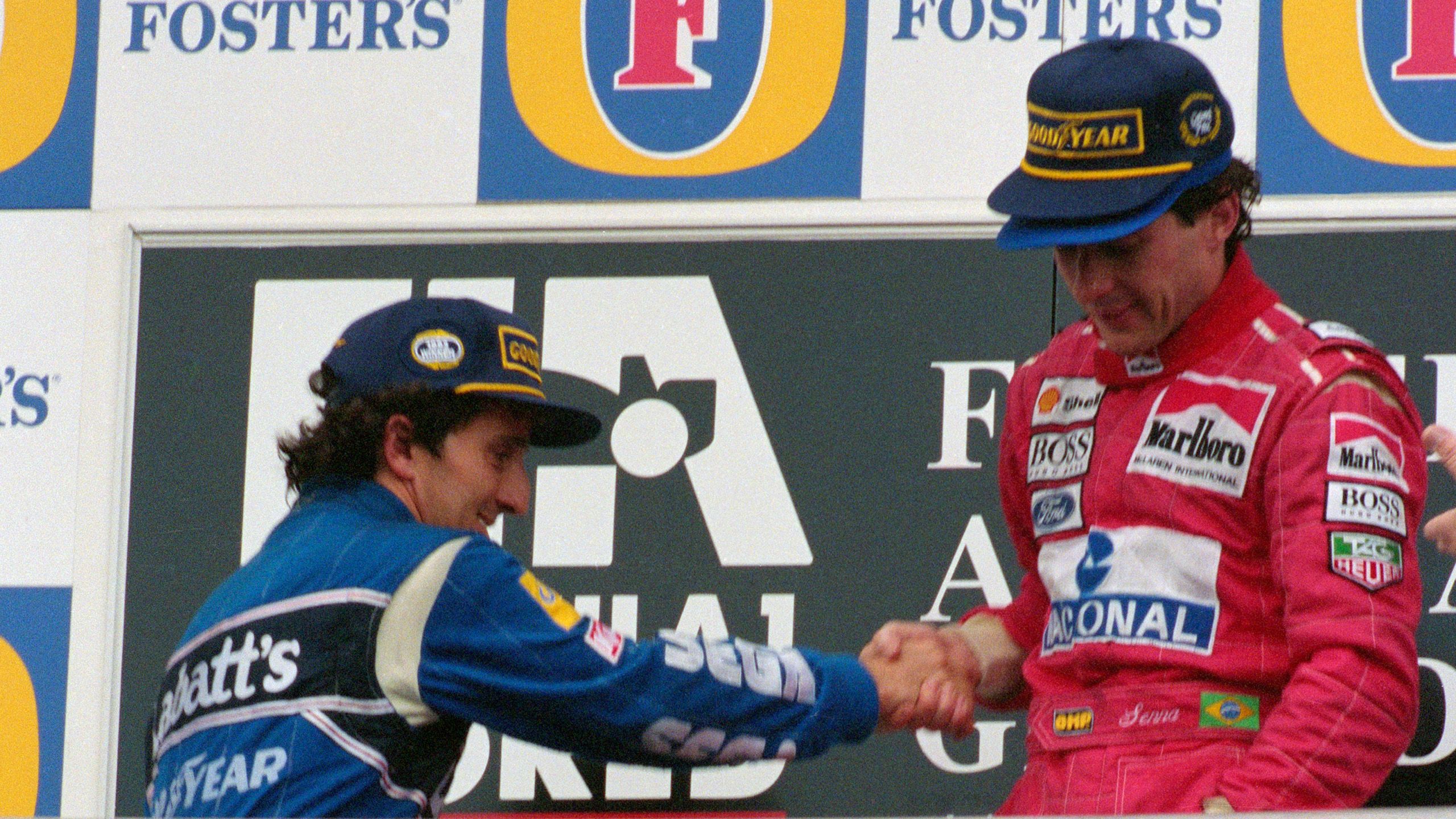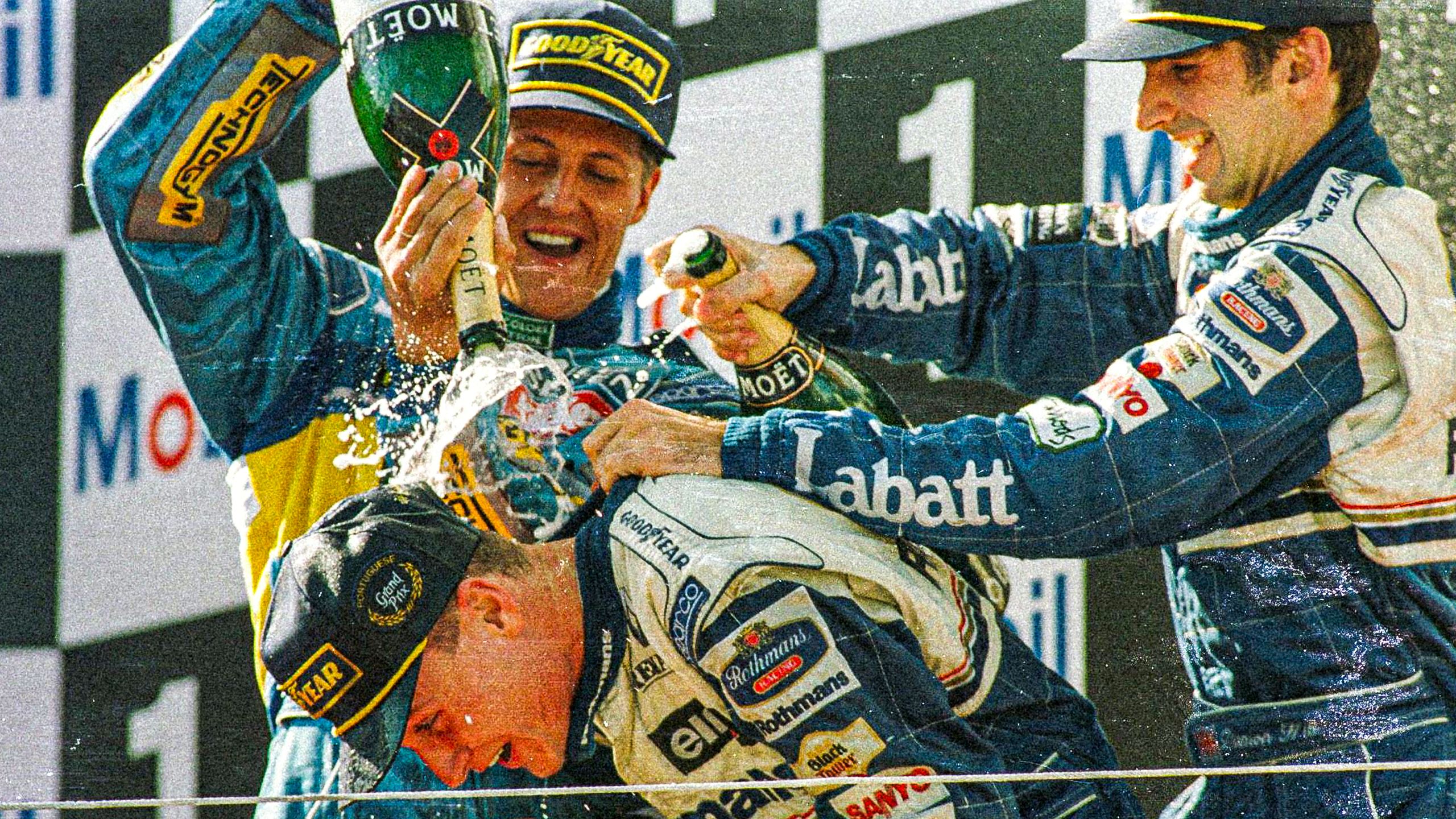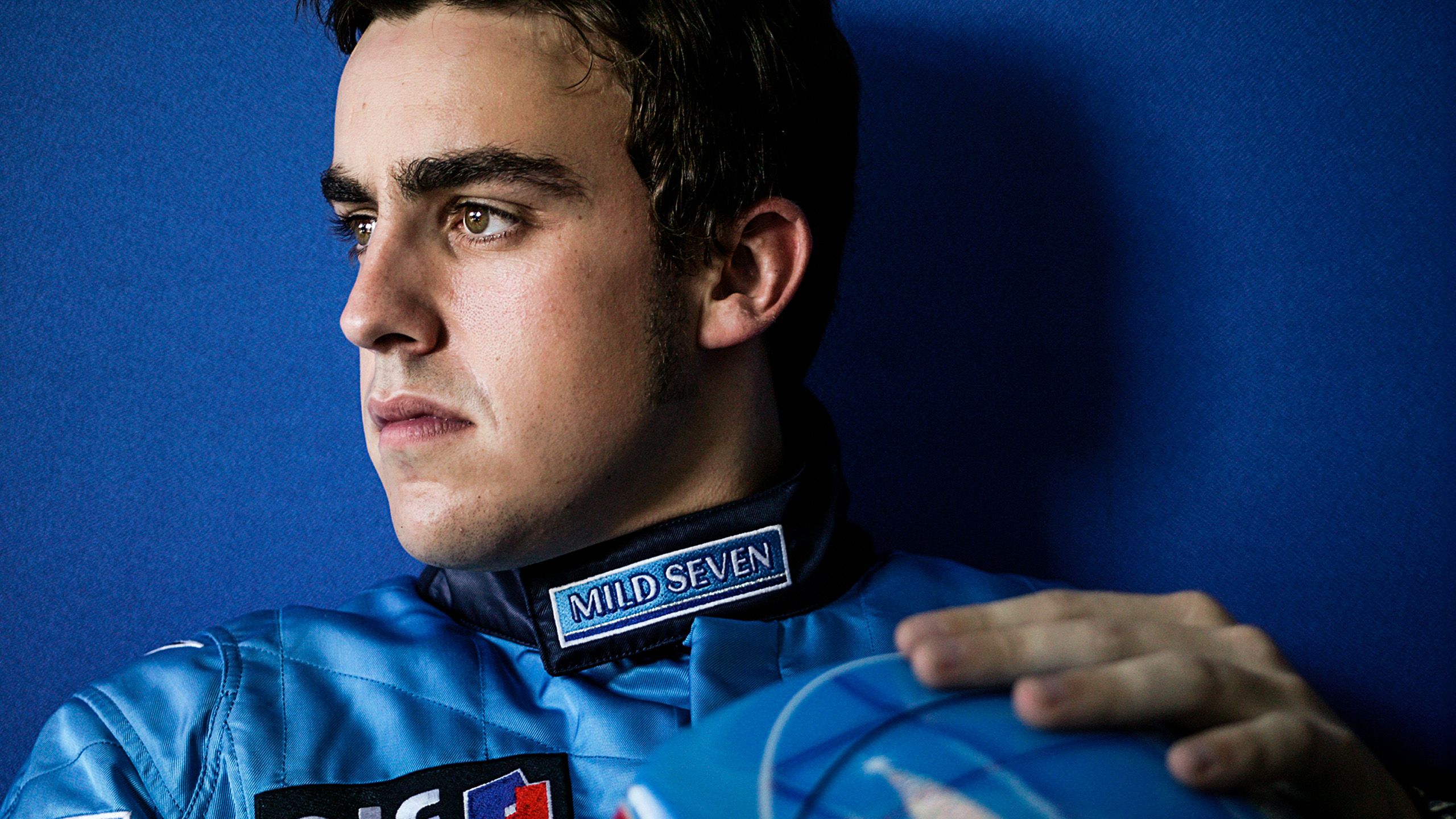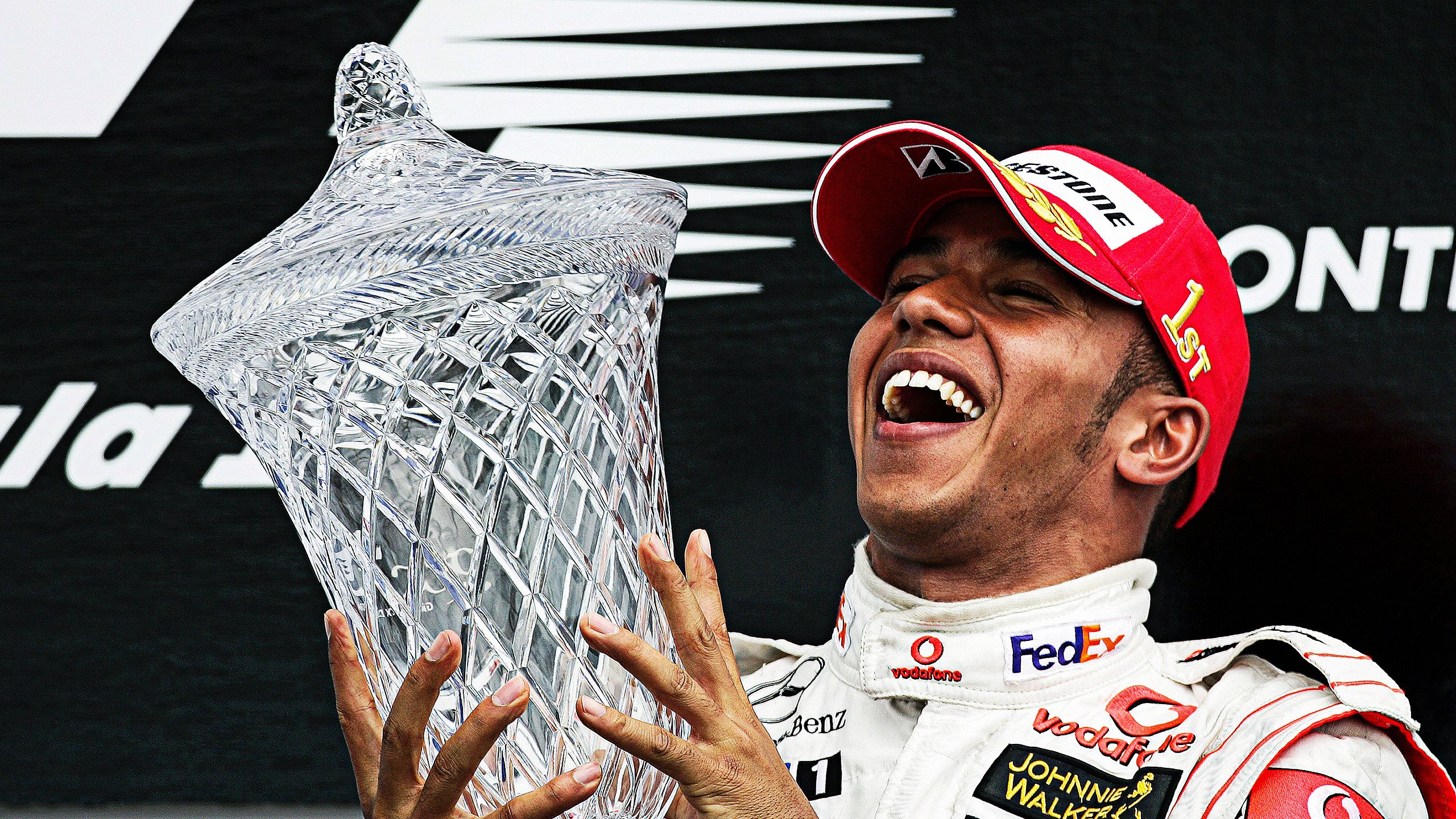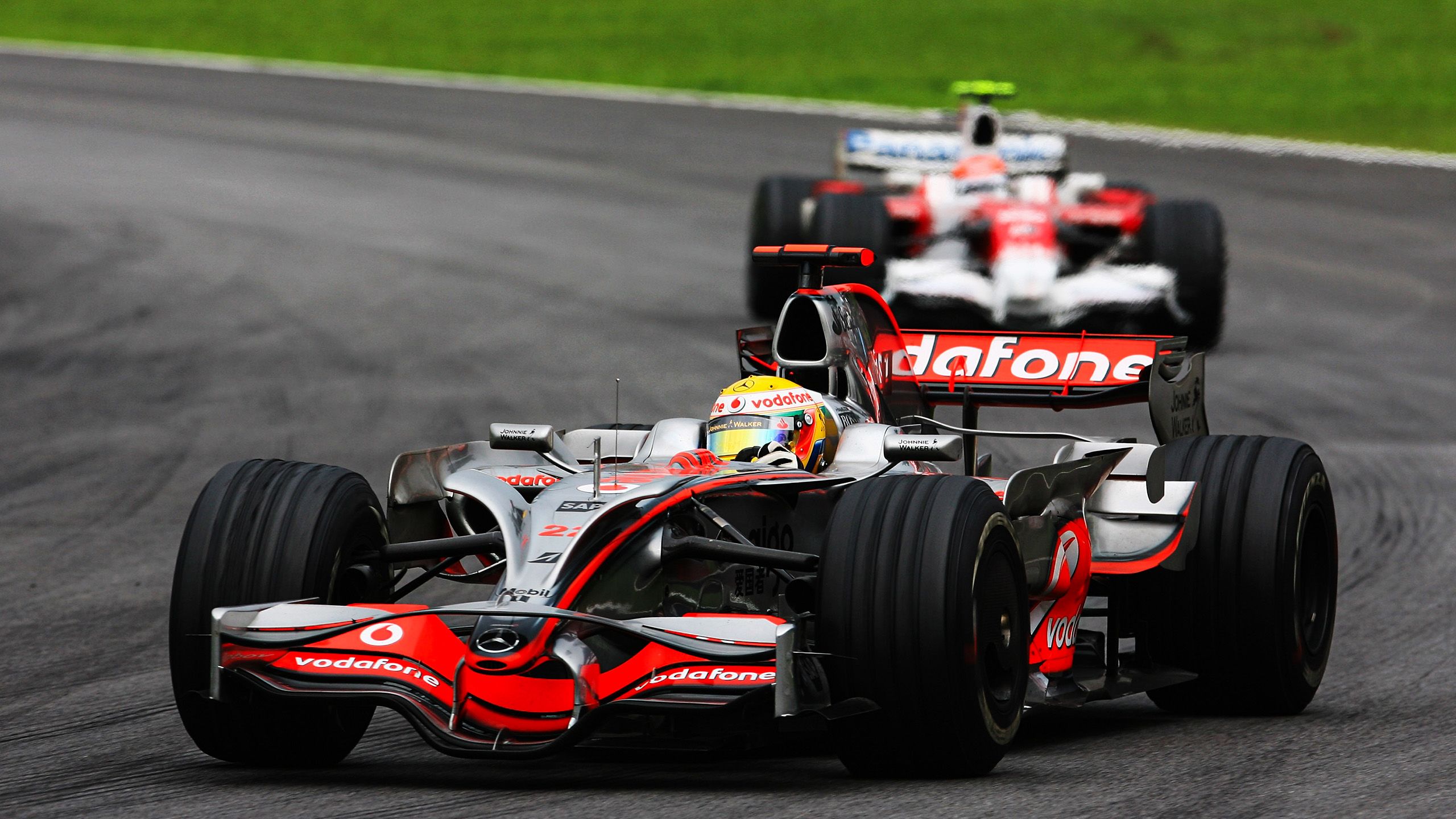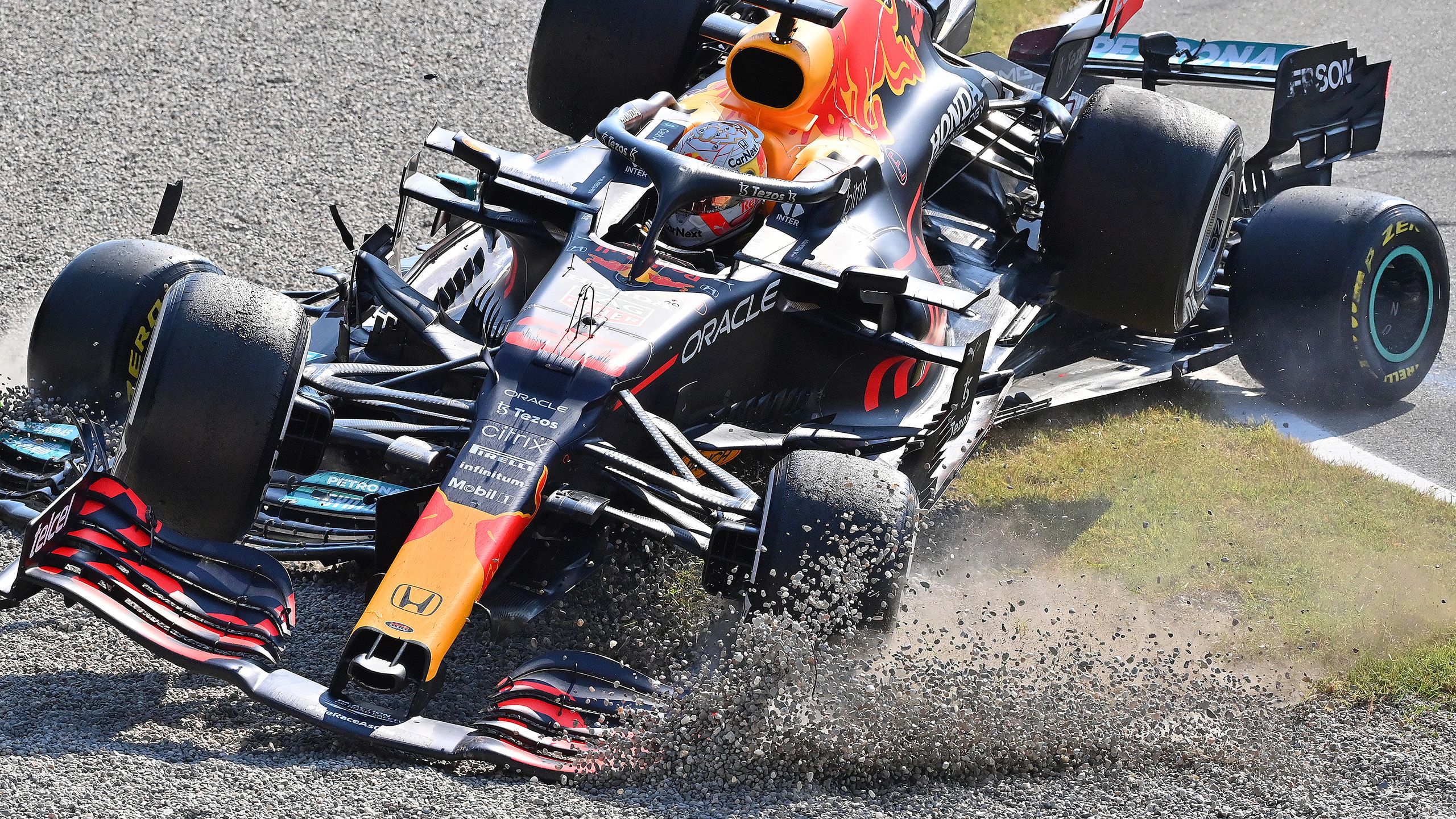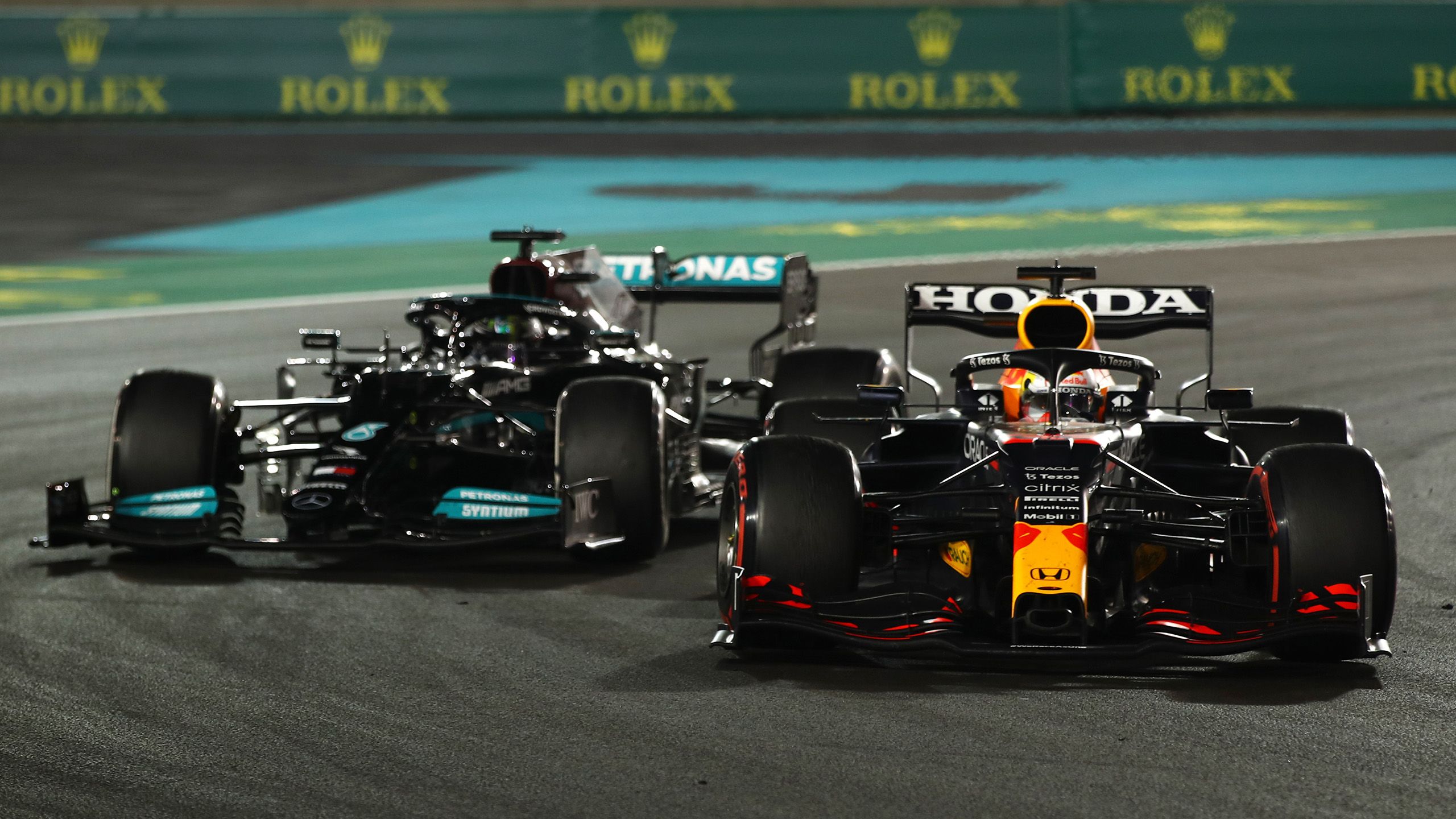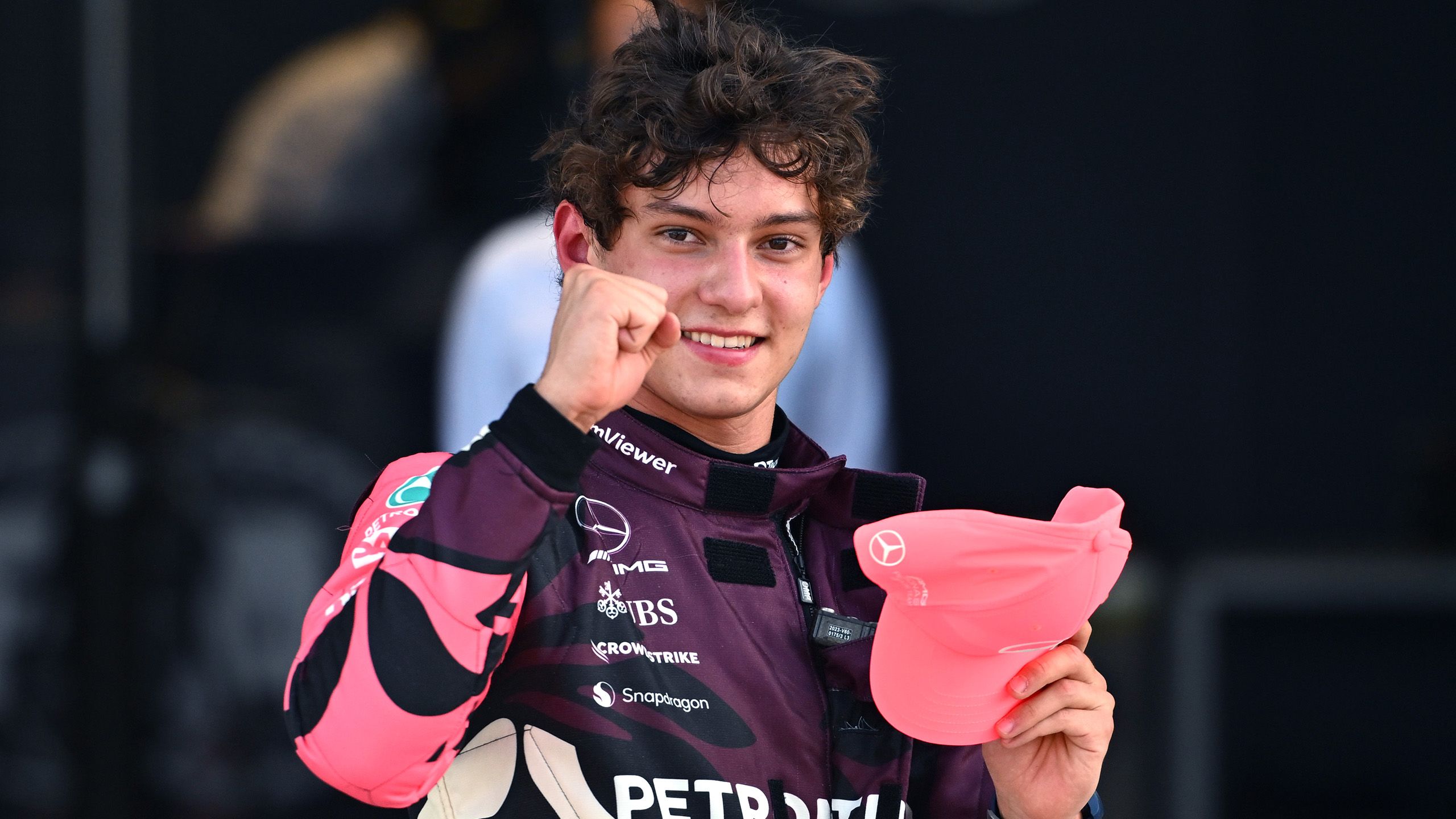F1 at 75
By BBC Sport and Getty Images
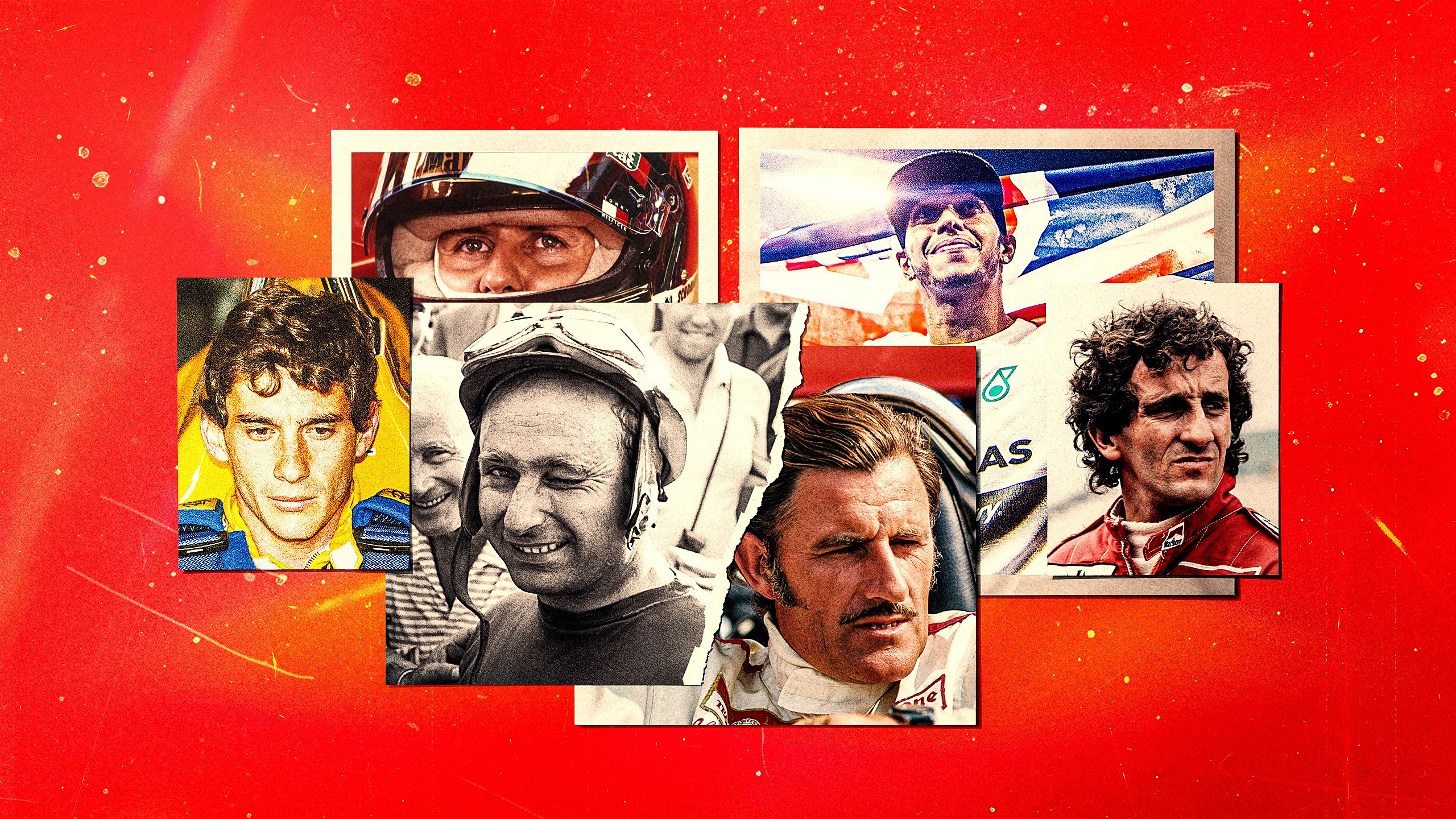
Celebrating 75 Years of Formula 1
In 2025, the Formula 1 World Championship is a multi-billion-dollar industry, criss-crossing the globe over a 24-race season that captures worldwide attention every grand prix weekend.
The drama created by the world's best racing drivers is documented in the Netflix series Drive to Survive, which has helped the sport grow further in popularity in recent years. An F1 movie, starring Brad Pitt, is due to be released next month.
It's a far cry from its beginnings in 1950, when just seven races made up the first World Championship. It began with the British Grand Prix at Silverstone on 13 May, watched by King George VI and Queen Elizabeth, and won by Italian Giuseppe Farina.
From Farina in 1950 to Lewis Hamilton, Max Verstappen and Lando Norris in 2025, F1 has produced thrills, controversy and tragedy. Here, BBC Sport and Getty Images tell the story of the sport, and the characters that have illuminated it, through a selection of images from the past 75 years...
1950s
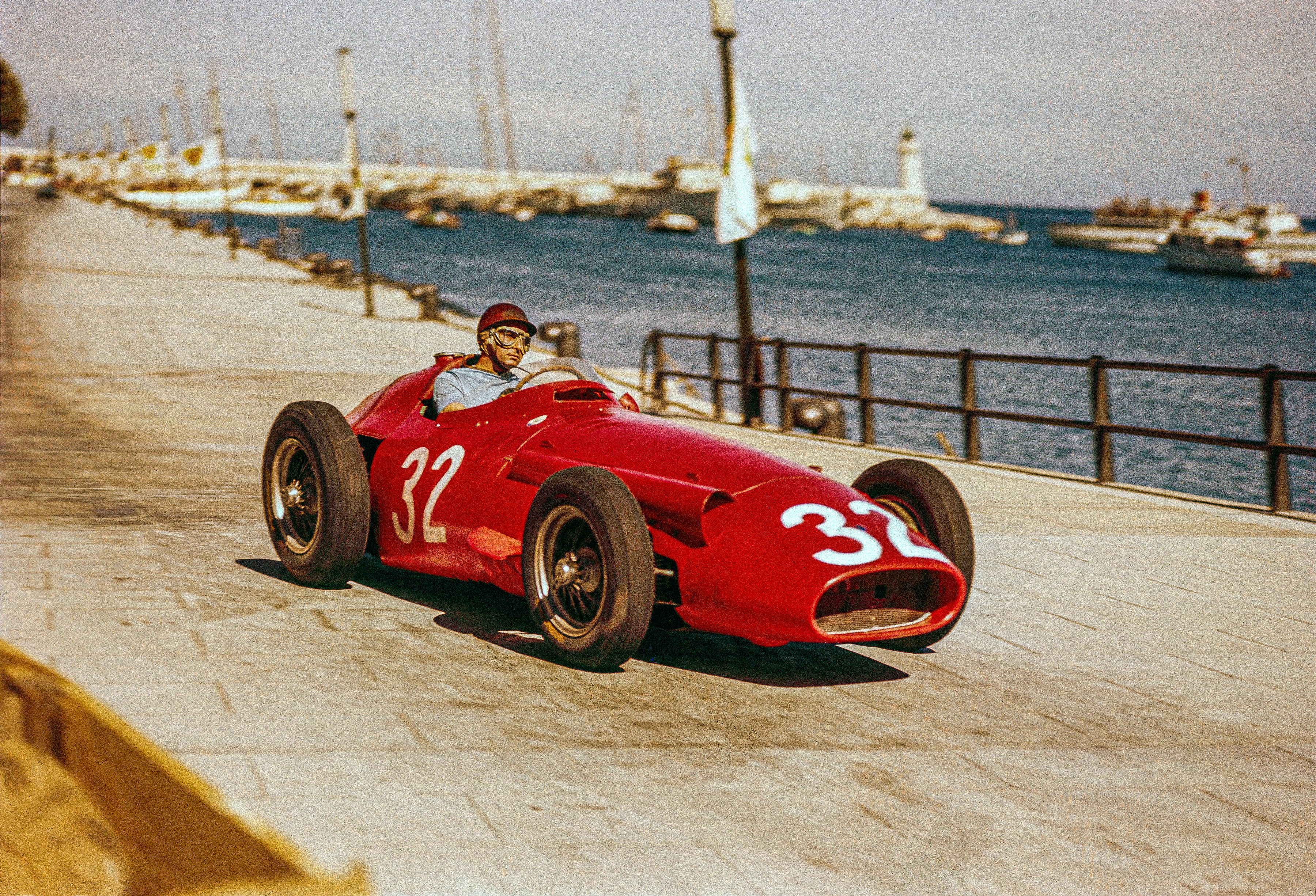
The first decade
Formula 1 in the 1950s was dominated by the great Argentine Juan Manuel Fangio, who won five drivers' championships - a record that would not be matched for nearly 50 years. Britain would get its first world champion too, but the man many considered the greatest after Fangio retired - Stirling Moss - would just miss out on multiple occasions...
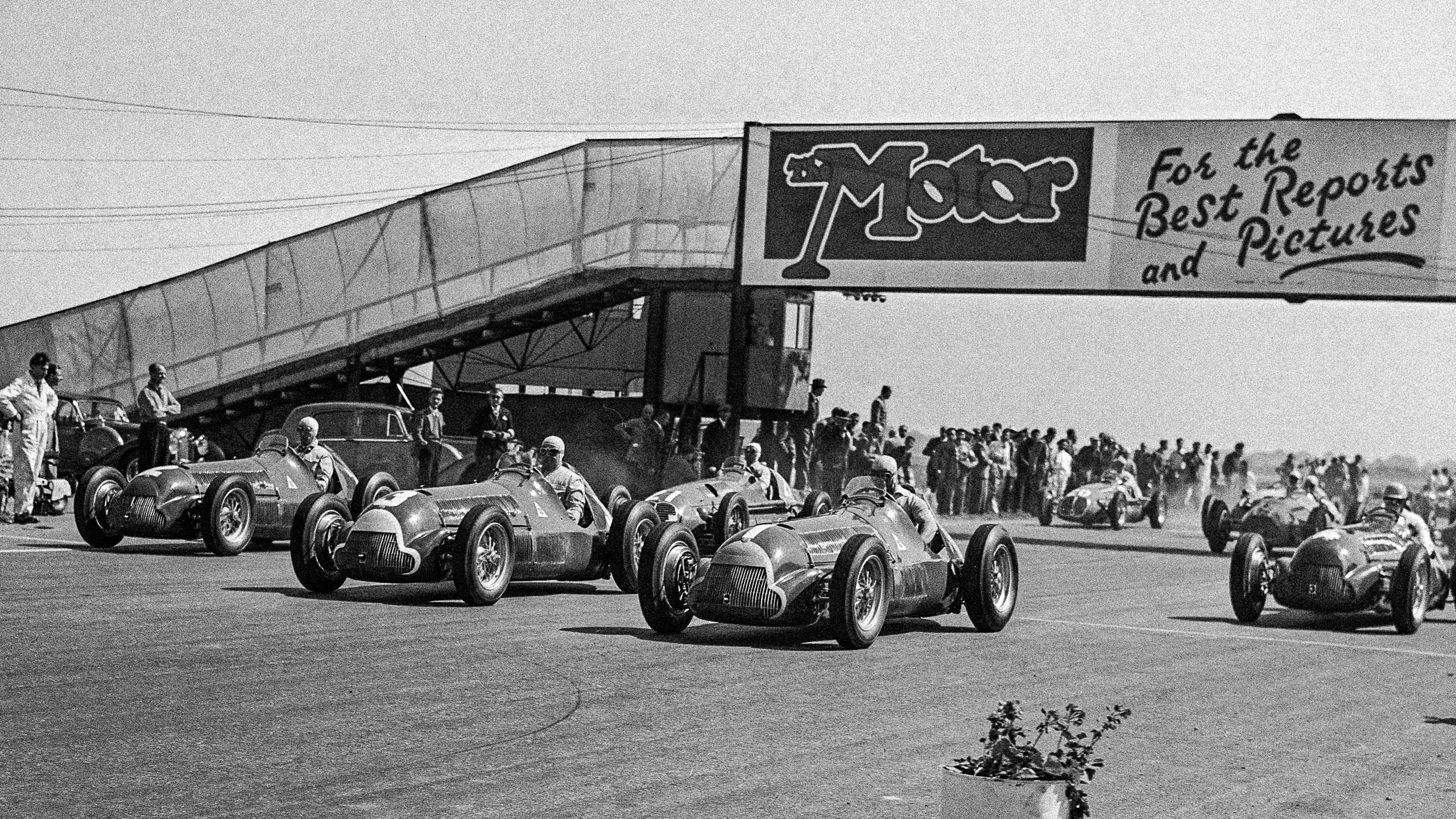
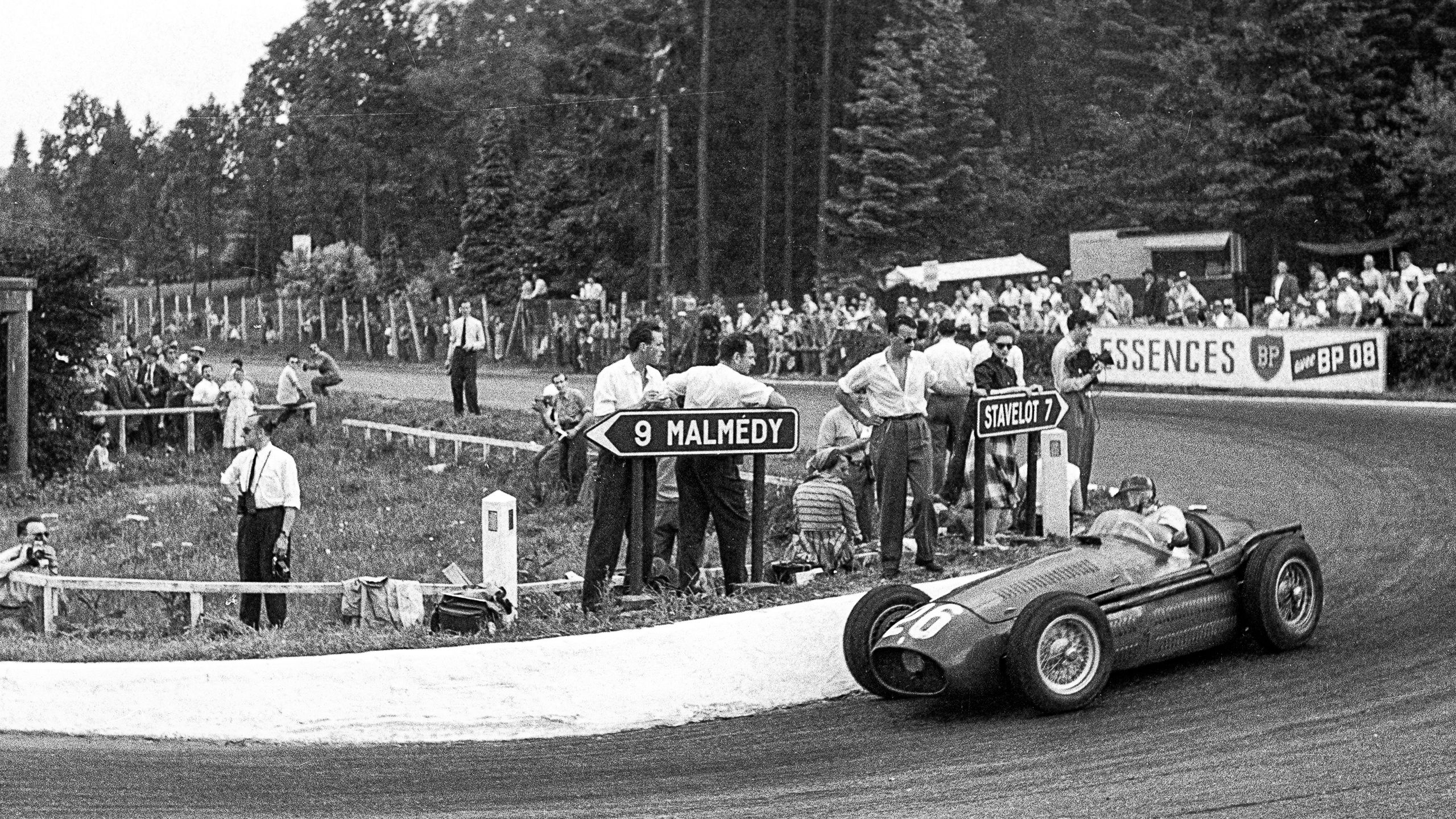
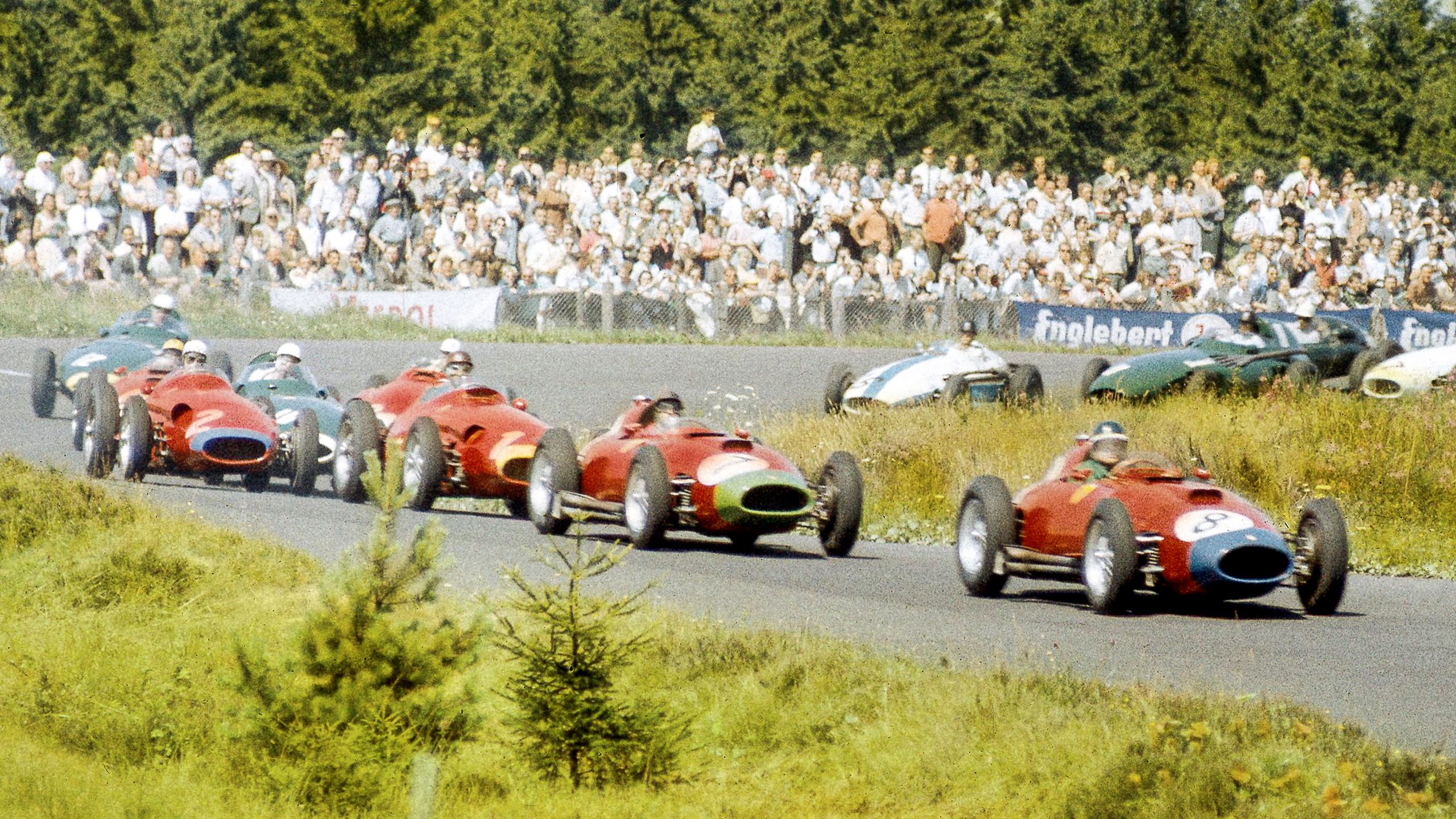
The start of the first Formula 1 World Championship race at Silverstone, won by Giuseppe Farina from pole position for Alfa Romeo.
Juan Manuel Fangio steers his Maserati through La Source hairpin on his way to victory in the 1954 Belgian Grand Prix at Spa-Francorchamps. Fangio competed in 51 F1 grands prix, winning 24. He took 28 pole positions and set 23 fastest laps - and was 46 when he won his final world title in 1957.
The start of the 1957 German Grand Prix at the fearsome 14.2-mile Nurburgring Nordschleife circuit. Britons Mike Hawthorn and Peter Collins, in Ferraris, lead into the South Curve. After a pit stop, Fangio was 50 seconds behind the pair but began lapping 15 seconds faster than the old lap record. He caught and passed them for one of F1's greatest victories.
Giuseppe Farina wins the first F1 World Championship race at Silverstone
The three men who shared the first eight world titles line up for the 1953 Italian Grand Prix: Farina is nearest to us in a Ferrari, with Fangio in a Maserati to his right and Alberto Ascari, champion in 1952 and '53, on the far side in another Ferrari
Stirling Moss (left), Britain's motor racing hero of the 1950s, and Fangio were team-mates at Mercedes in 1955 and great friends
Two icons of F1: Enzo Ferrari, the founder of Scuderia Ferrari, and Fangio at Monza in 1956
Fangio is congratulated after winning the 1956 British Grand Prix at Silverstone
Fangio and British driver Peter Collins at the 1956 Monaco Grand Prix
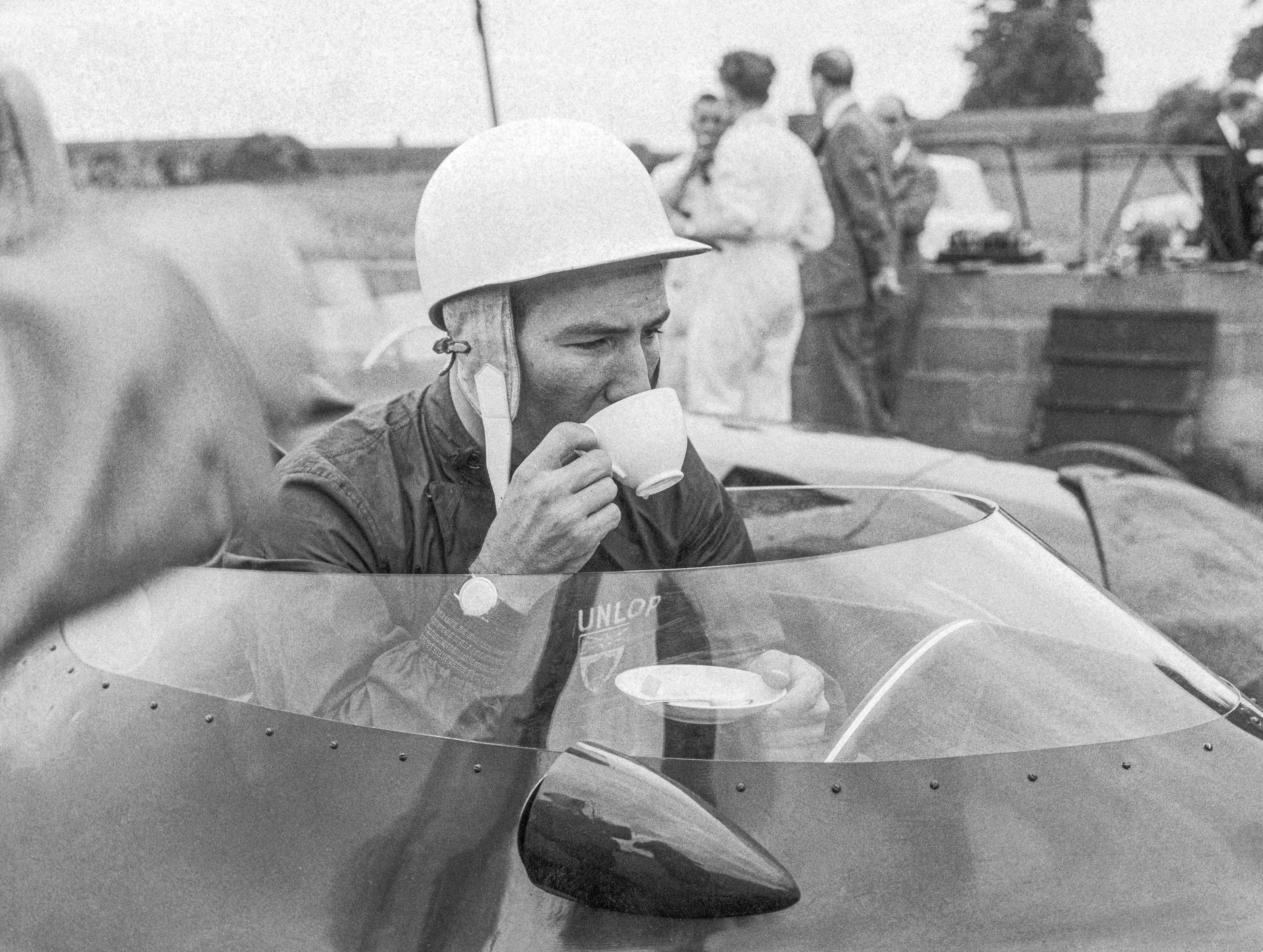
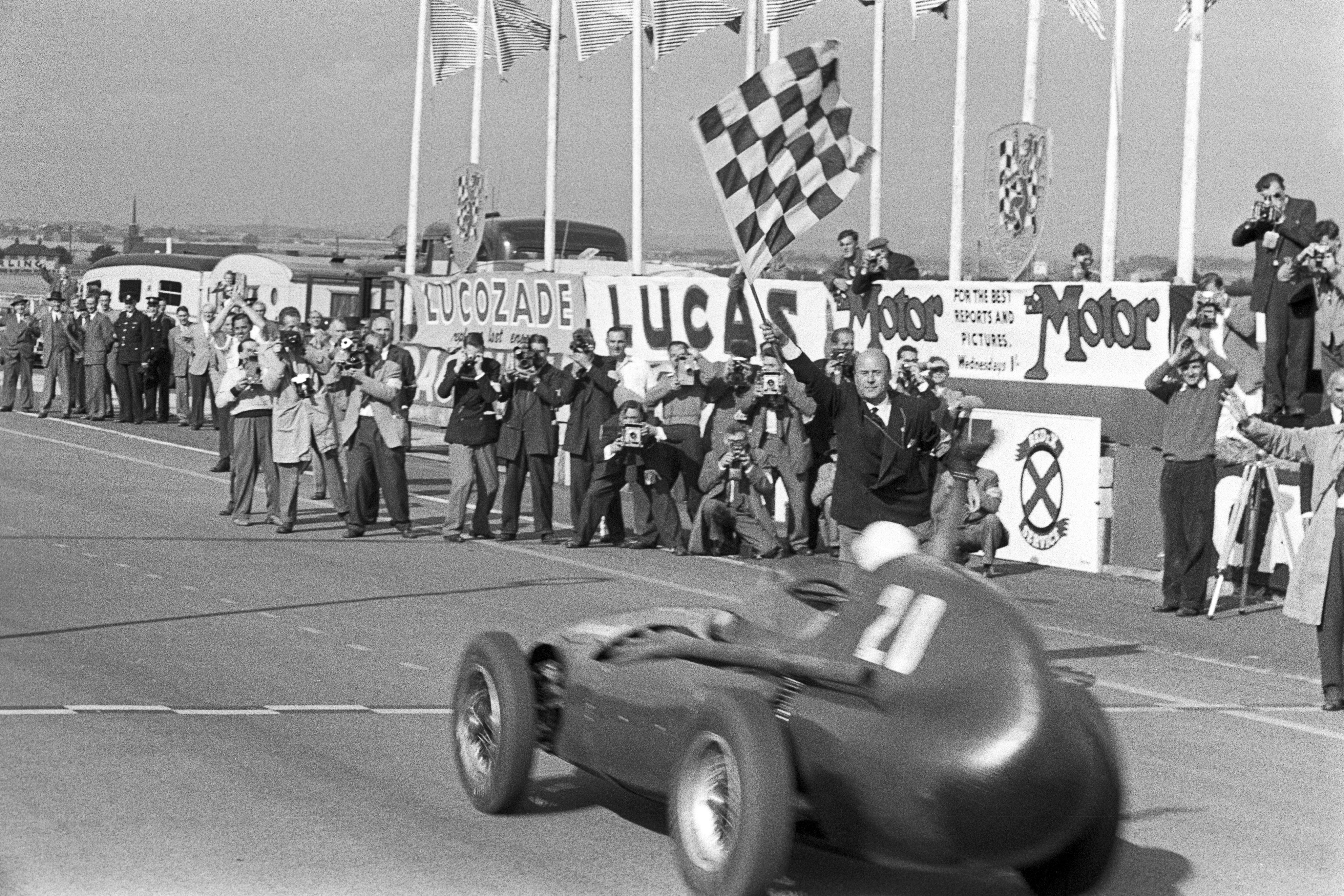
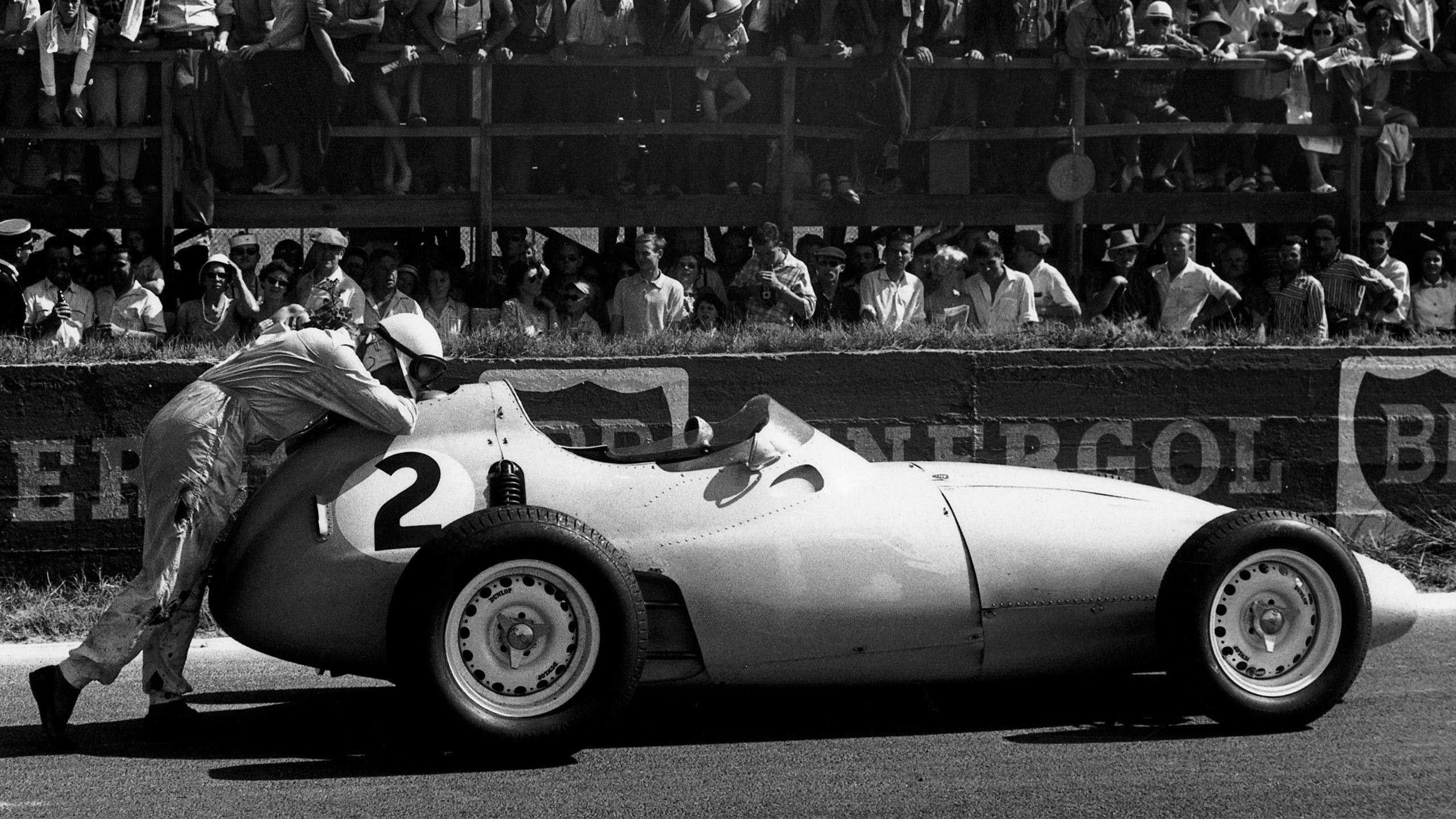
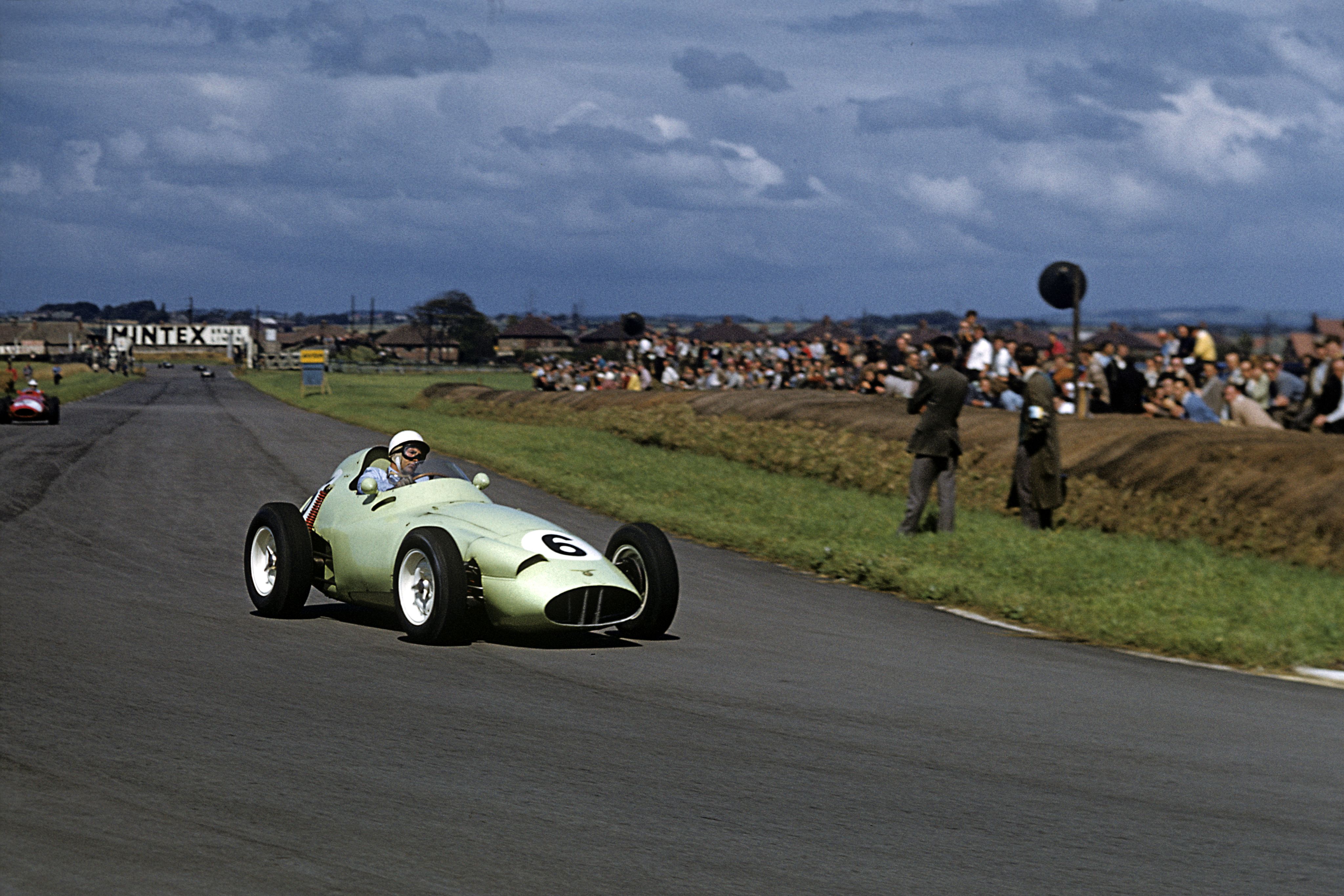
Thirsty work for Stirling Moss in 1959. The Englishman won 16 grands prix and finished second in the drivers' championship in four consecutive seasons, from 1955-58, while poor reliability cost him the title in 1959.
Moss wins the 1957 British Grand Prix at Aintree for Vanwall - the first victory for a British car in an F1 grand prix. Moss shared the victory with Tony Brooks, taking over his fellow Briton's car after his own developed mechanical problems. It was the final time two drivers shared an F1 win.
An exhausted Moss trying to push-start his BRM at the 1959 French Grand Prix after spinning off. A severe accident at Goodwood in 1962 ended Moss' career. He won 212 of the 529 races he entered across all motorsport categories and was named BBC Sports Personality of the Year in 1961. In retirement, he remained a hugely popular figure and continued to race in historic cars and legends events until the age of 81. Moss died in 2020 aged 90.
Aintree racecourse was home to a different kind of horsepower when it staged the British Grand Prix on five occasions between 1955 and 1962. This is Stirling Moss in 1959, when he finished second to Australian Jack Brabham.
A squadron of Ferraris in the pits at Monza for the 1956 Italian Grand Prix
Stirling Moss and fellow Briton Mike Hawthorn (right) contested the 1958 World Championship following the retirement of Fangio
Maria Teresa de Filippis - the first woman to compete in F1 - at Monza in 1958. The Italian started three races for Maserati
Peter Collins in his Ferrari at the 1958 British Grand Prix at Silverstone - a race he won. Two weeks later Collins was killed in a crash at the German Grand Prix at the Nurburgring
Hawthorn on his way to second place at the 1958 Moroccan Grand Prix - a result that ensured he beat Moss to the world title by one point
Hawthorn retired from F1 after becoming Britain's first world champion. Three months later he was killed in a road accident on the A3 in Surrey
1960s
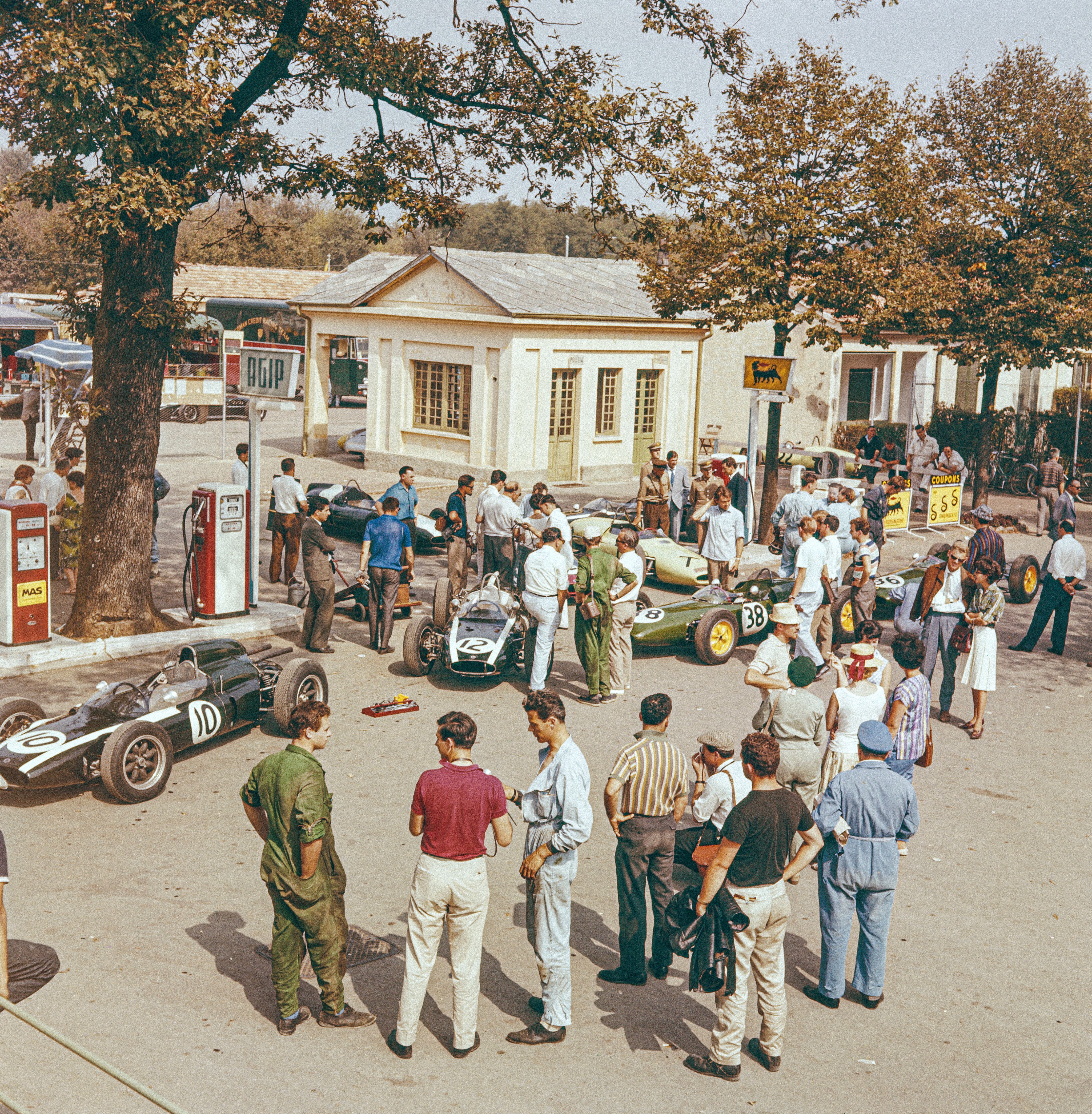
British takeover
After Italian manufacturers Ferrari, Alfa Romeo and Maserati dominated the 1950s, Britain came to the fore in the 1960s. Six of the 10 drivers' championships were won by British men, while Lotus became the dominant team. However, the driver many considered to be the greatest of them all - Scot Jim Clark - would pay the ultimate price...
Englishman Graham Hill, pictured at the 1960 Monaco Grand Prix, became known as 'Mr Monaco' - winning in the principality on five occasions
A wet start for the 1961 British Grand Prix at Aintree, dominated by the 'Sharknose' Ferraris and won by Wolfgang von Trips
Jim Clark talks to Bruce McLaren - the man who founded the McLaren team - before the 1962 German Grand Prix
Hill, Clark and Jackie Stewart lead the field at the 1965 Belgian Grand Prix. Clark hated Spa, considering it too dangerous, but won there four years on the trot - from 1962-65. In 1963 he won by nearly five minutes
Clark in conversation with Lotus team founder and innovative designer Colin Chapman
Stewart in a BRM with a Nikon SLR camera on top of his helmet - to give a drivers' onboard viewpoint - in practice at Monaco in 1966
A 25-year-old Stewart in October 1964, less than two months before his F1 debut
Jack Brabham at the 1966 Dutch Grand Prix - a race he won in a car bearing his own name on the way to his third drivers' championship
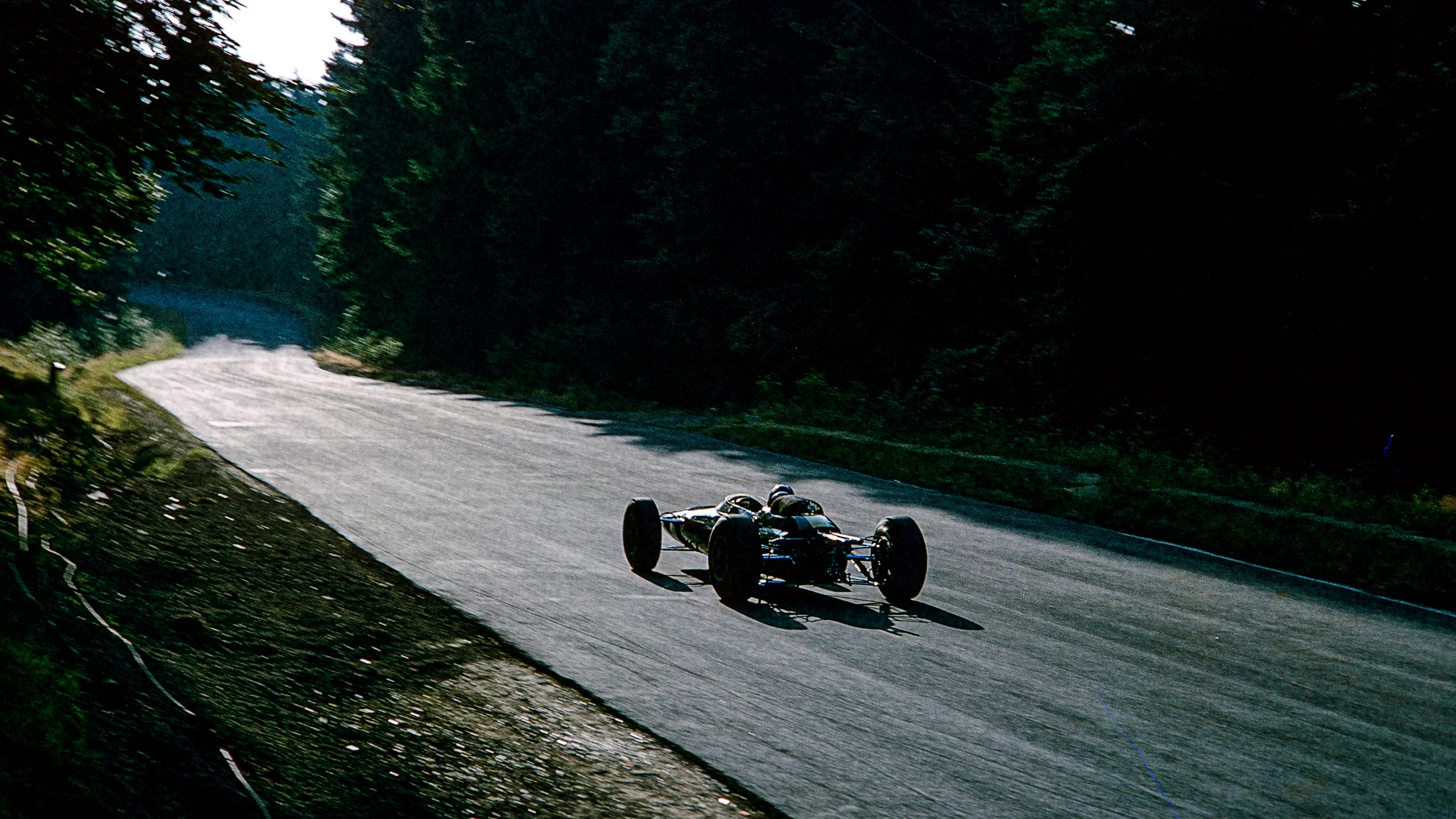
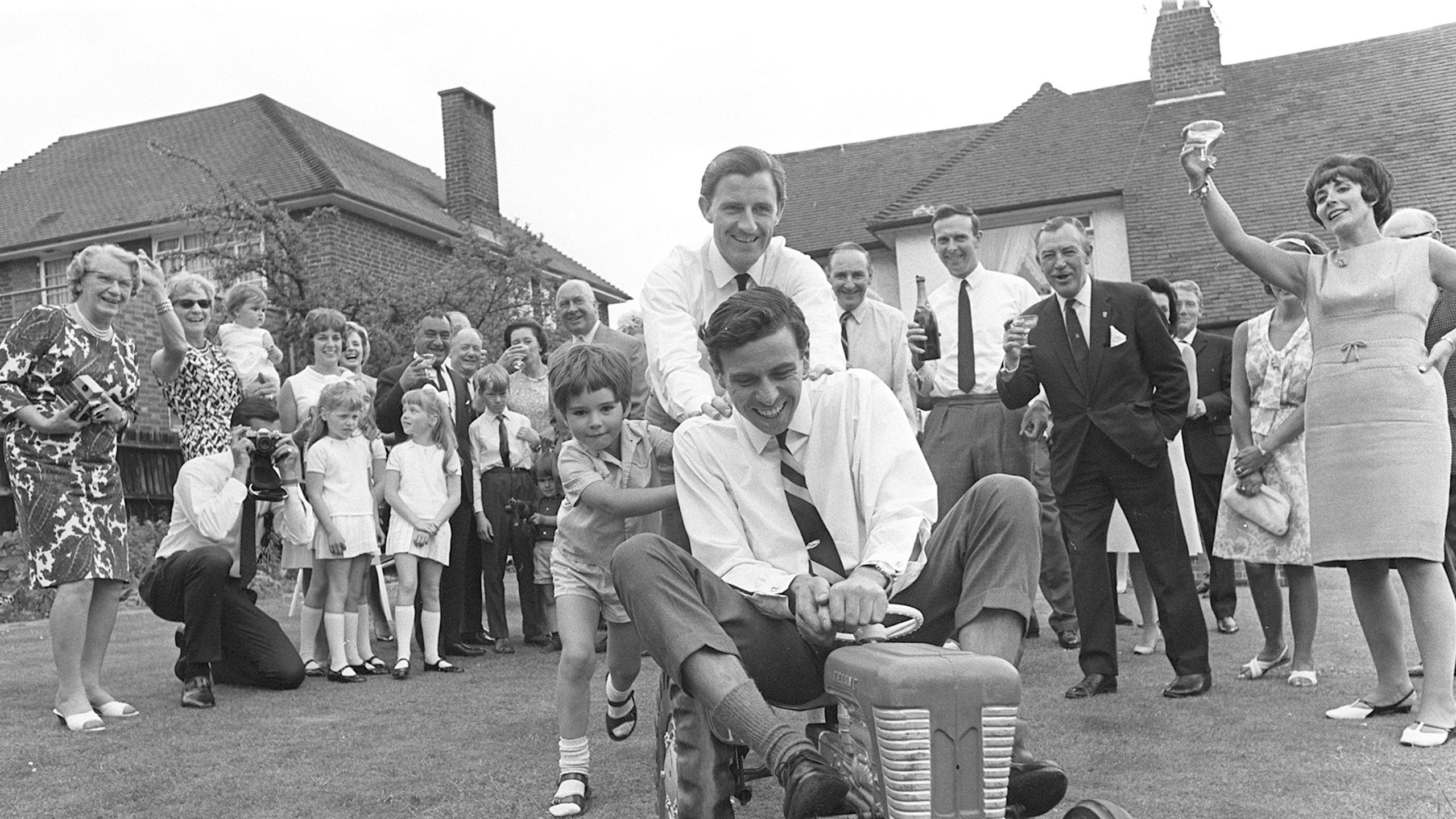
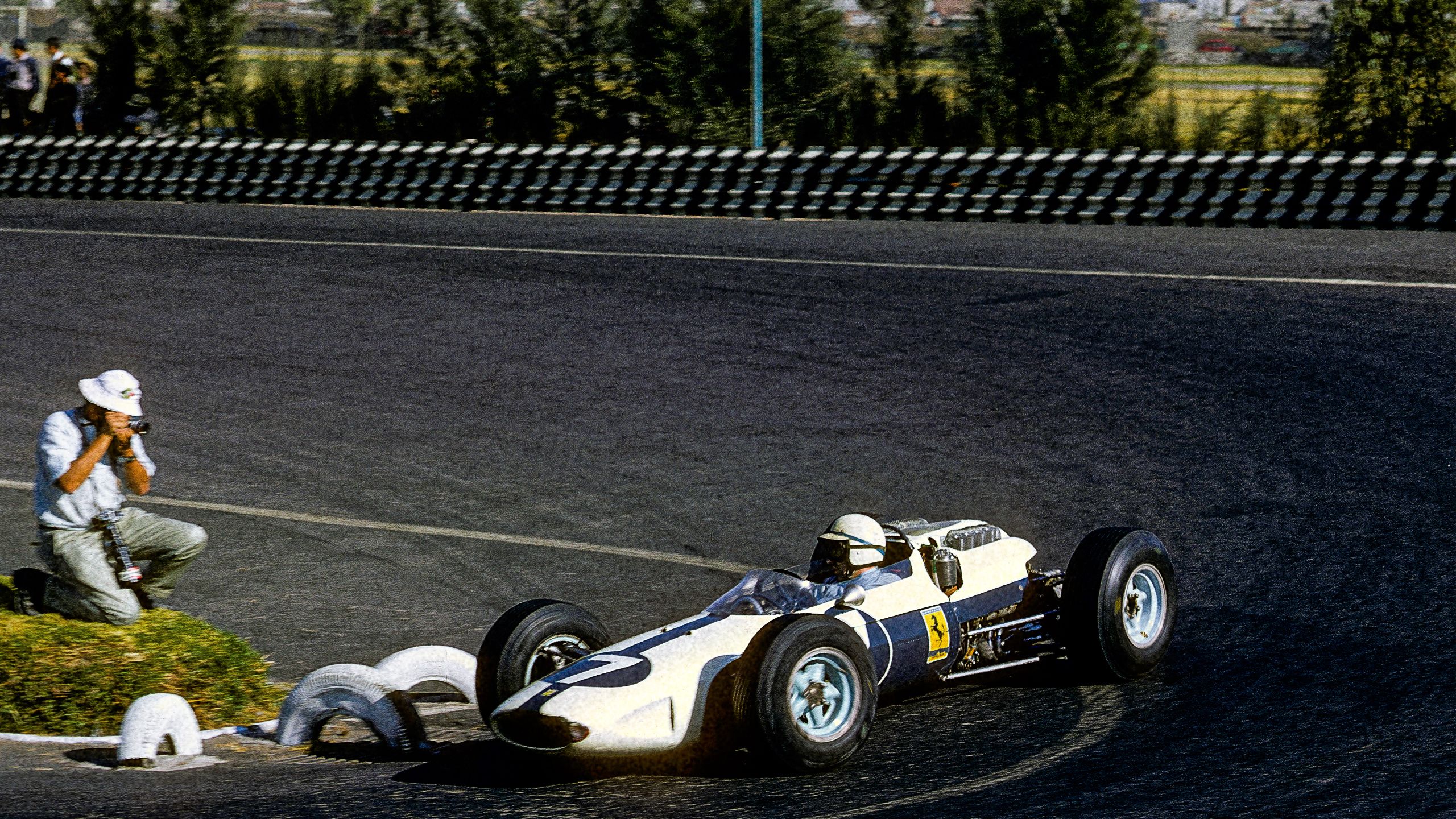
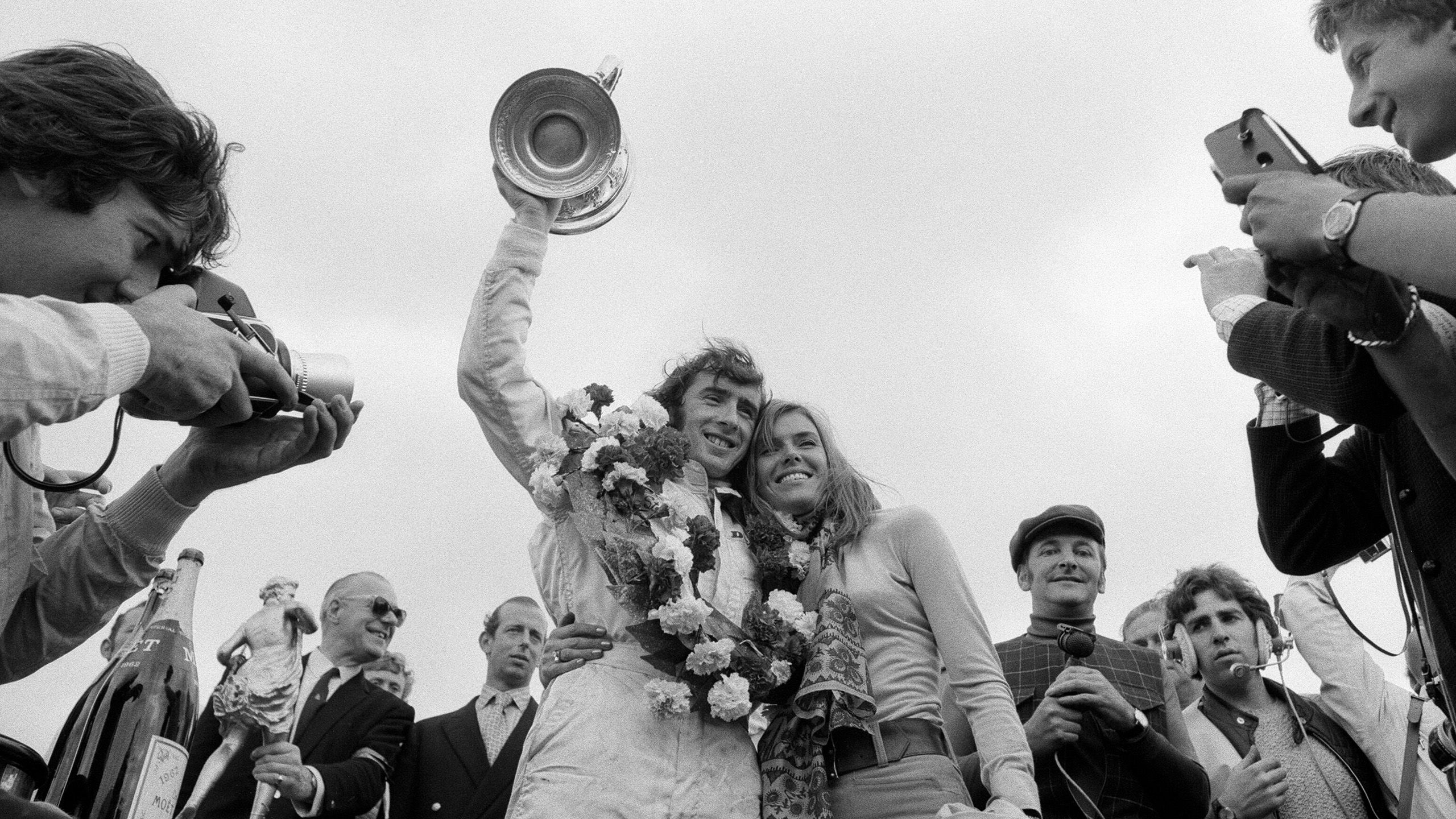
Jim Clark drives his Lotus through the trees in the Eifel mountains at the Nurburgring in 1964. In 72 F1 starts, Clark won 25 races and took 33 pole positions - both records at the time. The son of a farmer in the Scottish borders, Clark was world champion in 1963 and 1965, and also won the 1965 Indy 500. His contemporary Jean-Pierre Beltoise said: "Jimmy was a demi-God."
Future world champion Damon Hill is joined by his dad Graham in pushing Jim Clark and a toy tractor. The occasion was a party thrown by Graham's wife, Bette, after he won the 1966 Indy 500. Graham Hill remains the only driver to have won the 'triple crown' of F1 World Championship, Le Mans 24 Hour and Indy 500. Despite only passing his driving test aged 24, Hill made it to F1 and won the world title in 1962 and 1968. His debonair manner, humour and perfectly groomed moustache gave him star quality. He continued racing well into his 40s and set up his own team before finally retiring in 1975. In November that year, Hill crashed his light aeroplane trying to land in dense fog at Elstree. He was killed, alongside young English driver Tony Brise and four team members.
John Surtees remains the only man to be world champion on two wheels and four. He won four 500cc motorcycling titles - in 1956, 1958, 1959 and 1960 - and the F1 crown in 1964. The son of a south London motorbike dealer, Surtees is pictured in a white and blue Ferrari at the 1964 Mexican Grand Prix, where he pipped fellow Britons Graham Hill and Jim Clark to the drivers' championship.
Jackie Stewart celebrates winning the 1969 British Grand Prix at Silverstone with his wife Helen. The Scot secured the first of his three world titles that year, also triumphing in 1971 and 1973. He won 27 grands prix in 99 starts - a record until it was beaten by Alain Prost in 1987.
Damon Hill sits in a toy car at his 1961 christening surrounded by F1 drivers: Bruce McLaren, Stirling Moss, Tony Brooks, dad Graham, Jo Bonnier and Wolfgang von Trips:
Graham Hill is mobbed by fans at Watkins Glen after winning the 1965 US Grand Prix
Jim Clark takes the spoils after winning at Silverstone in 1965. Hill was second and John Surtees third in the last British Grand Prix to have an all-British podium
Race winner Clark celebrates with Lotus team-mate Hill, who finished second, after the 1967 US Grand Prix at Watkins Glen
The aftermath of Clark's fatal accident in a Formula 2 race at Hockenheim, Germany, in 1968. Britain, and the F1 world, was stunned. Fellow driver Chris Amon said: "If it could happen to him, what chance did the rest of us have?"
After Clark's death, Hill became the Lotus team leader. He is pictured at the 1968 Spanish Grand Prix in the first F1 car to carry the colours of its main sponsor - Gold Leaf
In atrocious conditions of heavy rain and thick fog, Jackie Stewart won the 1968 German Grand Prix at the Nurburgring by just over four minutes
Stewart in his Matra before the 1969 race at the Nurburgring
1970s
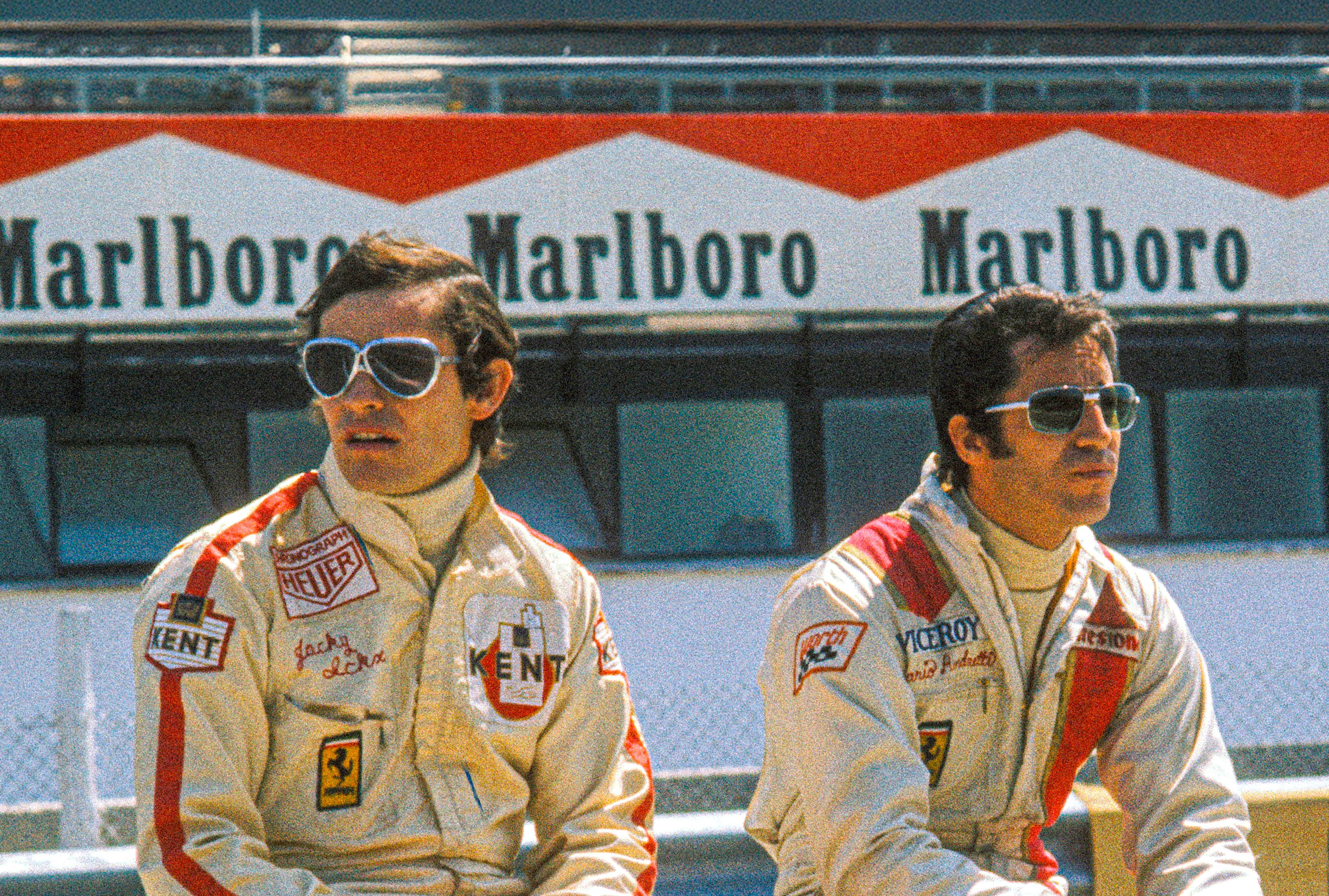
Coming of age...
It wasn't just hair and flares that grew bigger in the 1970s - aerodynamic wings became established on F1 cars and the sport itself grew in popularity with more regular television coverage. Jackie Stewart and Emerson Fittipaldi dominated the first half of the decade before Niki Lauda and James Hunt took centre stage in the long, hot summer of 1976...
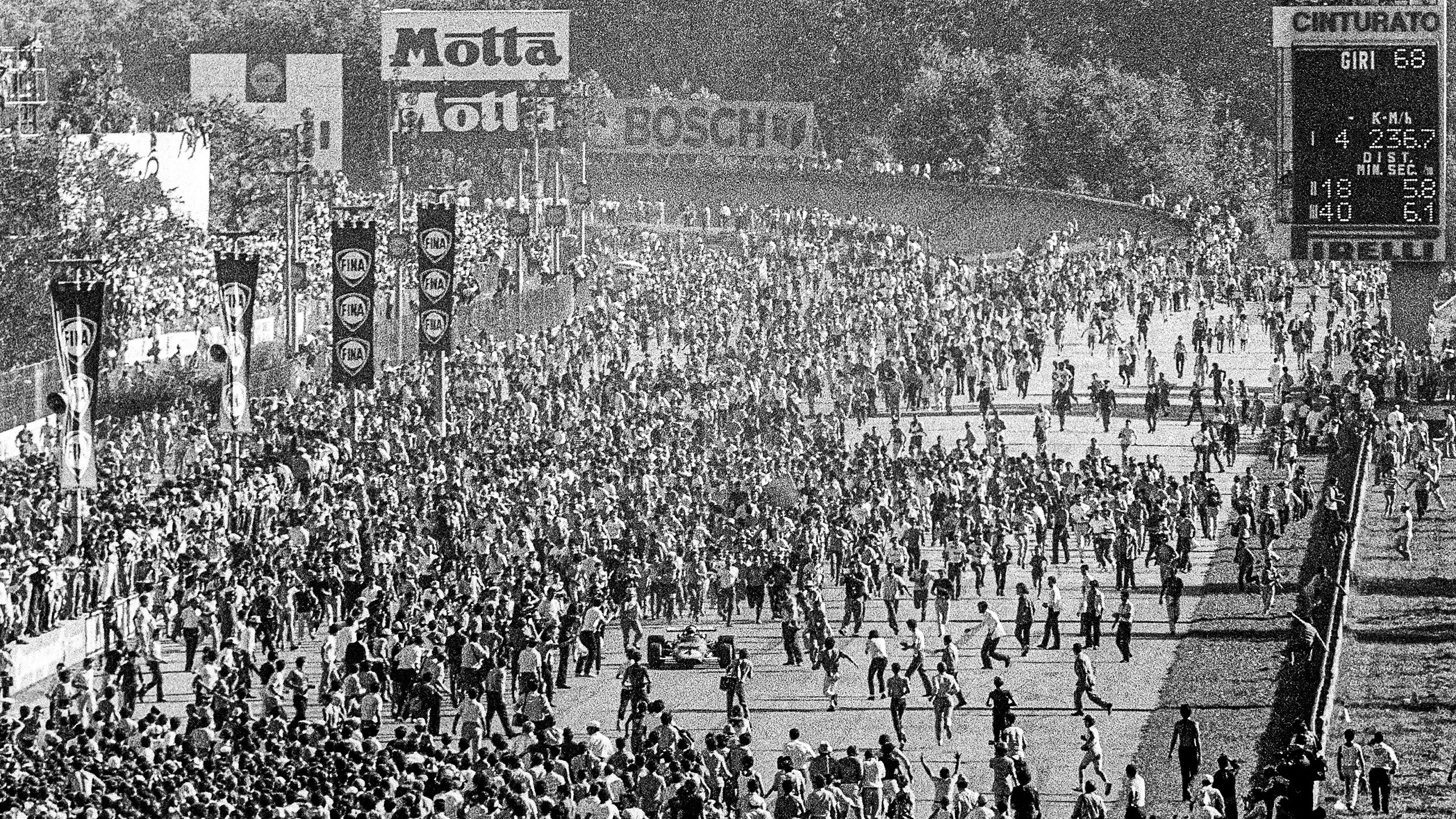
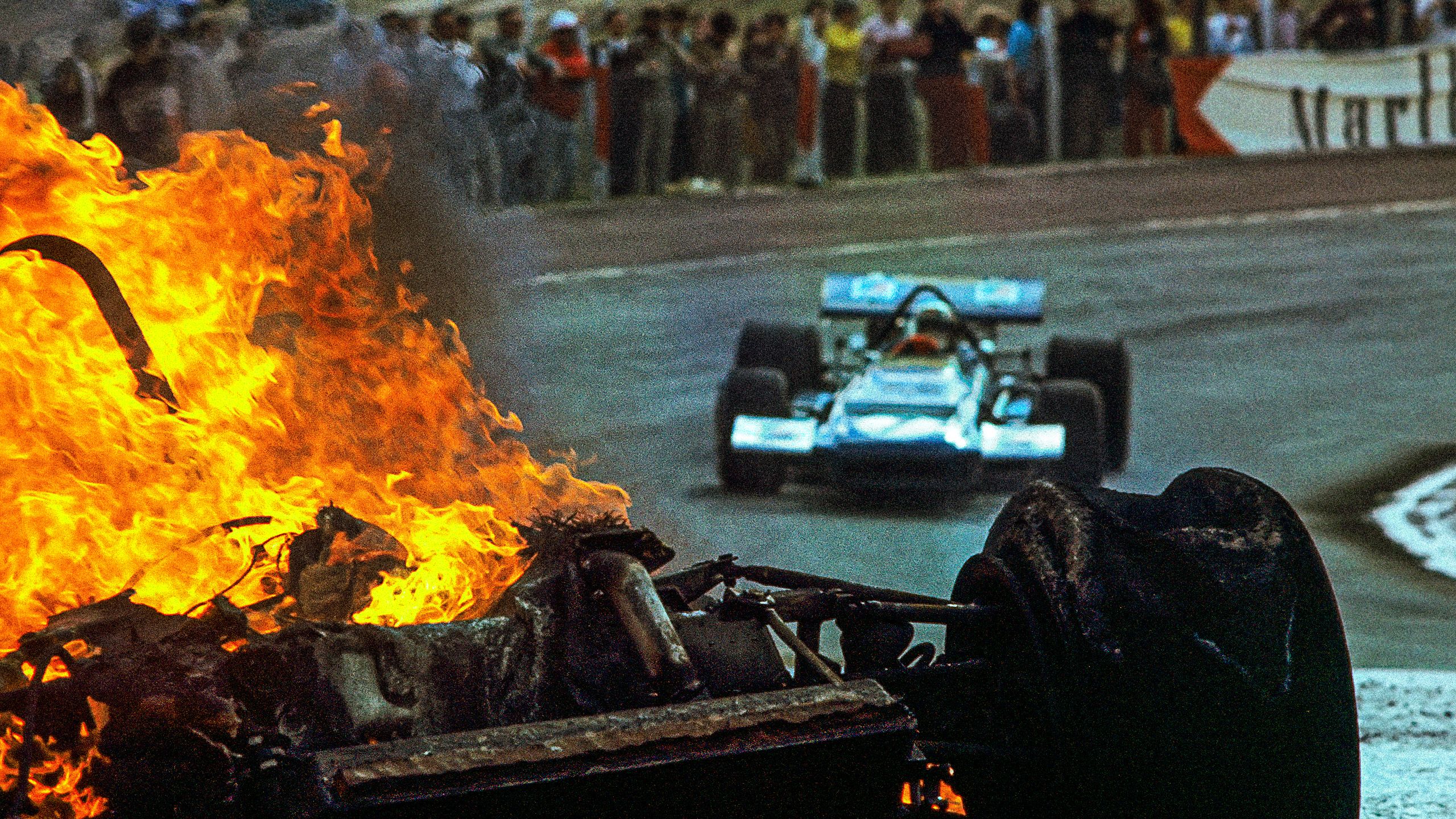
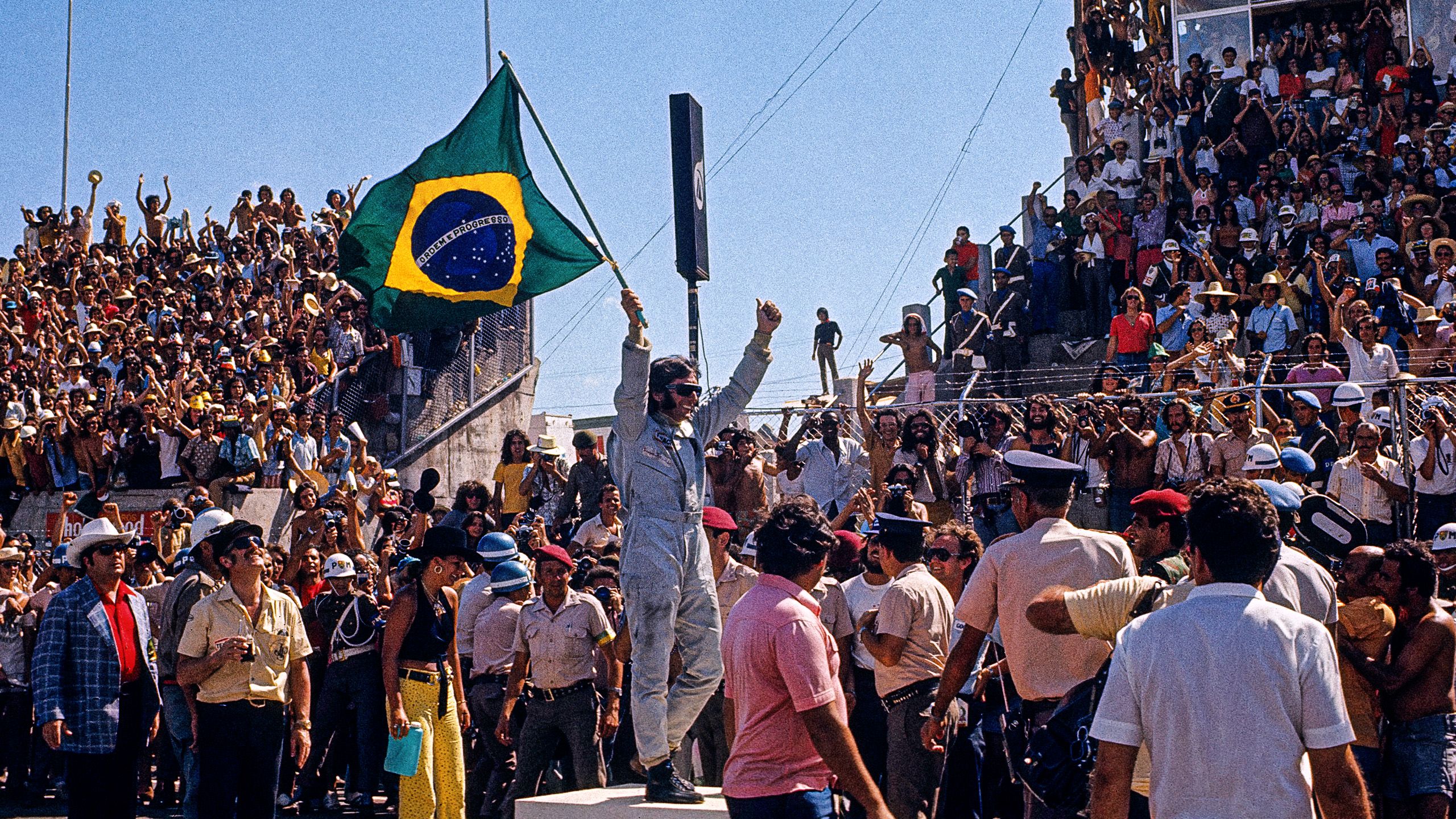
The devotion to Ferrari from the 'tifosi' at Monza in full display as they invade the track and surround Clay Regazzoni following his victory at the 1970 Italian Grand Prix.
F1 remained highly dangerous through the '70s. Here, Jackie Stewart passes the flaming debris of the cars of Jackie Oliver and Jacky Ickx after an accident at the 1970 Spanish Grand Prix at Jarama. Oliver was out of his car quickly; Ickx suffered burns but was not seriously hurt.
Emerson Fittipaldi takes in the acclaim after delighting his home crowd by winning the 1973 Brazilian Grand Prix at Interlagos - the first World Championship race in the country. Fittipaldi had won the drivers' championship in 1972 for Lotus and would do so again in 1974 with McLaren. He set up his own F1 team in 1976 but it was not a success, although he did go on to win the IndyCar title in 1989 and two Indy 500s.
Jochen Rindt is the only posthumous F1 world champion, taking the title for Lotus in 1970 after being killed in practice for the Italian Grand Prix
The reflection of Niki Lauda in the wing mirror of his BRM at Monaco in 1972
Roger Williamson was killed at the 1973 Dutch Grand Prix at Zandvoort. Fellow Briton David Purley abandoned his car and attempted to free the trapped Williamson from his burning March, but marshals did not help him until it was too late. Purley was awarded the George Medal for his bravery
Jackie Stewart sitting in his Tyrrell at the 1973 Brazilian Grand Prix, where he finished second to Emerson Fittipaldi
Patrick Depailler in the six-wheeled Tyrrell at the 1976 French Grand Prix. It won one race but the team switched back to a conventional four-wheel design from 1978
Lella Lombardi remains the last woman to start an F1 race - and the only one to finish in the points, taking half a point for finishing sixth at the 1975 Spanish Grand Prix in a race that was stopped early

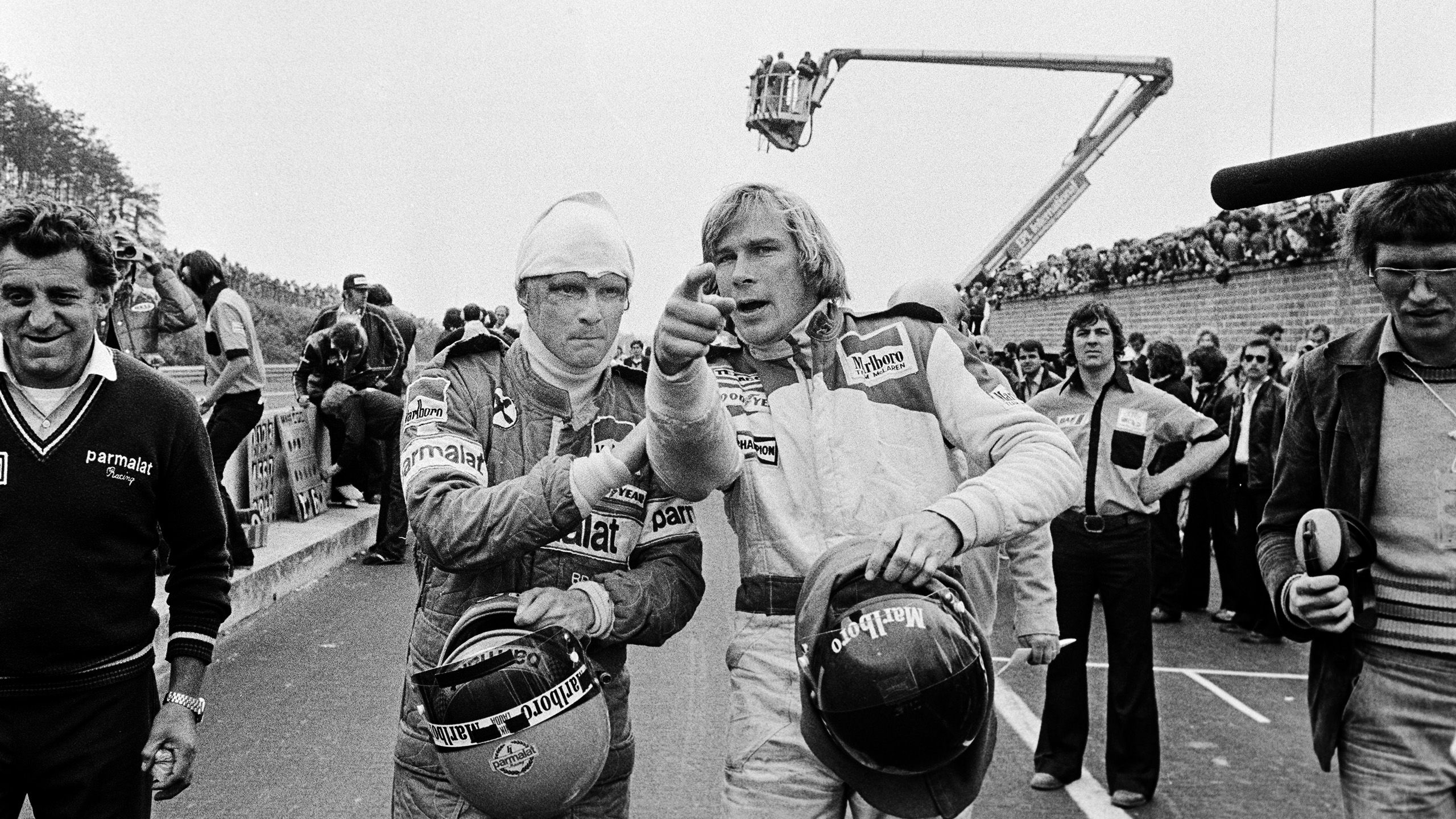
F1 often had a lackadaisical approach to the dangers of the sport in the 1960s and '70s but Jackie Stewart led the way in campaigning for better safety standards at circuits and within cars. He continued to drive change following his retirement at the end of the 1973 season. Sadly, he did not start what would have been his 100th and final race after Tyrrell team-mate and close friend Francois Cevert was killed in practice for the US Grand Prix at Watkins Glen.
The battle for the world title in 1976 between Niki Lauda and James Hunt would be depicted in Ron Howard's 2013 film Rush. The rivalry was fierce but they had great respect for each other. Lauda was given the last rites after his Ferrari exploded into flames following a crash at the 1976 German Grand Prix. Badly burned, he survived and returned to F1 just six weeks later at the Italian Grand Prix. Hunt beat him to the championship by just a single point. They are pictured after a first-lap accident at the 1978 Belgian Grand Prix at Zolder.
Niki Lauda was scarred for life by the burns he suffered in his 1976 accident at the Nurburgring. The Austrian won the world title for Ferrari in 1975 and '77. After retiring in 1979, he returned to win a third championship with McLaren in 1984
James Hunt in his McLaren at Monaco in 1976
Lauda's Ferrari in mid-air at the Nurburgring. F1 never returned to the Nordschleife circuit after his accident
Hunt's ebullient personality, colourful personal life and F1 exploits made him a huge star in 1970s Britain. After retiring in 1979, he joined Murray Walker in the BBC commentary box until he died, aged 45, from a heart attack in 1993
Hunt with Mount Fuji in the background at the championship-deciding final race of the 1976 season in Japan. Lauda pulled off after one lap, considering the conditions too dangerous. Hunt's third place was just enough to take the title
Lauda's Brabham fan car at the 1978 Swedish Grand Prix. In theory, the fan was there to cool the engine, but had a side-effect of sucking the car to the road. Lauda won the race but, after protests, the car never raced again
The Lotus 79s dominated the 1978 season with Mario Andretti taking the title ahead of team-mate Ronnie Peterson. Andretti said the ground-effect car cornered "like it was painted to the road"
The start of the 1978 Italian Grand Prix and an accident is unfolding that would lead to the death of Swede Peterson. Andretti took the title that day but said outside the hospital where Peterson died: "Unhappily, racing is also this"
1980s

The famous four
Ayrton Senna, Alain Prost, Nigel Mansell and Nelson Piquet were the four men whose talent, personalities and often bitter rivalries came to define the 1980s. They are pictured above before the 1986 Portuguese Grand Prix at Estoril, when all were still in contention for that year's drivers' championship. The title would be decided in dramatic fashion, as was often the case during the decade...

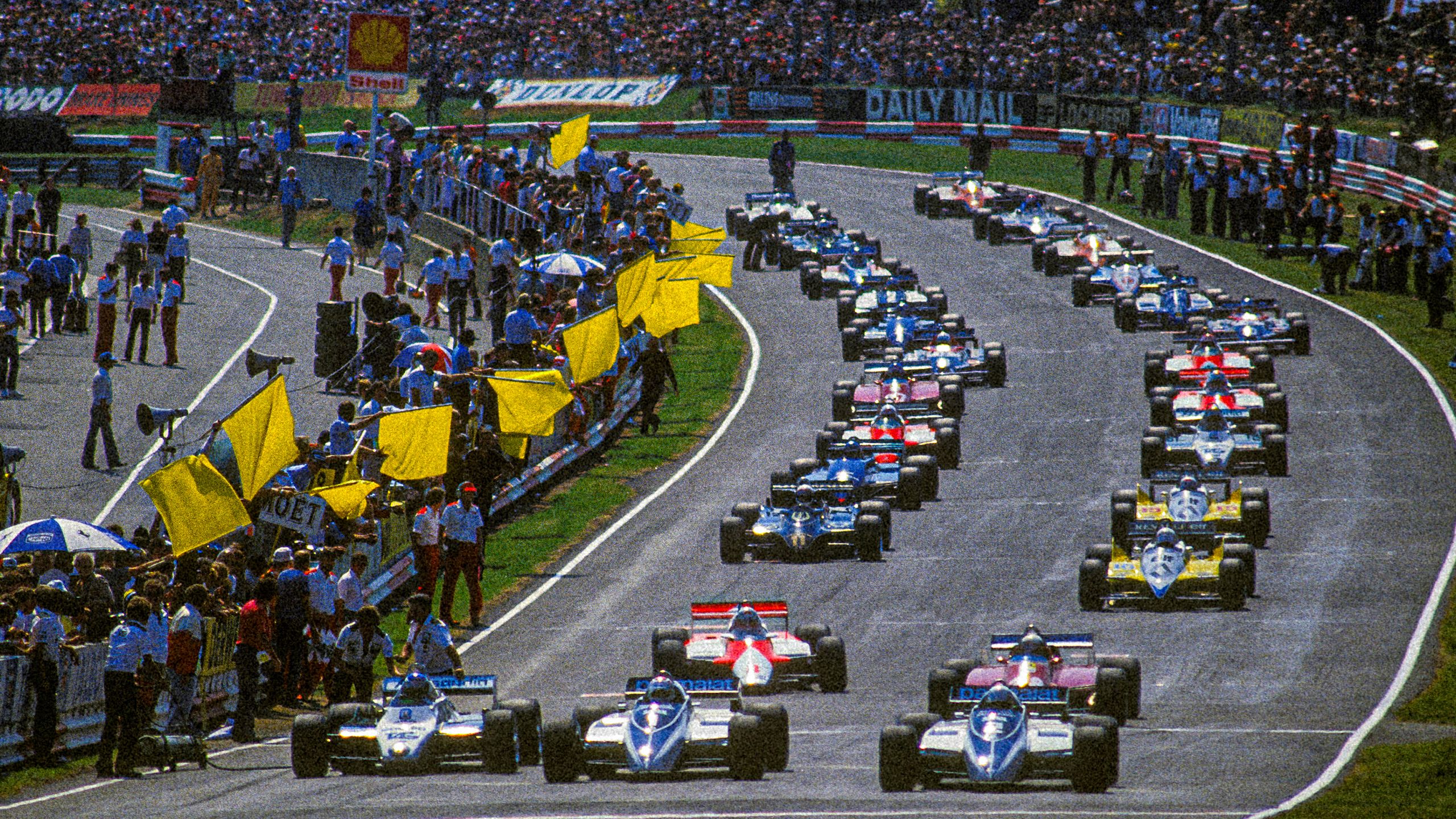
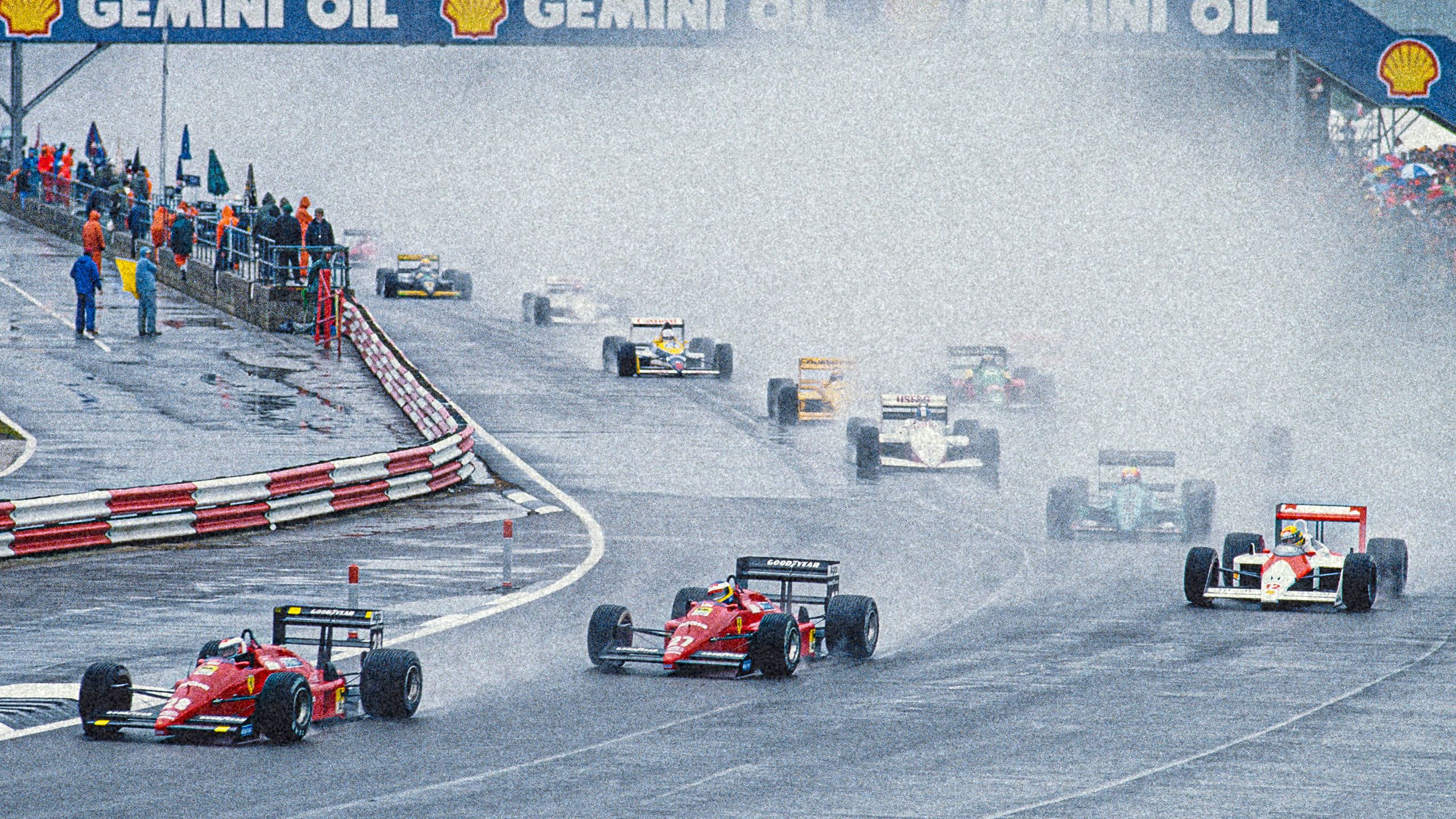
Gilles Villeneuve remains a cherished figure in F1, 43 years after his death during qualifying for the 1982 Belgian Grand Prix. The Canadian's daring style, speed and talent, which often allowed him to overperform cumbersome Ferraris, gave him hero status and six grands prix victories. He felt cheated out of a seventh by team-mate Didier Pironi in a dispute over team orders at San Marino in 1982 and vowed never to speak to the Frenchman again. Two weeks later he took one risk too many and died trying to beat Pironi's time at Zolder.
z
The grid lines up before the start of the 1982 British Grand Prix at Brands Hatch. Between 1964 and 1986 the Kent circuit alternated staging the British Grand Prix with Silverstone, while also hosting additional F1 races - the European Grand Prix - in 1983 and 1985.
The start of the 1988 British Grand Prix at Silverstone. Unusually for that year, Ferraris are out in front - the McLarens of Ayrton Senna and Alain Prost won 15 of the 16 races with Ferrari preventing a monopoly at Monza, where Senna was punted out by a backmarker while leading two laps from the end.
Gilles Villeneuve at the limit at the 1981 Spanish Grand Prix, where he kept a train of faster cars behind him for his final F1 victory
Rene Arnoux's Renault lays atop a tyre barrier after he crashed out of the 1982 Dutch Grand Prix
McLaren team-mates Niki Lauda and Alain Prost on the podium after the 1984 Portuguese Grand Prix. Prost had won the race but Lauda's second place was enough to give him the world title by just half a point
Frank Williams and Williams team co-founder Patrick Head were a formidable combination: Williams won seven drivers' championships and nine constructors' titles between 1980 and 1997. They are pictured at Canada in 1985, the year before Williams was paralysed in a car crash in France
Ayrton Senna so often excelled in wet conditions and his first F1 victory came as the rain poured in Portugal in 1985
Brazilian Senna, then with Lotus, celebrates on the podium after his first win

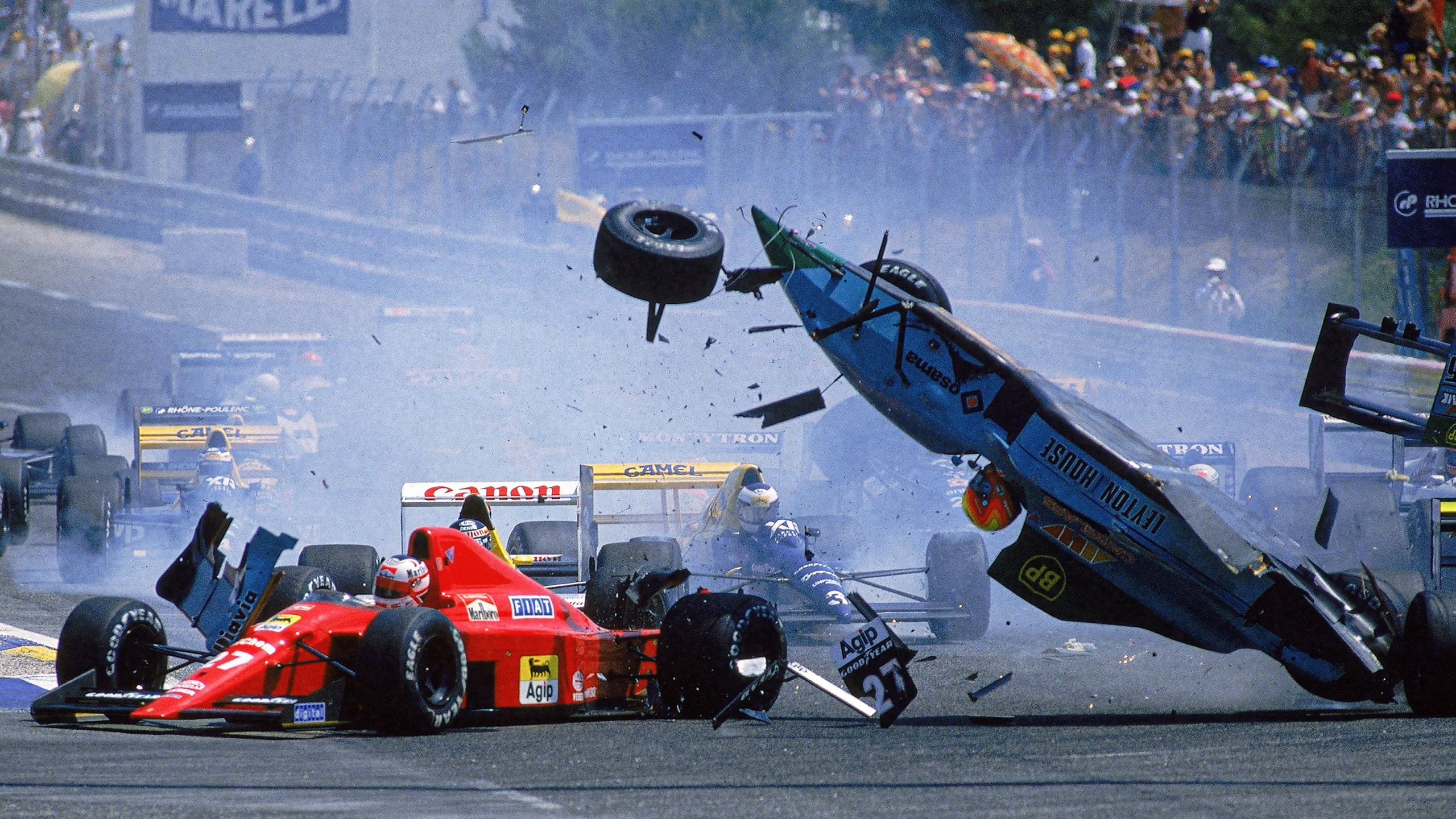
There was cause for celebration for both Nigel Mansell and Alain Prost at the 1985 European Grand Prix at Brands Hatch. It was the scene of Mansell's first F1 victory, five years after his debut, and kickstarted a seven-year period in which the Englishman regularly won races and fought for the championship, eventually winning it in 1992. The following year, he moved to the United States and won the IndyCar title. His exciting style made him a fan favourite and as BBC F1 correspondent Andrew Benson wrote: "Nigel Mansell was the personification of drama in a Formula 1 car." Meanwhile, Frenchman Prost had just secured his first drivers' title after near-misses in the previous three seasons. Nicknamed 'The Professor' because of his smooth and precise style, he went on to win 51 races and four championships - in '85, '86, '89 and '93.
The Leyton House of Mauricio Gugelmin somersaults after colliding with Nigel Mansell's Ferrari at the start of the 1989 French Grand Prix at Paul Ricard. The Brazilian was shaken but unhurt and took part in the restart.
More celebrations on the podium for Nigel Mansell after he won the 1986 British Grand Prix at Brands Hatch - the last time it staged the race. Victory gave Mansell the lead in the drivers' championship and he held it until the final race of the season
Mansell's tyre explodes on lap 64 of 82 during the 1986 Australian Grand Prix at Adelaide. At that stage, he was third, which would have been enough to give him the title. Instead, Alain Prost came through to beat both Mansell and Nelson Piquet
Before he ran Formula 1 for nearly 40 years, Bernie Ecclestone (right) was the Brabham team owner
Piquet leads Williams team-mate Mansell during the 1986 French Grand Prix. The Brazilian was world champion in 1981, '83 and '87
The McLaren-Hondas of Ayrton Senna and Prost dominated 1988 with Senna getting the better of his team-mate to claim his first world title. They are pictured during practice at Monaco
Senna and Prost on the podium after the season-ending 1988 Australian Grand Prix. At this stage, their relationship remained cordial
Senna and Prost in conversation at the first race of 1989 in Senna's native Brazil. The relationship between the drivers broke down at the following race at Imola, when Senna ignored a pre-race agreement not to fight into the first corner
"Oh my goodness, this is fantastic," yells Murray Walker in his BBC commentary as Prost and Senna collide at the 1989 Japanese Grand Prix at Suzuka. Senna got going again but was disqualified for cutting the chicane, handing Prost the title
1990s
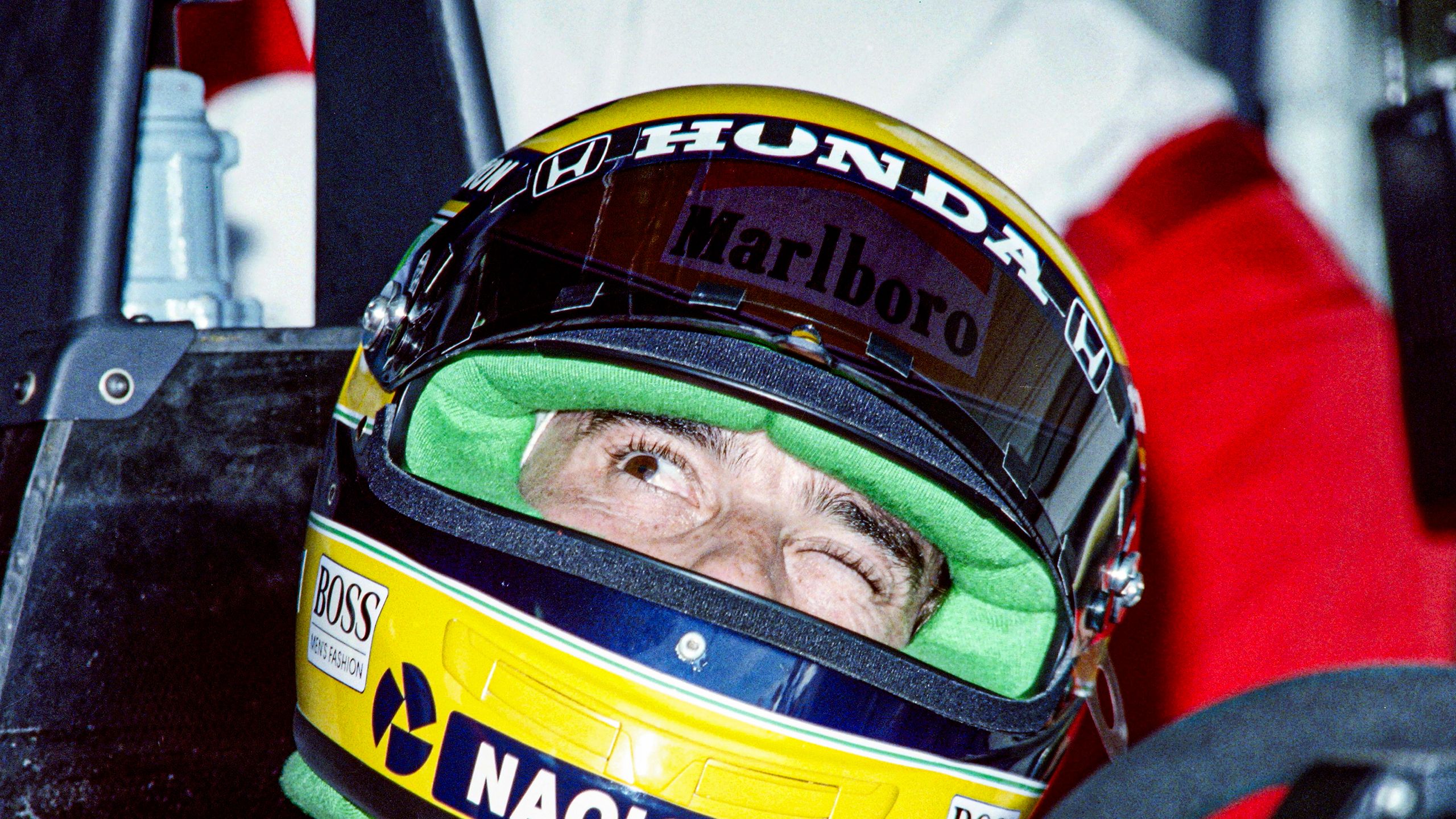
Changing of the guard
Ayrton Senna, Alain Prost and Nigel Mansell were still the dominant drivers as the 1990s dawned and they shared the first four drivers' championships of the decade. However, Mansell headed for the United States and Indycars after finally securing his first F1 world title in 1992, Prost retired having won his fourth in 1993 and then Senna, the sport's most compelling personality and greatest talent, died at the 1994 San Marino Grand Prix. F1 was shaken to its core. Michael Schumacher emerged to begin a record-breaking and sometimes controversial 20-year career...
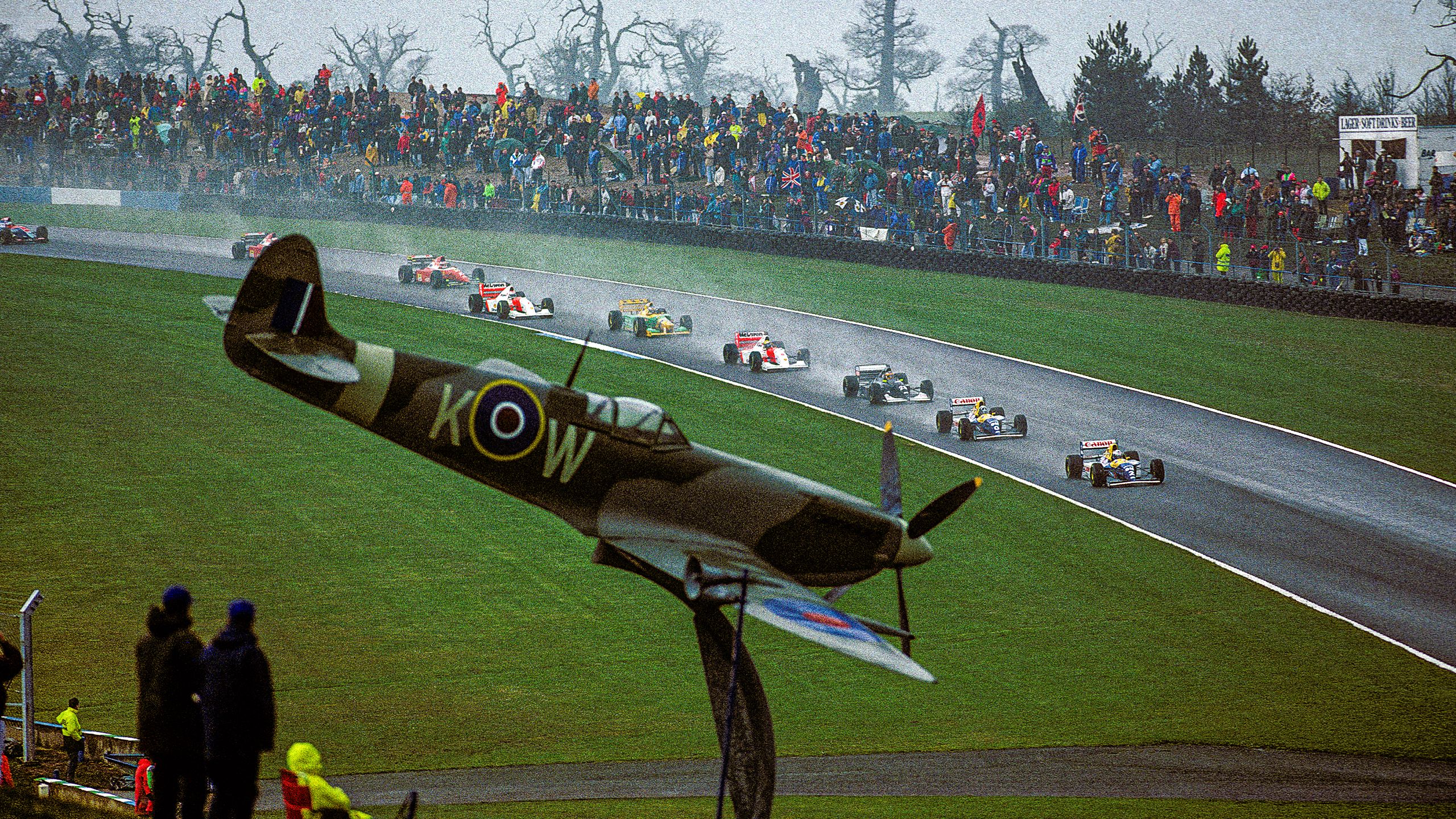

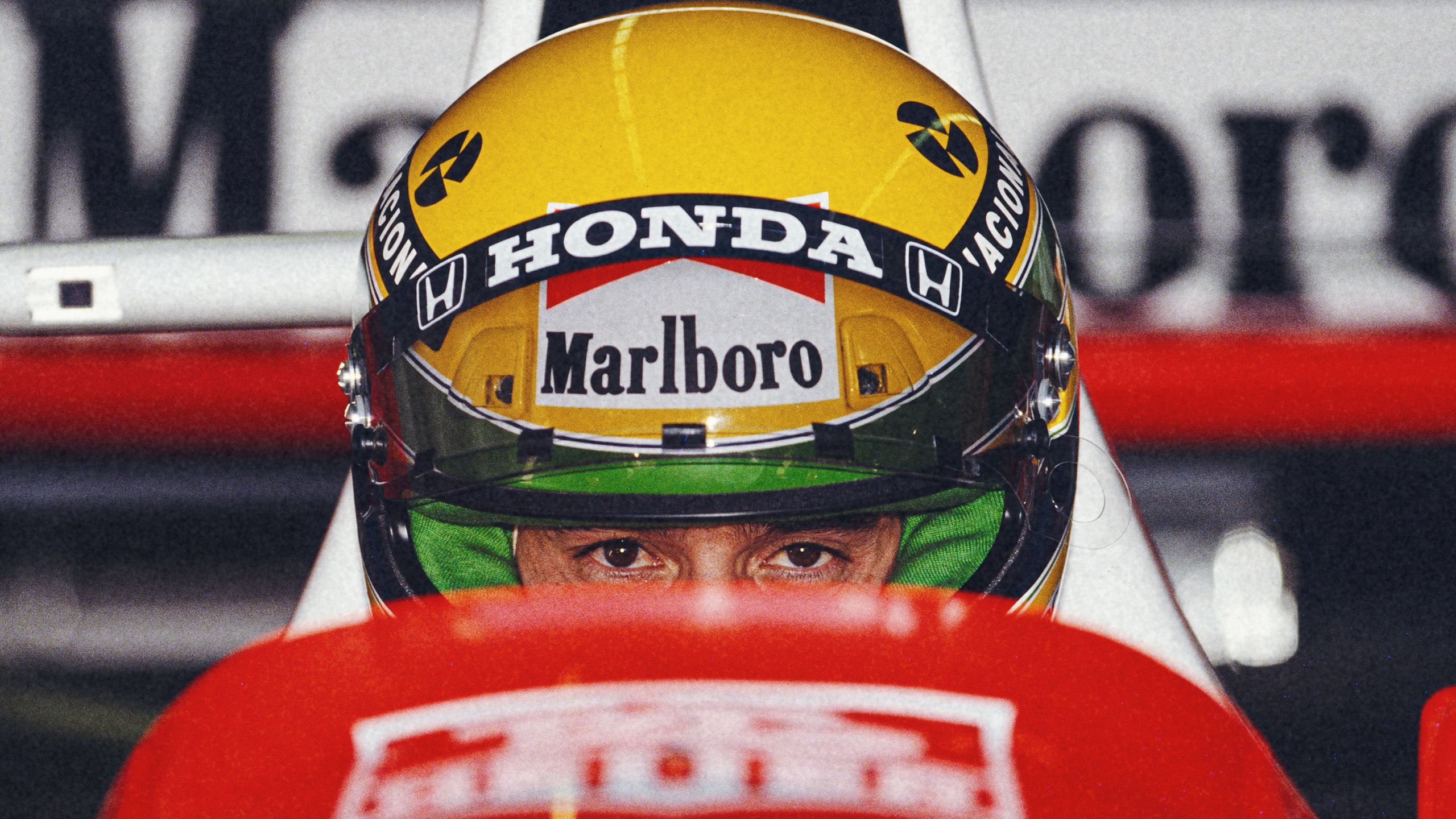

Donington Park in 1993 and one of Ayrton Senna's most defining moments on a cold, wet April day: from fifth at the first corner he moved past Michael Schumacher's Benetton, Karl Wendlinger's Sauber, Damon Hill's Williams and then Alain Prost, also in a Williams, to take the lead before the end of the first lap. Senna raced away into the distance and by the end only Hill, just about, remained on the same lap.
Sparks fly from the back of Michael Schumacher's Benetton during the 1992 Belgian Grand Prix at Spa. It would be the first of his 91 F1 wins. The German won his first two drivers' titles with the team, in 1994 and 1995, before joining Ferrari.
Possessed with ruthless determination as well as a spellbinding talent, Senna won the world championship in 1988, 1990 and '91. Reliability issues arguably cost him the title to Alain Prost in '89 while he was second to the Frenchman again in '93, winning five races despite a demonstrably inferior car. Senna joined Williams for the 1994 season but their partnership would be all too brief.
Like his dad Graham, Damon Hill entered F1 relatively late and was in his 30s when he made his debut for the ailing Brabham team in 1992. The following year he was signed by the dominant Williams as partner to Prost, winning three races. In '94, he had to take on the role of team leader after Senna's death at Imola and almost won the world title, losing out only because Michael Schumacher drove into him after damaging his own Benetton at Adelaide. Schumacher also prevailed in '95 but Hill's moment finally arrived in '96. The Englishman became the first son of a world champion to emulate that feat.
Senna and Prost after another Suzuka collision in 1990. Feeling cheated out of the 1989 title, and angry that the president of F1's governing body would not move pole position from the dirty side of the track, Senna drove into Prost's Ferrari at 160mph going into the first corner. Their instant retirements ensured that the Brazilian won his second championship
Nigel Mansell gives Senna a lift back to the pits after his rival ran out of fuel on the last lap of the 1991 British Grand Prix at Silverstone. Mansell delighted the home crowd with the race win but Senna came out on top in their championship battle. The following year, Mansell finally prevailed, winning a then record nine races in the Williams-Renault
Senna and Mansell in the thrilling final stages of the 1992 Monaco Grand Prix. Mansell had won the first five races of the season but on worn tyres and in a much slower car, Senna kept him behind to the flag
Senna and Schumacher duelling at the 1993 Brazilian Grand Prix at Interlagos
Alain Prost with a collection of just some of his trophies in 1993, when he won his final title with Williams
After years of antipathy between the pair, Senna lifts Prost on to the top step of the podium after winning the 1993 Australian Grand Prix. It was to be Prost's final race and Senna's final race win
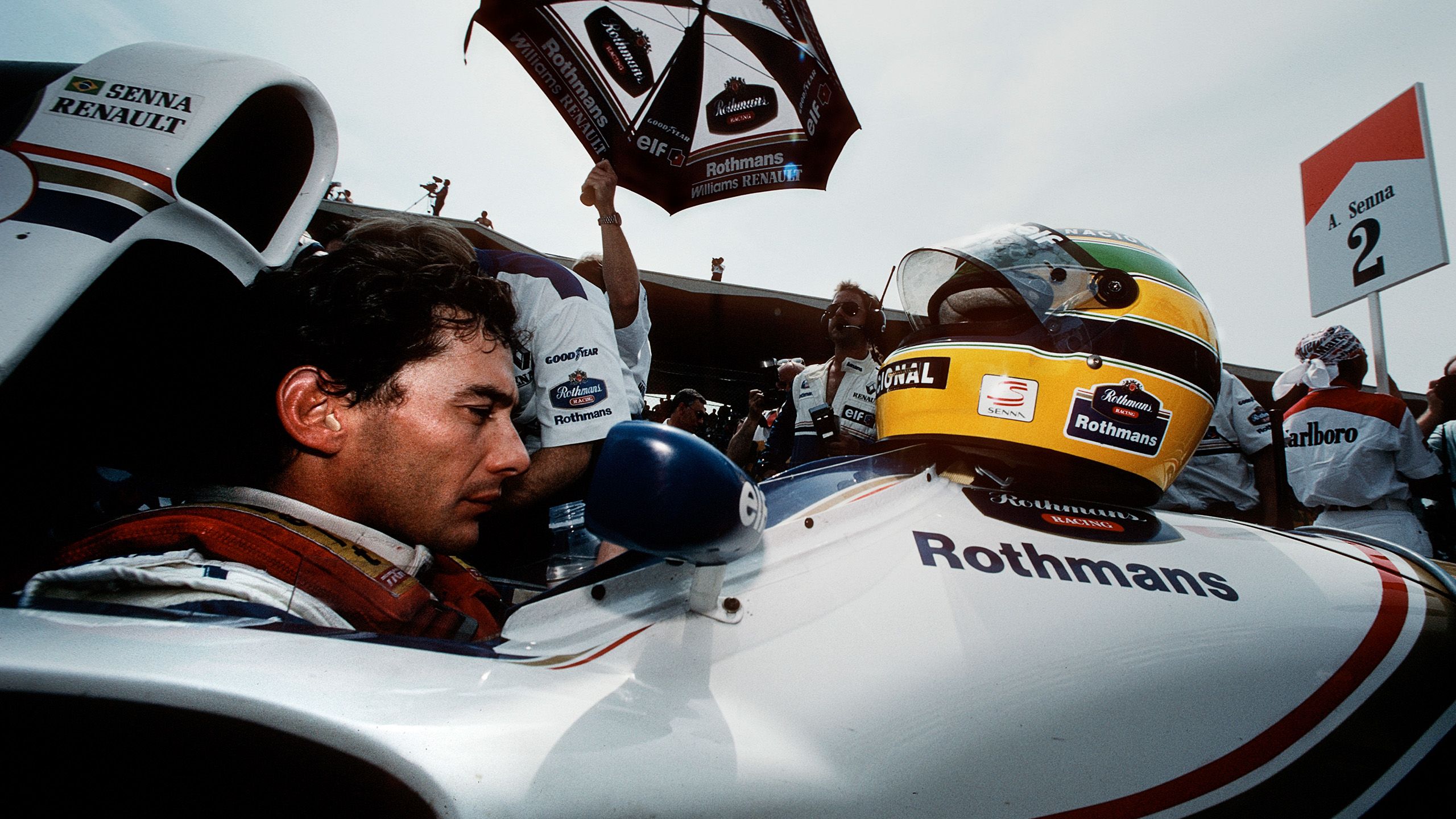
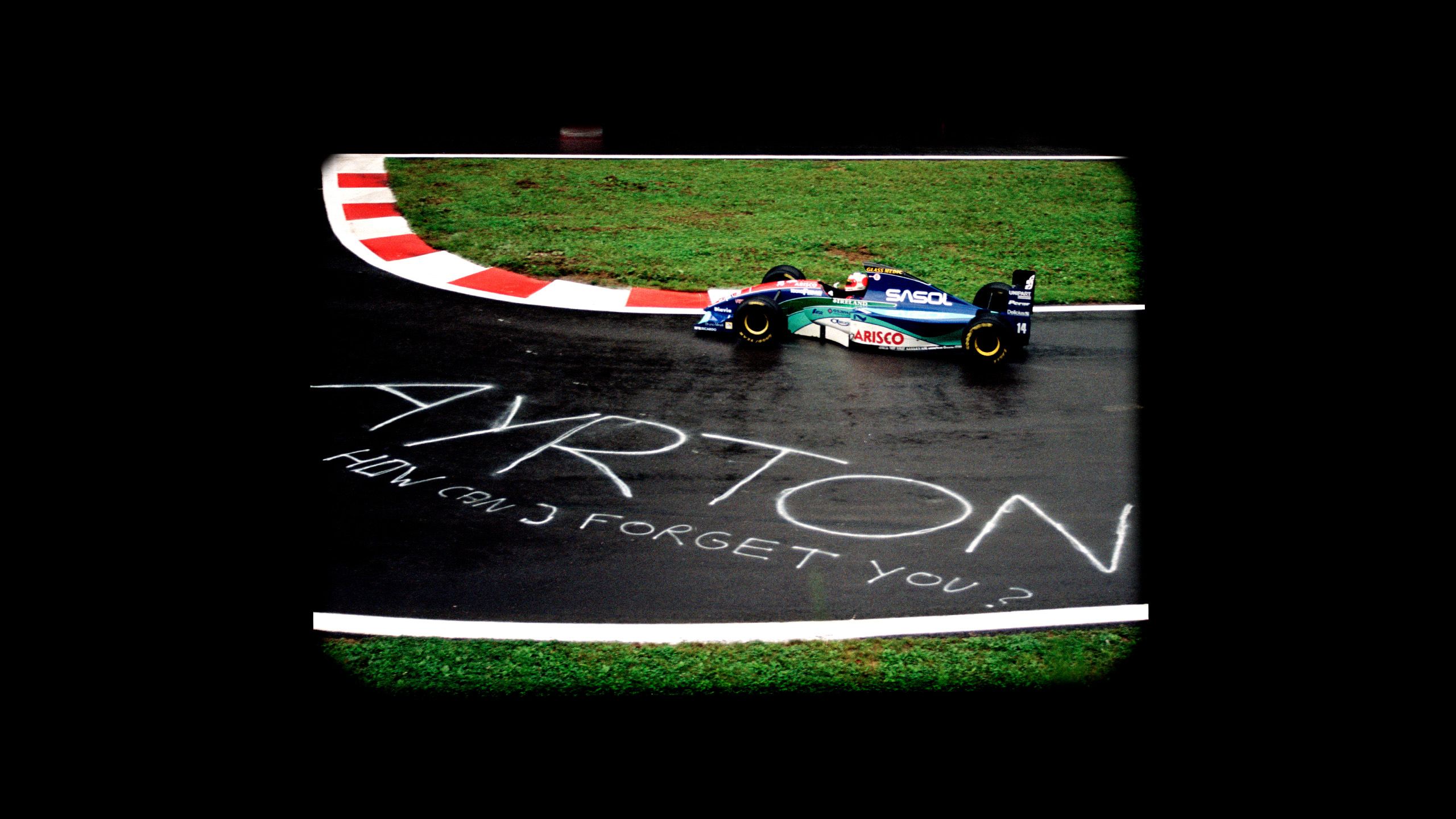
Ayrton Senna on the grid at Imola before his final race - the 1994 San Marino Grand Prix. After 12 years without any fatalities on a race weekend, death had returned to the track the previous day when Austrian Roland Ratzenberger was killed in a near-200mph qualifying crash. Senna was distraught and F1 surgeon Sid Watkins tried to persuade his friend to retire on the spot. Senna told him: "Sid, there are certain things over which we have no control. I cannot quit, I have to go on." Early in the race, Senna's Williams was leading when he lost control at 190mph at the Tamburello corner and crashed into the wall. His helmet was pierced by a suspension arm and he died later that day.
A tribute to Senna written on the track at Spa during the 1994 Belgian Grand Prix. The deaths of Senna and Ratzenberger induced a crisis of confidence within F1 and sparked a renewed safety drive. In the 31 years since, Jules Bianchi - who died as a result of a crash at the 2014 Japanese Grand Prix - is the only driver to have lost his life because of an accident in an F1 race.
Michael Schumacher in the Benetton garage at the 1992 Mexican Grand Prix
Schumacher in the Benetton at the 1995 Canadian Grand Prix - a race he led until a late gearbox problem
David Coulthard celebrates his first F1 win with Schmacher and Damon Hill at Portugal in 1995
Wheels come loose after a collision between Alexander Wurz's Benetton, Prost's Jarno Trulli and Sauber's Jean Alesi at the 1998 Canadian Grand Prix
Schumacher celebrates winning the 1999 Monaco Grand Prix
Finland's Mika Hakkinen closed out the 1990s by winning the drivers' titles in 1998 and 1999 for McLaren
2000s

The red dominance
Michael Schumacher and Ferrari were an unstoppable force for the first five years of the 2000s - winning every drivers' and constructors' championship up until 2004. They were toppled by Renault and a young Spaniard called Fernando Alonso before Lewis Hamilton arrived in F1 in 2007 with a rookie season of unprecedented success. The Briton won the first of his seven world titles in a scarcely believable finish to 2008, before a fairytale champion emerged from nowhere in 2009.
Michael Schumacher was in his fifth year with the team when he won his first world title with Ferrari in 2000, geting the better of Mika Hakkinen
In a season of supreme dominance, Schumacher won 12 of the first 13 races in 2004 on the way to his seventh world title
Schumacher retired at the end of the 2006 season but came back with Mercedes in 2010, aged 41. His best days were behind him and no more race wins followed. He retired for good in 2012 and suffered a severe brain injury in a skiing accident the following year. The Schumacher family has kept his medical condition private since then
The rear of Kimi Raikkonen's McLaren at the 2002 French Grand Prix. The Finn would win the world title in 2007 for Ferrari with victories in the final two races to edge out McLaren's Lewis Hamilton and Fernando Alonso
A 21-year-old Fernando Alonso at the 2003 Malaysian Grand Prix - the scene of his first pole position and podium finish. Twenty-two years later - and 24 since his debut - he remains a fixture in F1. He won the title with Renault in 2005 and 2006 and came agonisingly close in 2007, 2010 and 2012
Refuelling was allowed in F1 between 1994 and 2009
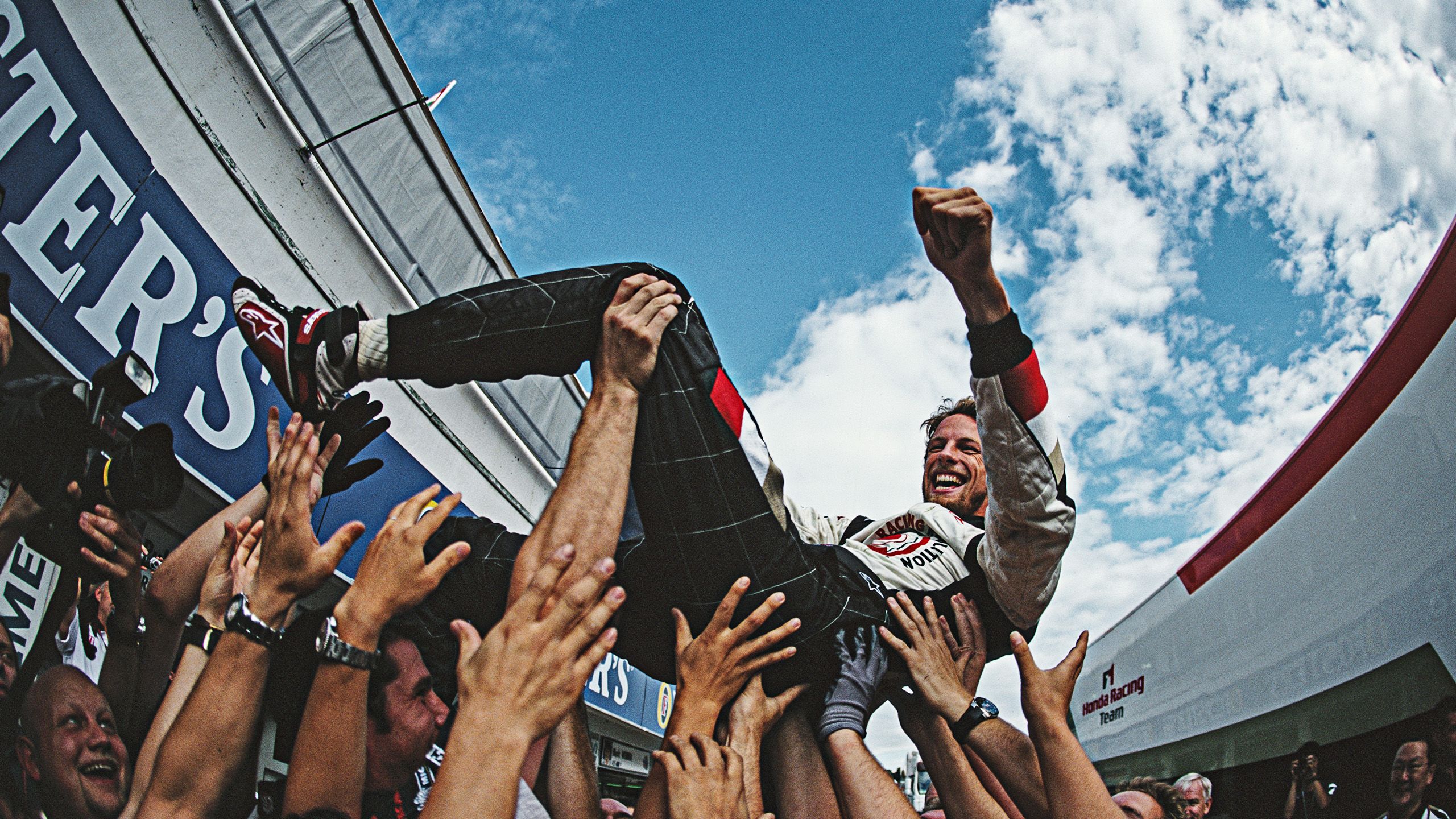
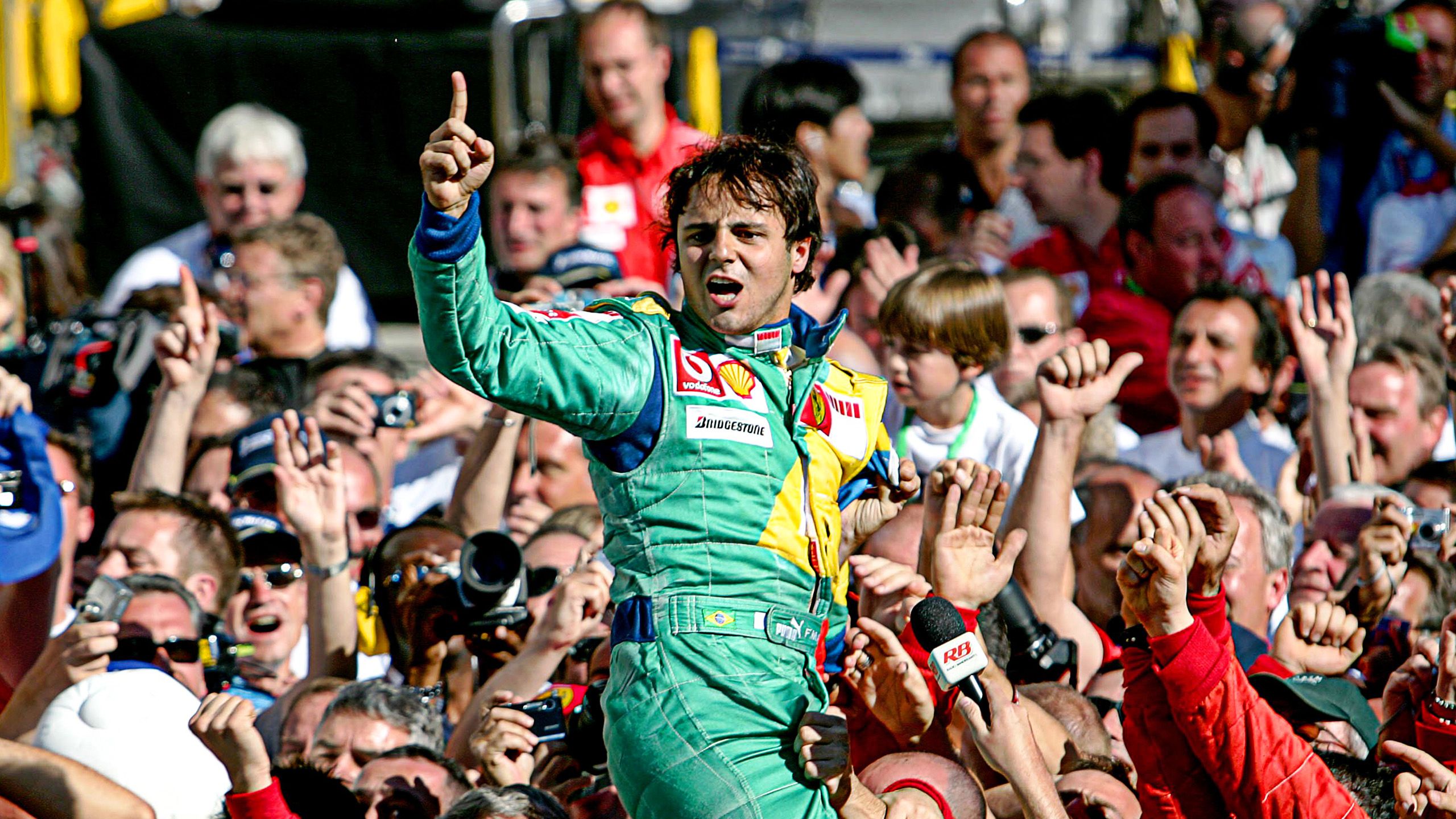
Jenson Button is lifted in the air in celebration after winning his first F1 race - at the 113th attempt - in 2006 in Hungary. His Honda team's fortunes declined after that and they withdrew from the sport at the end of the 2008 season. Team principal Ross Brawn led a management buyout of the team and they were reborn as Brawn GP for the start of 2009. They just about got their car ready for the season and, incredibly, had understood the new regulations better than anyone. Button won six of the first seven races and went on to secure the drivers' championship. He moved to McLaren for 2010, as team-mate to Lewis Hamilton, and won eight more races before the end of 2012, after which he had to cope with uncompetitive cars.
Felipe Massa, wearing a race uniform in his country's colours, celebrates winning the 2006 Brazilian Grand Prix at Interlagos. He would triumph again two years later and when he crossed the line, he was on course to win the drivers' championship. However, behind him title rival Lewis Hamilton passed Timo Glock at the final corner in teeming rain to take the fifth place he needed to secure the title in only his second season in F1.
Lewis Hamilton, then 22, celebrates his first F1 win - in Canada in 2007. It was his sixth grand prix
Hamilton ahead of Timo Glock on his way to the world title in Brazil in 2008
In 2007, Hamilton missed out on the title in his debut season by a single point to Kimi Raikkonen. He beat Massa by the same margin in 2008
The Force India of Giancarlo Fisichella is airbone at the start of the 2008 Turkish Grand Prix after colliding with the Williams of Kazuki Nakajima
The Brawns lead the way at the 2009 Spanish Grand Prix, with Rubens Barrichello ahead of team-mate Jenson Button. That order would be reversed by the end of the race
Button celebrates winning in Monaco in his 2009 championship year. His final F1 race was there in 2017
2010s
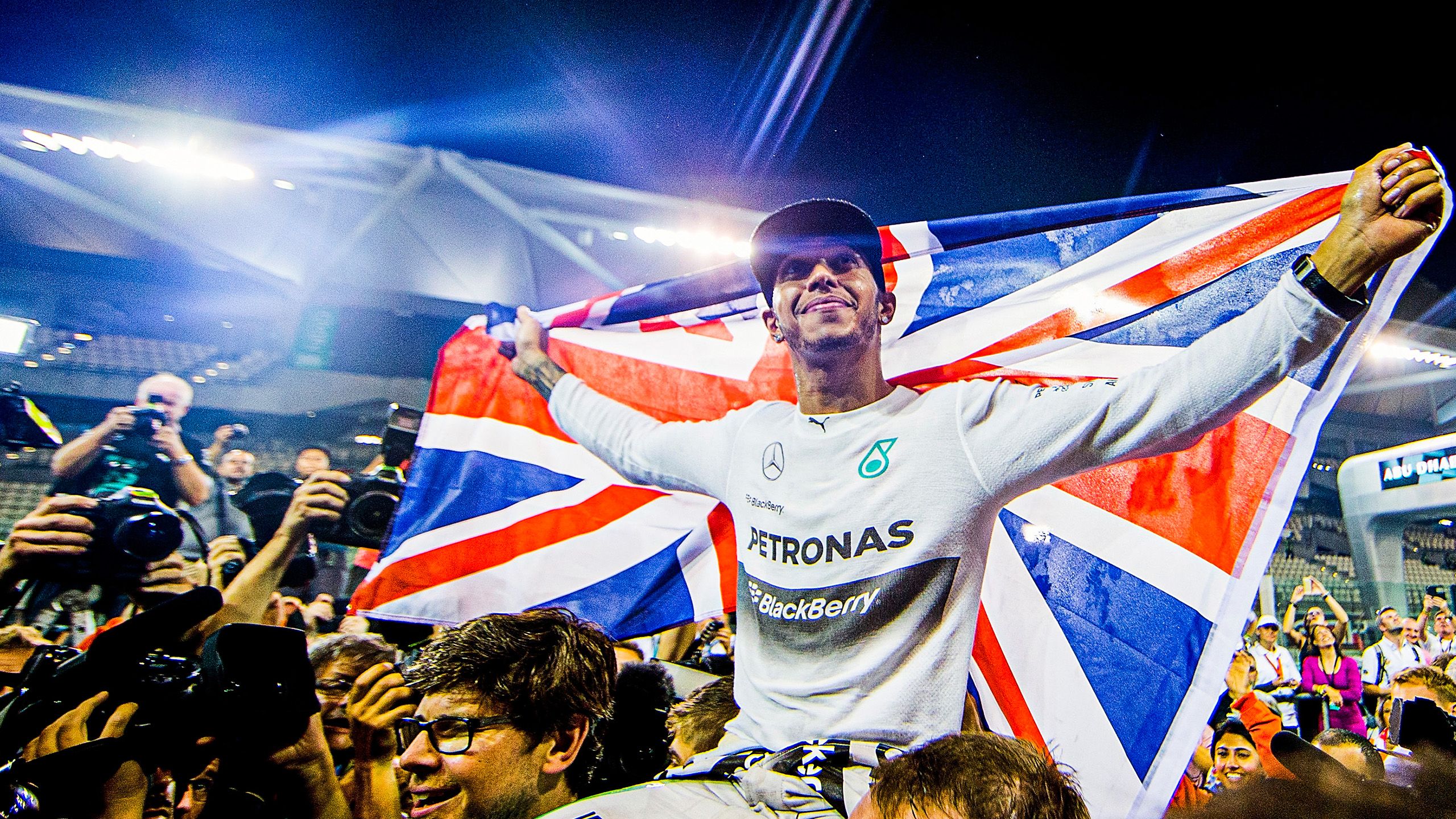
Hammer time
In the 2010s, two men shared nine of the 10 drivers' championships with Lewis Hamilton and Mercedes becoming the dominant force after Sebastian Vettel and Red Bull had swept all before them at the start of the decade. Nico Rosberg was the only other driver to take the title as his rivalry with Mercedes team-mate Hamilton became increasingly bitter. The death of Jules Bianchi after a crash at the 2014 Japanese Grand Prix was a reminder of the ever-present dangers of the sport...

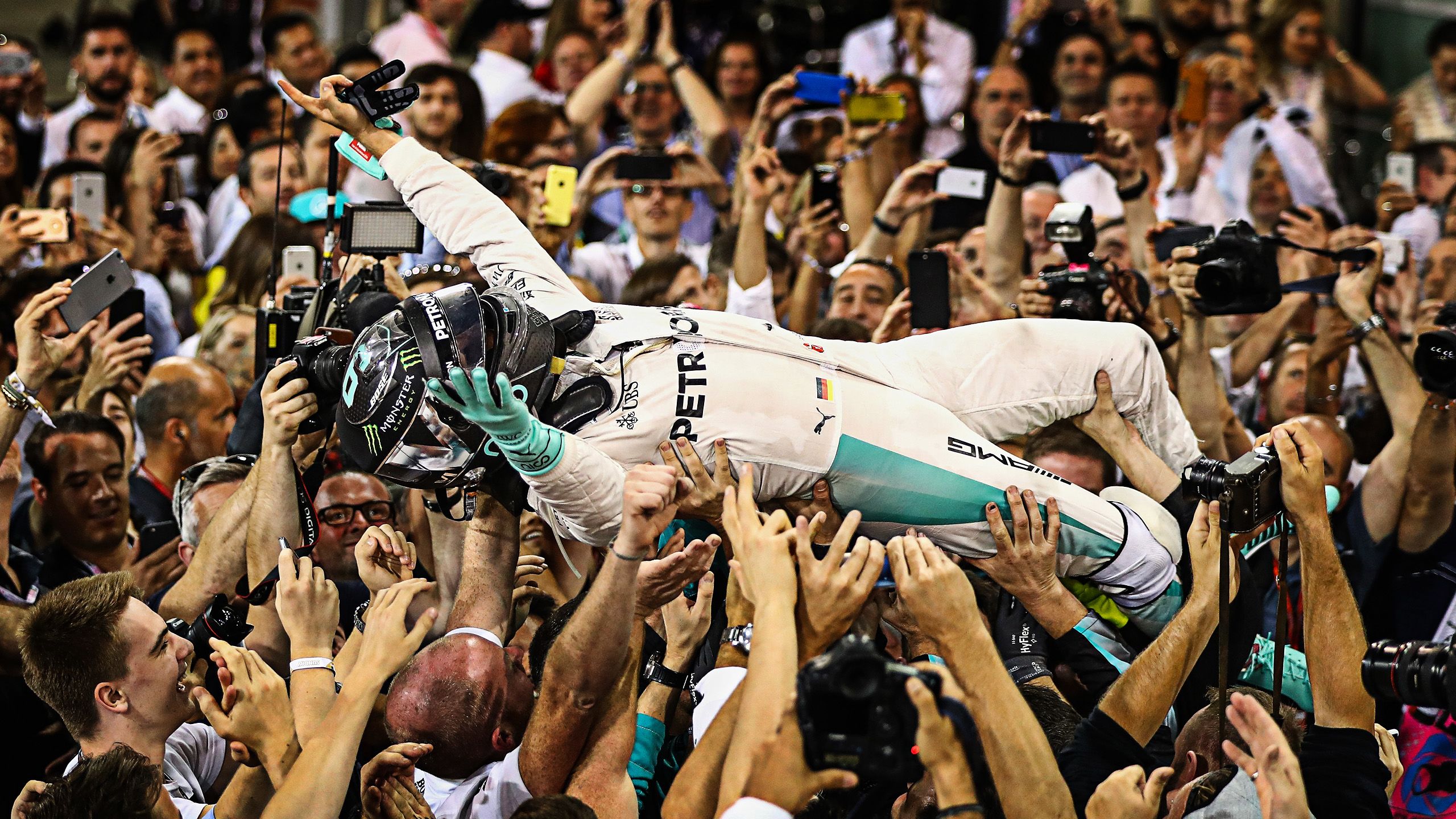
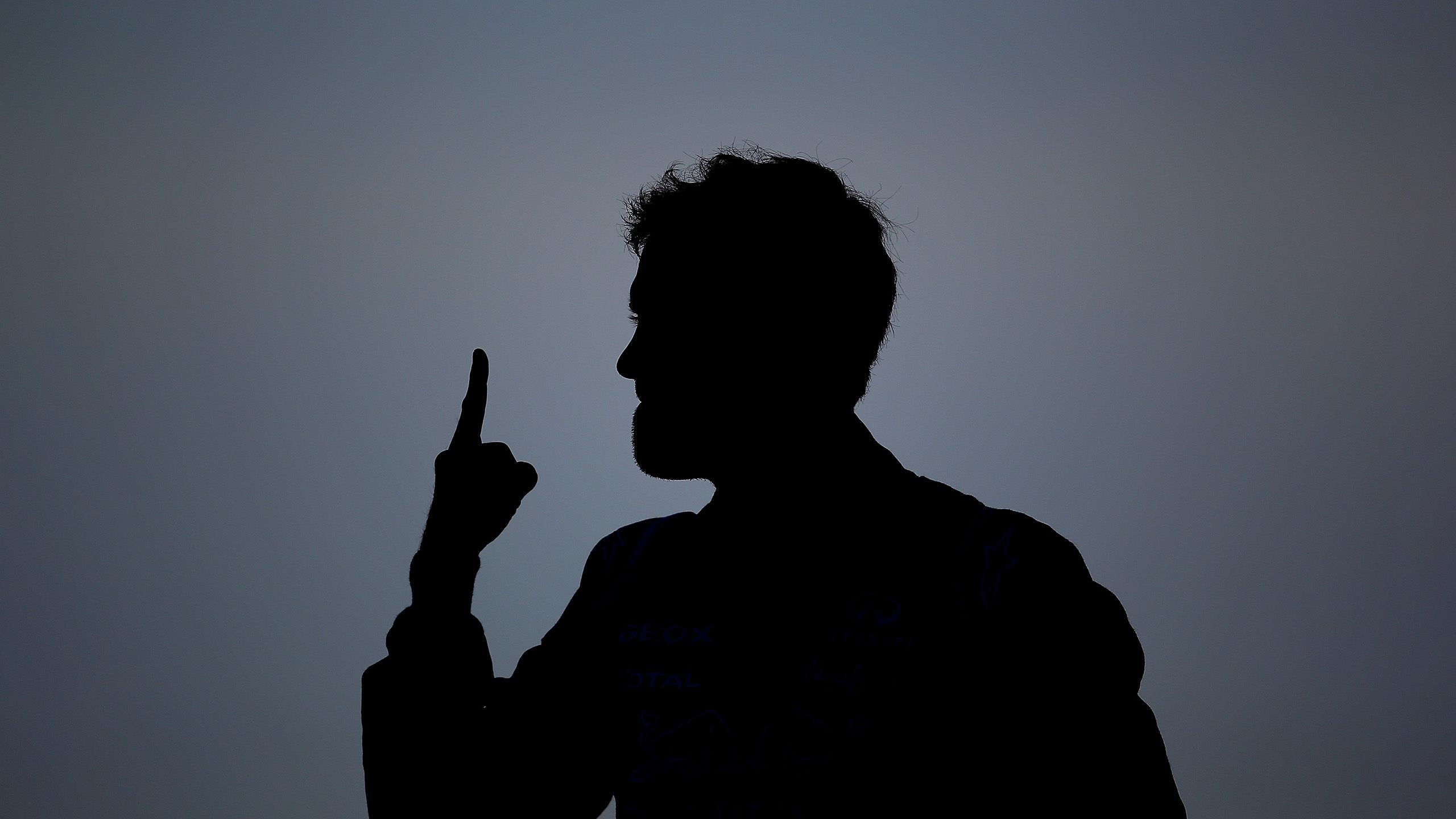
Lewis Hamilton crowd-surfs at Silverstone to celebrate his victory in the 2016 British Grand Prix. It is one of a record nine victories for Hamilton at the circuit. The Briton had joined Mercedes in 2013 after being with McLaren from the age of 13. The advent of the turbo hybrid engine era in 2014 led to Mercedes taking over from Red Bull as the fastest car on the grid, with Mercedes and Hamilton going on to become the most successful team-driver combination in F1 history. Six of his seven championships were won with the team, 84 of his record 105 race wins and 78 of his 104 pole positions.
After coming second to Lewis Hamilton in 2014 and 2015, Nico Rosberg prevailed in 2016 - beating his Mercedes team-mate by just five points. They had raced together as teenagers in junior categories and their friendly relationship fractured in the intensity of an intra-team championship battle. In 2016, they took each other out on the first lap in Spain and also collided in Austria. The destiny of the title was in doubt until the final lap of the season in Abu Dhabi but Rosberg was finally able to overcome Hamilton. The son of 1982 world champion Keke, Rosberg announced his retirement less than a week later, saying: "I have climbed my mountain, I am on the peak."
Sebastian Vettel and Red Bull were very much number one between 2010 and 2013, with four consecutive drivers' and constructors' championships won. The German had demonstrated his potential by becoming the then youngest driver to win an F1 race in 2008 at the Italian Grand Prix, aged 21 years and 74 days. In 2010, he went into the final race in Abu Dhabi third in the standings but won the race to beat team-mate Mark Webber and Fernando Alonso to the title. He overcame Alonso again in 2012 in another battle that went to the final race, and in 2013 he was in a league of his own - winning the final nine races of the season. After moving to Ferrari, he challenged Hamilton for the title in 2017 and 2018 but mistakes proved costly. His 53 race wins put him fourth on the all-time list behind Hamilton, Michael Schumacher and Max Verstappen.
Mark Webber dives into the harbour to celebrate winning the 2010 Monaco Grand Prix. A crash in Korea arguably cost him the championship that year
The 2010 title battle was a tight and thrilling one between Lewis Hamilton, Fernando Alonso, Webber, Jenson Button and Sebastian Vettel
Vettel is soaked after winning the 2010 world title in Abu Dhabi
Fernando Alonso enters the Monaco tunnel during practice in 2012
Guests at the Hotel Du Paris at Monaco in 2014
Jules Bianchi died nine months after suffering severe head injuries at the 2014 Japanese Grand Prix. His Marussia crashed into a recovery vehicle in wet conditions
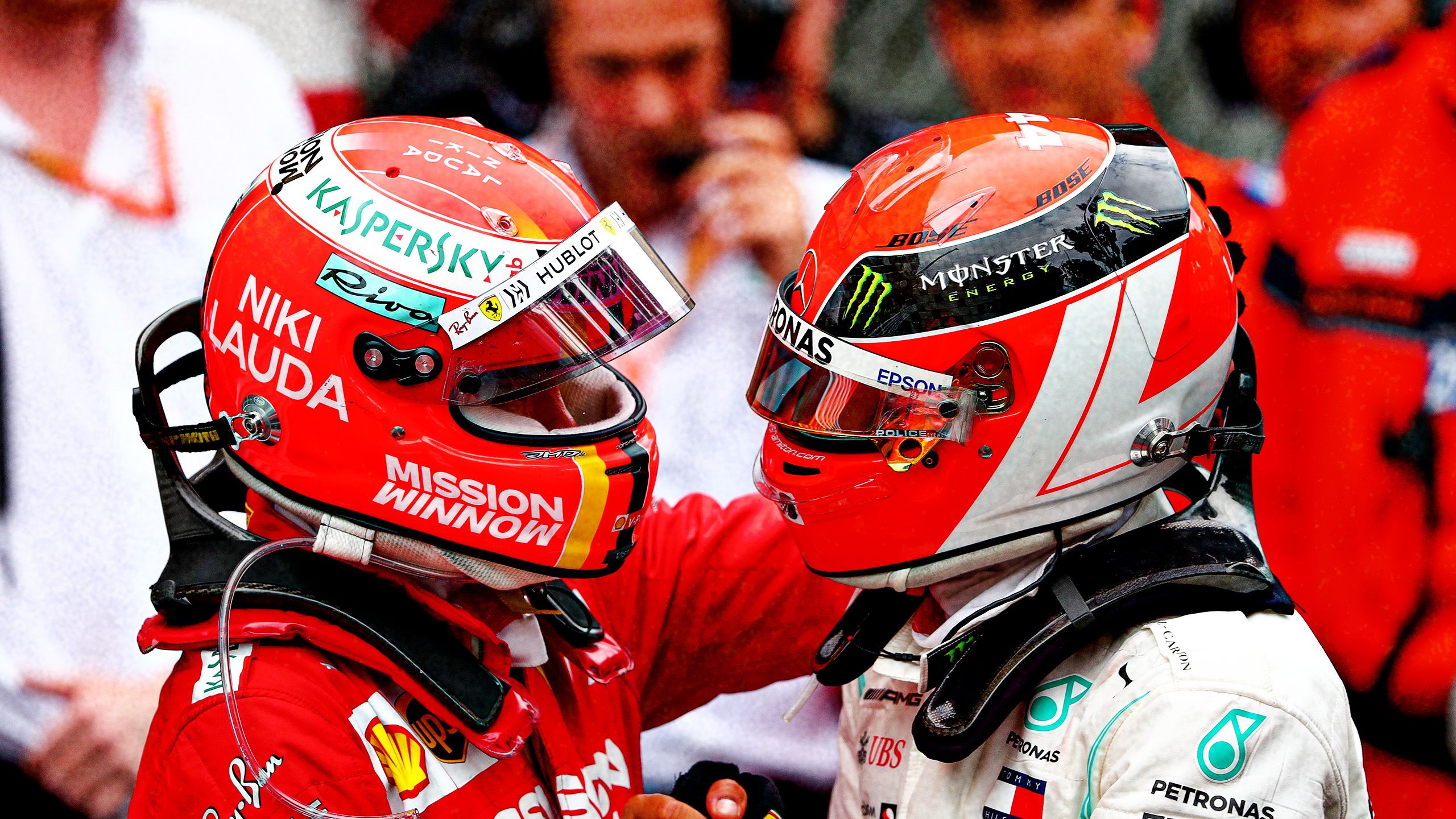

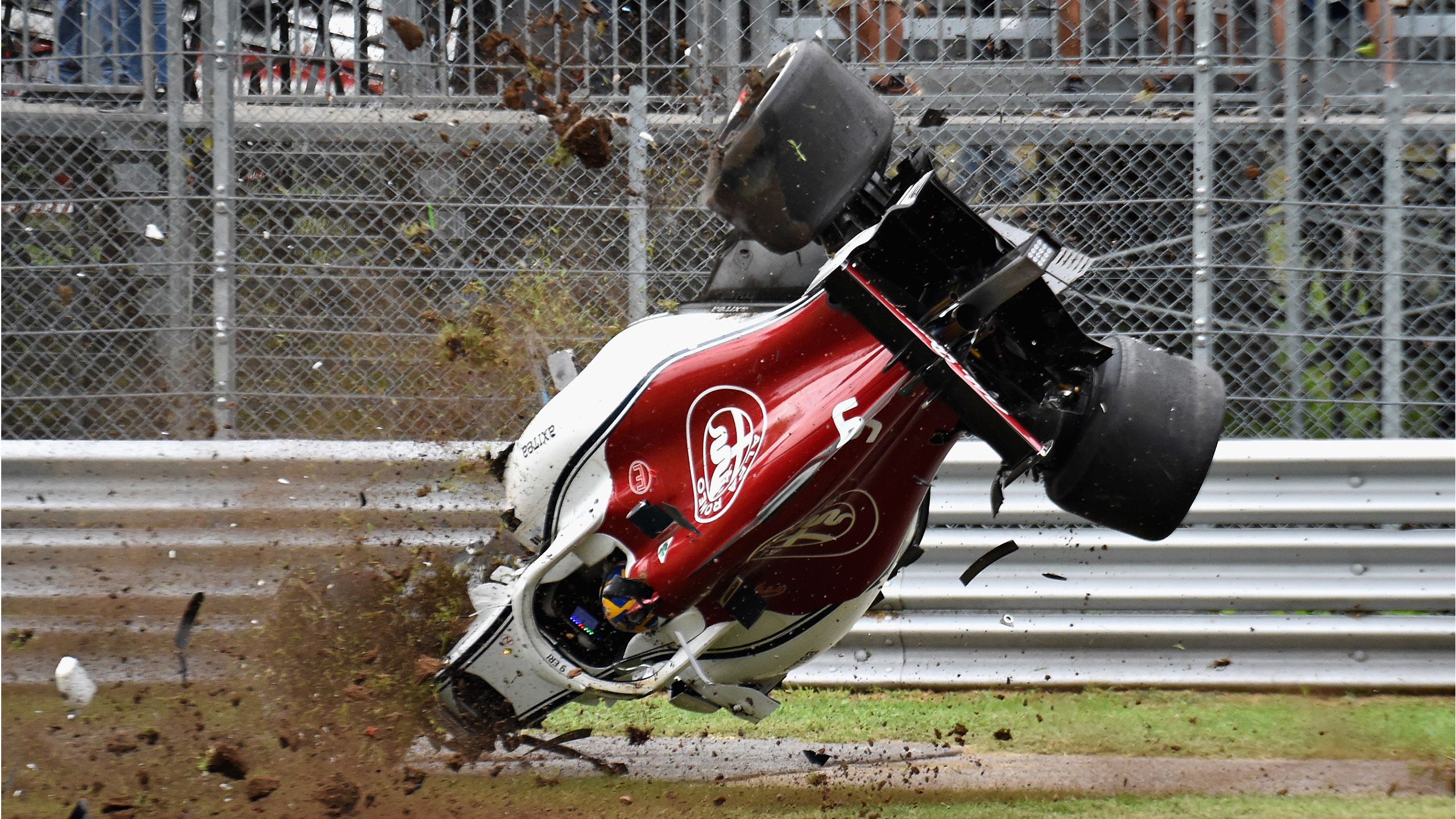
Race winner Lewis Hamilton (right) and second-placed Sebastian Vettel congratulate each other after the 2019 Monaco Grand Prix. Both are wearing helmets paying tribute to three-time world champion Niki Lauda, who had died a few days earlier. At the time, Lauda was Mercedes' non-executive chairman.
It is tradition for the crowds at Monza to gather underneath the podium following the Italian Grand Prix. Here, race winner Lewis Hamilton gives them a soaking in 2015.
The Sauber of Marcus Ericsson somersaulted several times in practice for the 2018 Italian Grand Prix after his DRS overtaking aid did not shut on the approach to the first chicane. The Swedish driver was unhurt.
Red Bull team-mates Max Verstappen and Daniel Ricciardo in Dia de Muertos face paint at the 2016 Mexican Grand Prix
An explosion of emotion for Nico Rosberg and his Mercedes mechanics after he won the 2016 world title in Abu Dhabi
Lewis Hamilton does donuts after winning the fourth of his seven world titles at the 2017 Mexican Grand Prix
Fernando Alonso's McLaren flies over the top of Charles Leclerc's Sauber at the start of the 2018 Belgian Grand Prix, with the new halo head protection device helping to shield his helmet
A furious Sebastian Vettel swaps the 1 and 2 result boards after the 2019 Canadian Grand Prix. Vettel lost victory after being penalised five seconds for dangerous driving against Hamilton
Hamilton leads a wet 2019 German Grand Prix at Hockenheim but Verstappen would win after the Briton twice went off
2020s
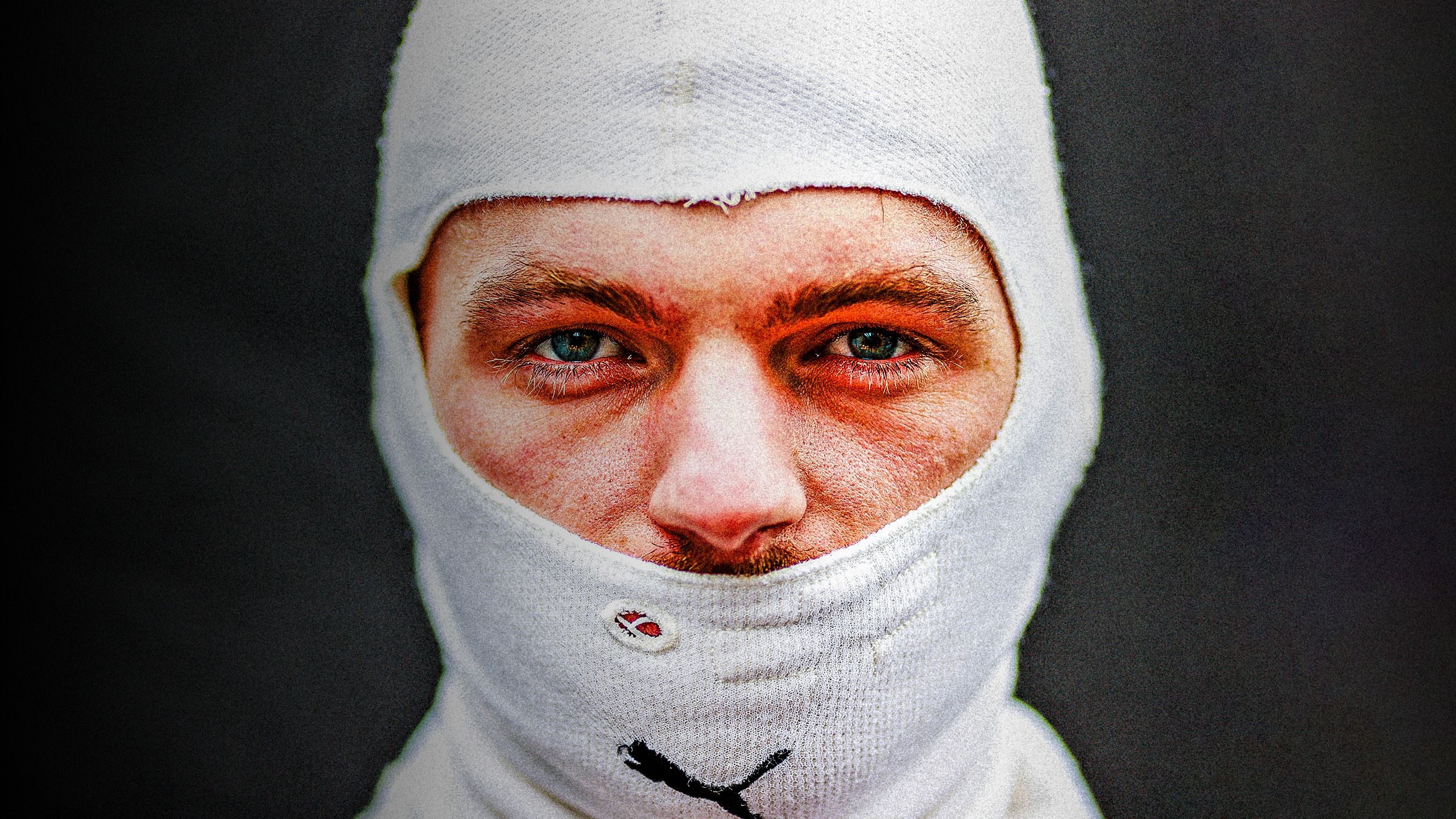
Maxing it out
F1 had to wait a while to get going in the 2020s as the Covid-19 pandemic brought normal life to a shuddering halt, with the Australian Grand Prix cancelled in the early hours of the Friday morning after a McLaren team member tested positive for the virus. A compressed season finally began in July with some new circuits added to the calendar, and a few old favourites returning. Lewis Hamilton winning the world title for a record-equalling seventh time provided a familiar feel, but a new era began in 2021 with Max Verstappen taking his first championship in the most controversial end to a season in history…
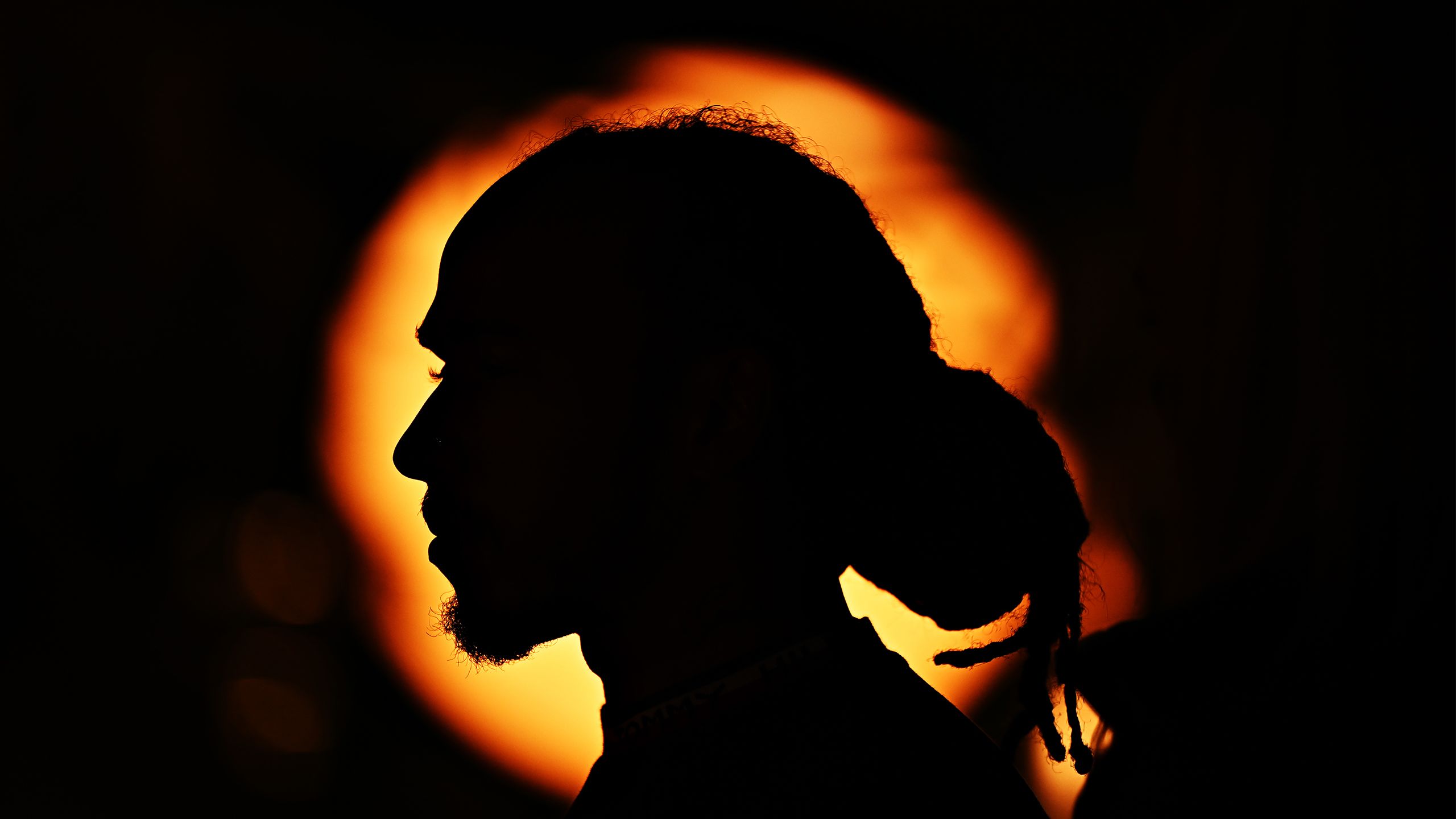

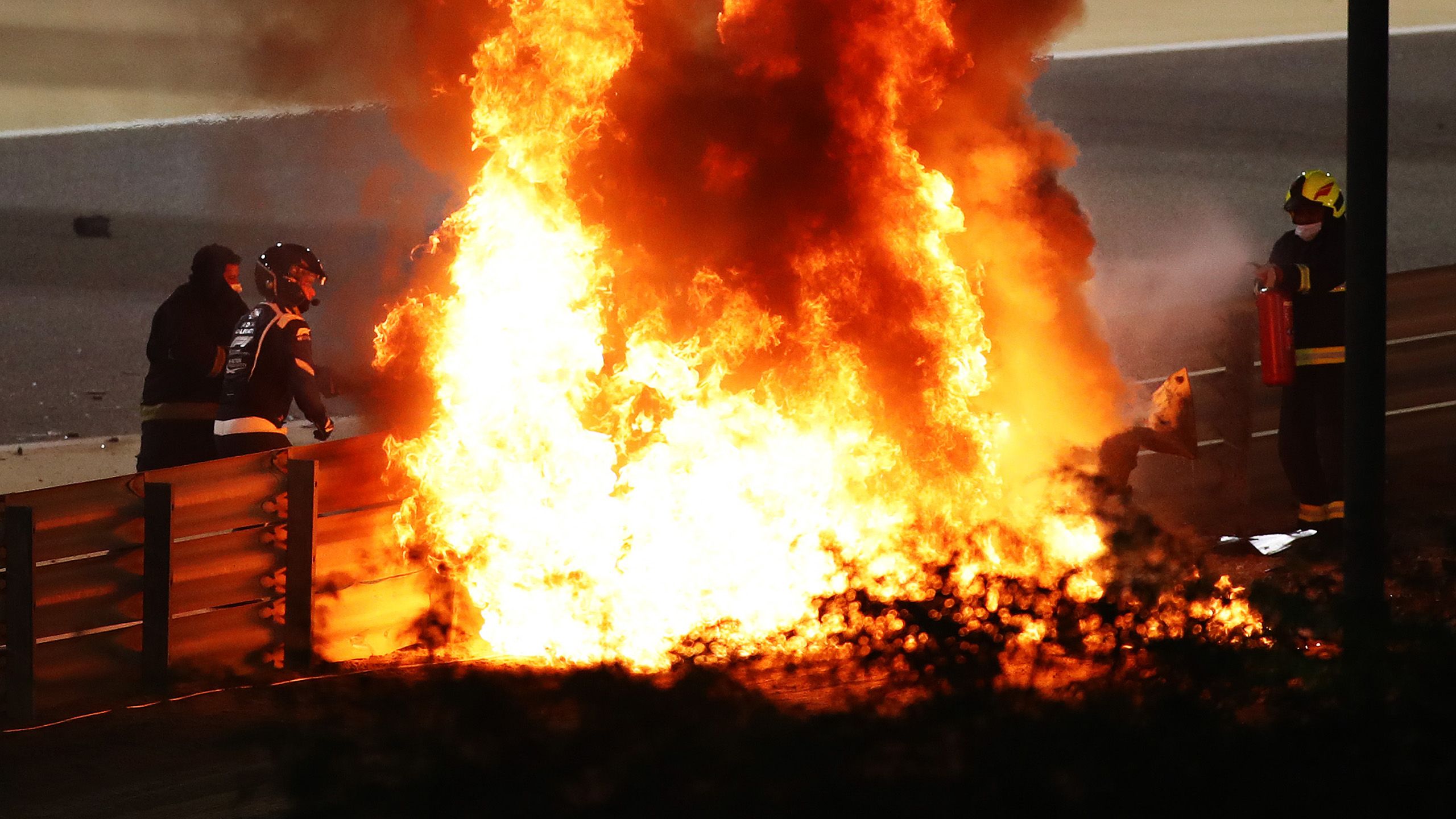
The first and so far only black driver in F1 history, Lewis Hamilton has become increasingly vocal in recent years on issues he considers important, particularly race, diversity and environmentalism. Hamilton was named in Time Magazine's list of the 100 most influential people of 2020 - the year he wore a Black Lives Matter design on his race helmet. The Briton also took a knee on the grid before races and wore anti-racism slogans during the season. He set up the Hamilton Commission to examine the causes of a lack of diversity within motorsport. Its report found wider societal issues were affecting black students' opportunities within the UK motorsport industry, as well as specific barriers within the industry itself. After the report's publication, Hamilton said: "I look back at my young self and wish it was different and I want to be a part of that change. If I can change that, it would be the most valuable thing for me." His Mission 44 charity continues to work to "improve the pipeline" for children from diverse backgrounds to work in industries around science, technology, engineering and mathematics (Stem).
Max Verstappen has been a man in a hurry from a young age, in fact before he was even a man. After just one season of single-seater racing, he joined Red Bull's junior programme and went on to become the youngest F1 driver in history when he competed in the 2015 Australian Grand Prix, aged 17 years and 166 days. A little over a year later he was promoted from Toro Rosso to the senior Red Bull team and immediately became the youngest F1 winner at the 2016 Spanish Grand Prix, aged 18 years and 228 days. Dutchman Verstappen - the son of former F1 driver Jos - kept progressing over the next four years, winning at least two races each season, before reaching the summit of the sport in 2021 having gone toe-to-toe with Lewis Hamilton. It was a thrilling year of back and forth, wheel-to-wheel racing and, at Silverstone, Monza and Saudi Arabia, collisions between the pair. They arrived in Abu Dhabi for the final race of the year level on points but with Verstappen holding the advantage because he had won one more race. Hamilton took the lead at the start and the title seemed to be heading his way until race director Michael Masi failed to apply the rules correctly during a late safety-car period, which allowed Verstappen, on fresh tyres, to overtake him when the race was restarted for one final lap. Mercedes had two protests against the result rejected by stewards and Verstappen had his first title. It would not be his last.
French driver Romain Grosjean survived this inferno at the 2020 Bahrain Grand Prix after his Haas pierced the barriers on the first lap. The twisting force generated split the car in two, releasing fuel, and it burst into flames. Nearly 30 seconds passed before Grosjean climbed clear and was helped over the barrier by FIA doctor Ian Roberts, who was in the medical car that rushed to the scene. Grosjean was taken to hospital with burns to both hands and was possibly saved by the halo head protection device.
Lewis Hamilton wearing a T-shirt with the message Black Lives Matter before the 2020 Hungarian Grand Prix, as well as a mask because of Covid-19 restrictions
Hamilton leans on his Mercedes after winning his seventh world title in Turkey in 2020, equalling Michael Schumacher’s record
Max Verstappen takes out his frustration on his Red Bull's rear left tyre after a late puncture cost him victory in Azerbaijan in 2021
Hamilton holds the Union flag in celebration after winning the 2021 British Grand Prix
Verstappen, Hamilton and Valtteri Bottas on the podium after the 2021 Dutch Grand Prix
Daniel Ricciardo's 'shoey' celebration, where he drank champagne from his shoe, became his signature. The Australian does it here after his final grand prix win in Italy in 2021
Ricciardo won at Monza after Verstappen and Hamilton collided earlier in the race - the rear of the Red Bull landing on the Mercedes
The moment Verstappen passed Hamilton on the final lap of the 2021 season to take the title amid much acrimony
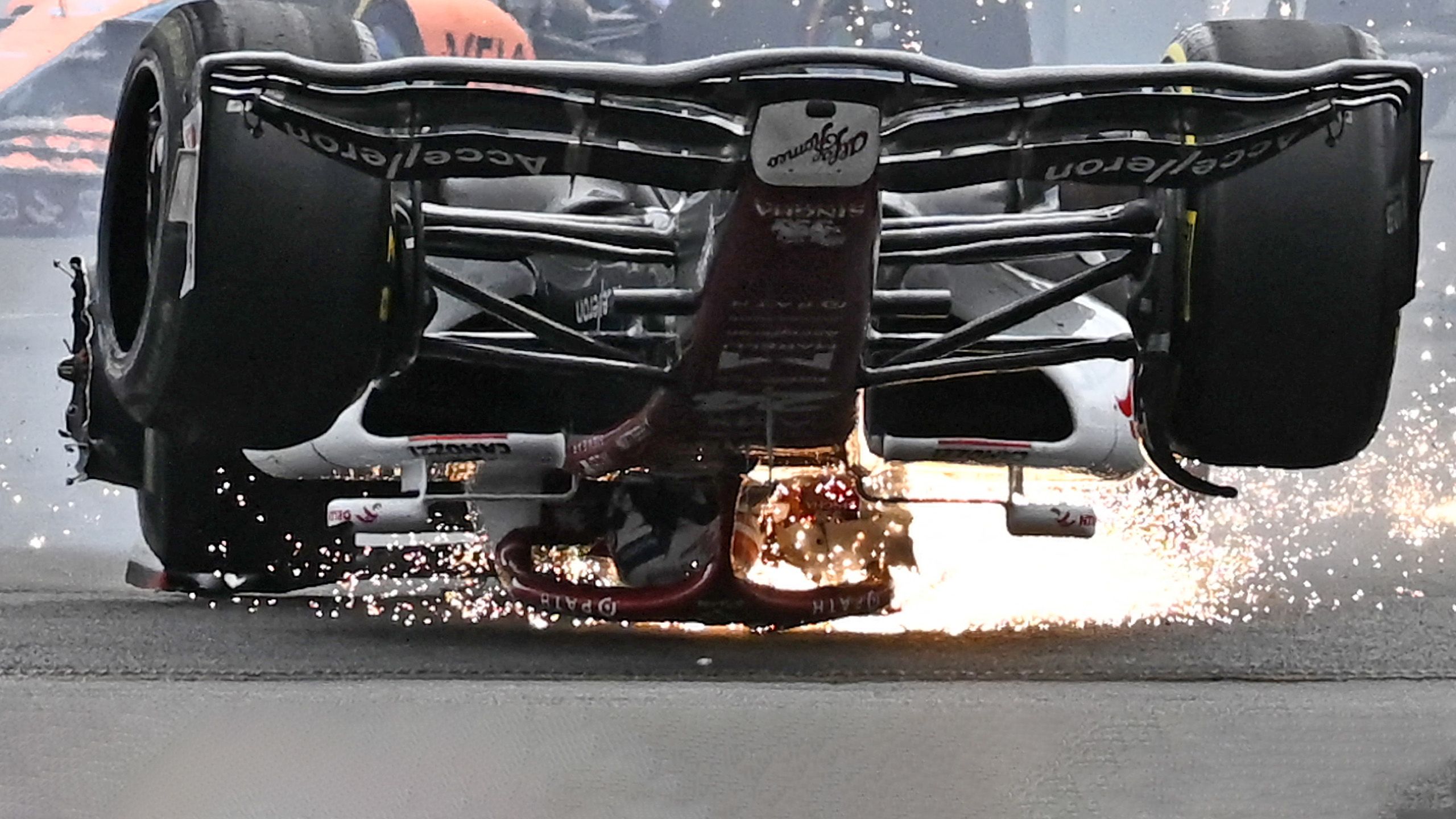


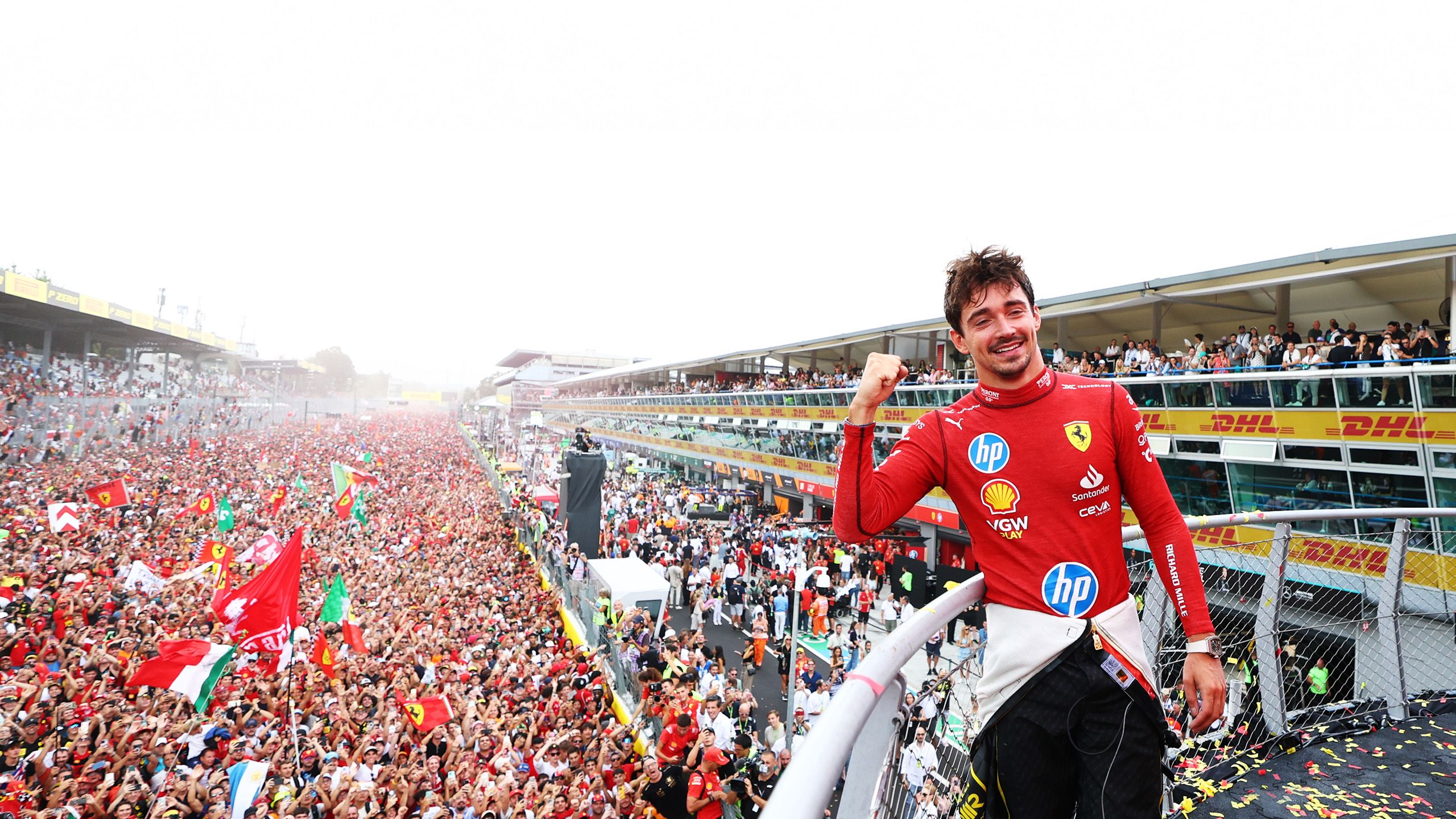
Alfa Romeo's Zhou Guanyu slides upside down across the gravel trap after a multi-car collision at the 2022 British Grand Prix at Silverstone. Zhou's car vaulted the barriers at the first corner, but the Chinese driver was uninjured. He wrote on social media: "Halo saved me today."
Orange smoke has become a familiar sight at the Dutch Grand Prix since it returned to the F1 calendar in 2021, with home hero Max Verstappen winning three years in a row up to and including 2024.
A smile of satisfaction for Max Verstappen after he opened the 2024 season with a win in Bahrain. He would go on to hold off a challenge from McLaren's Lando Norris to win his fourth consecutive drivers' championship. In 2022 and 2023 he obliterated the competition, with the latter the most dominant season in F1 history: Verstappen won 19 of the 22 races and had 21 podiums as he accumulated 575 points out of a possible 620. All are records and, at the age of 27, the Dutchman has the opportunity to set many more.
Charles Leclerc delights the 'tifosi' with victory for Ferrari at the 2024 Italian Grand Prix at Monza. Ferrari are the only team to have competed in every F1 season and have the most grand prix wins and constructors' titles. Their iconic status has attracted the greats of the sport from the very start but they have not won the team championship since 2008, while their most recent drivers' champion was Kimi Raikkonen in 2007. Lewis Hamilton joined Leclerc for 2025 hoping to change all that.
There is little to no margin for error at Monaco, as Carlos Sainz demonstrates here by getting within millimetres of the barrier in 2022
With F1 gaining increasing popularity in the United States, a third race in the country was added in 2023 with a street circuit around the Las Vegas Strip
McLaren's Lando Norris is tossed in the air in celebration after winning his first F1 race in Miami in 2024
Charles Leclerc said winning his home race in Monaco in 2024 was "the ultimate dream"
Max Verstappen counts up his world titles after securing the 2024 championship in Las Vegas
The future of the sport? Mercedes' Kimi Antonelli, 18, celebrates becoming the youngest driver to take pole in any F1 race in the sprint event at the 2025 Miami Grand Prix
Credits
Produced by Alan Jewell
Design by Thiago Braz
Subbed by Reece Killworth
Getty Images contributors
Evening Standard/Hulton Archive, Simon Bruty, AFP, Allsport / HultonArchive, Alvis Upitis, ANDREW MURRAY/AFP, ANP, ANTONIO SCORZA/AFP, Ben Stansall, Bernard Cahier, BETTMANN, Bob Young / Mirropix, Bongarts, Bryn Lennon, Central Press Photos/Hulton Archive, Charles,, Coates, Clive Mason, Clive Rose, COLORVISION/ullstein bild, Dan Istitene, Dan Mullan, Darren Heath, David Lees/Picture Post/Hulton Archive, DAVID TAYLOR, DOMINIQUE FAGET/AFP, Don Price/Fox Photos/Hulton Archive, Fox Photos/Hulton Archive, George Stroud/Express/Hulton Archive, GIORGIO VIERA, GP Library/Universal Images Group, Grand Prix Photo, Harry Dempster/Express, Hoch Zwei/Corbis, Horstmüller/ullstein bild , Hulton Archive, INP/Bettmann Archive, JEAN-CHRISTOPHE VERHAEGEN/AFP, Jean-Marc LOUBAT/Gamma-Rapho, Joe Portlock, JOHN THYS/AFP, Keystone, Keystone-France/Gamma-Rapho, Klemantaski Collection, Lars Baron, LOIC VENANCE/AFP, Mario Renzi, Mark Thompson, Mike Hewitt, Mike Powell, Pascal Rondeau, PATRICK HERTZOG/AFP, PATRICK RIVIERE/AFP, Paul Gilham, Paul-Henri Cahier, Peter J Fox, Peter Van Egmond, PIERRE VERDY/AFP, PIERRE-PHILIPPE MARCOU/AFP, Ronald Dumont/Express, Ronald Startup, Rudy Carezzevoli, Stanley Sherman/Express, STF/AFP, SUTTON IMAGES, Tont Duffy, TOSHIFUMI KITAMURA/AFP , Victor Blackman/Daily Express, Vladimir Rys Photography

